1900
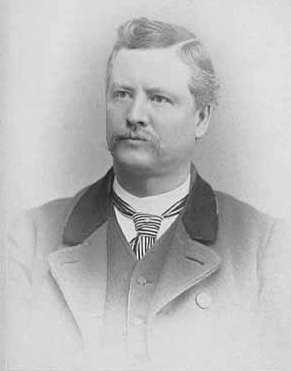
A Dollar A Day Keeps The Doctor Away: Turn-of-The-Century Corruption in MPD
1922
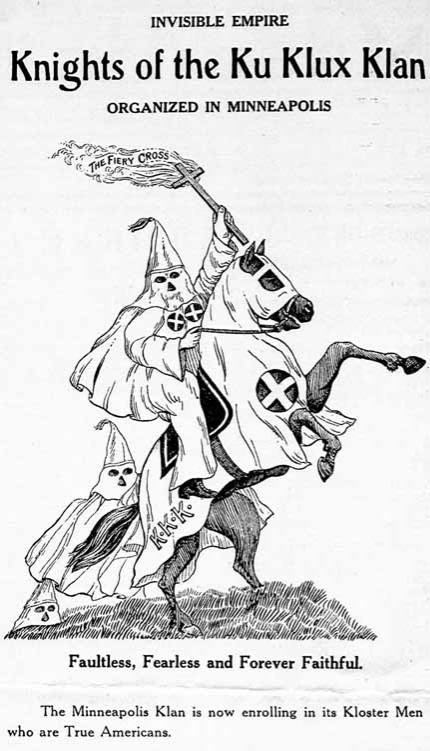
A Day To Remember: Police Brutality on June 20th, 1922
1934
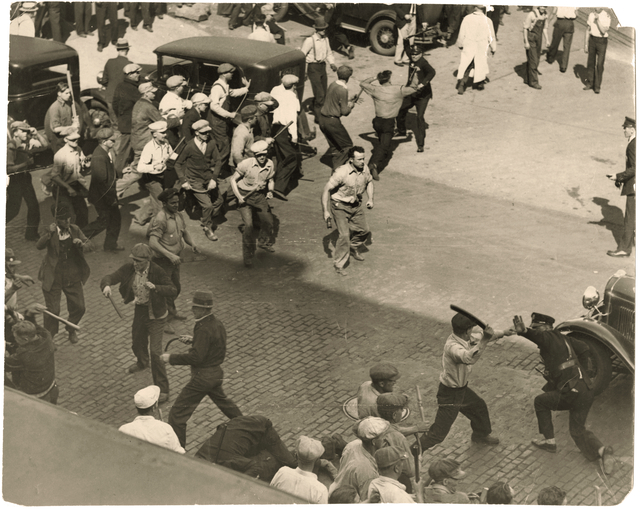
‘Deputies Run’: The 1934 Teamsters Strike
1963
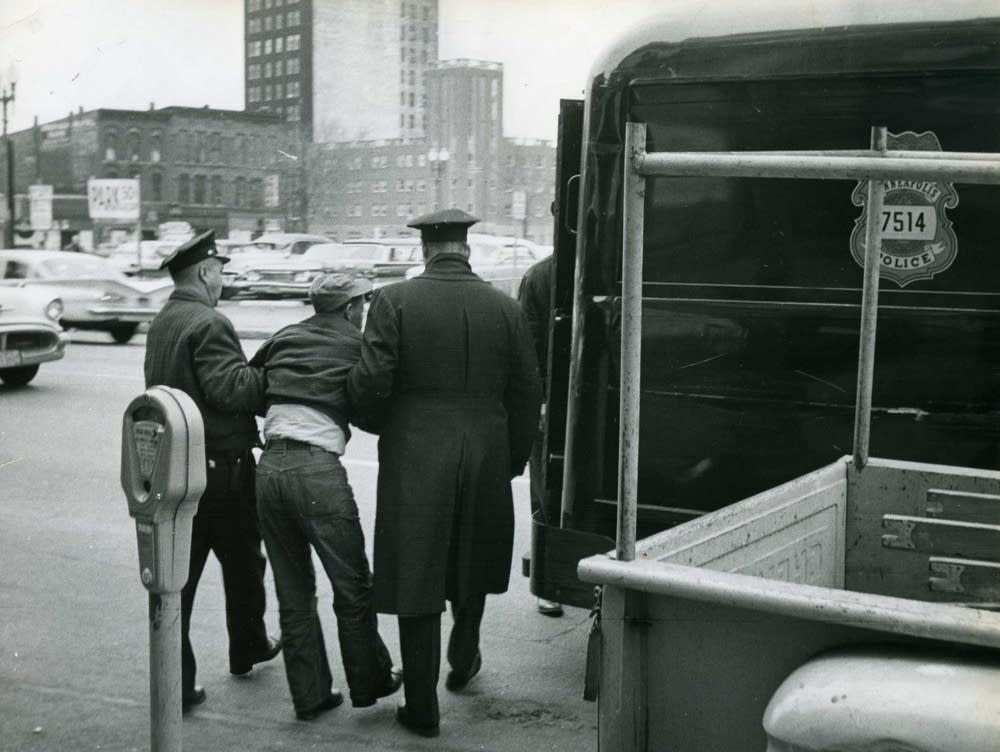
IAU, CRA, OPCR: Police (Un)accountability in Minneapolis
1967
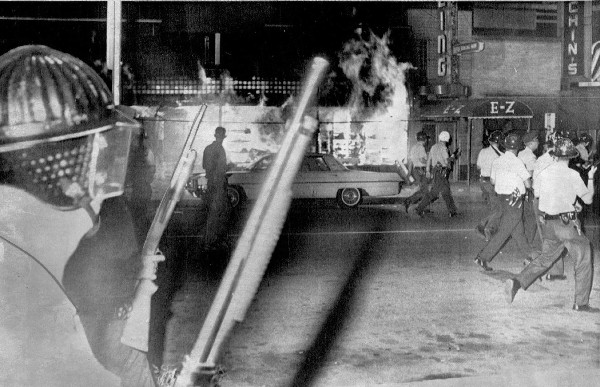
The Fire Last Time: Plymouth Avenue
1968
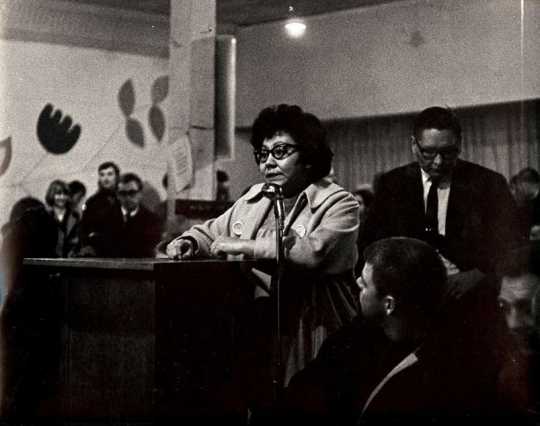
Community Patrols in Minneapolis
1974
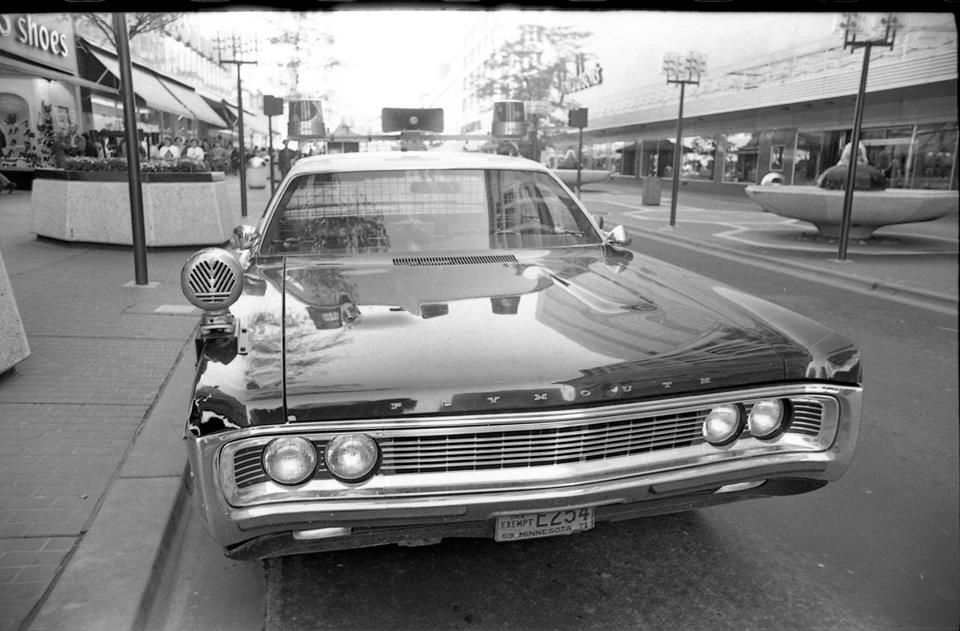
MPD Under Scrutiny
1982
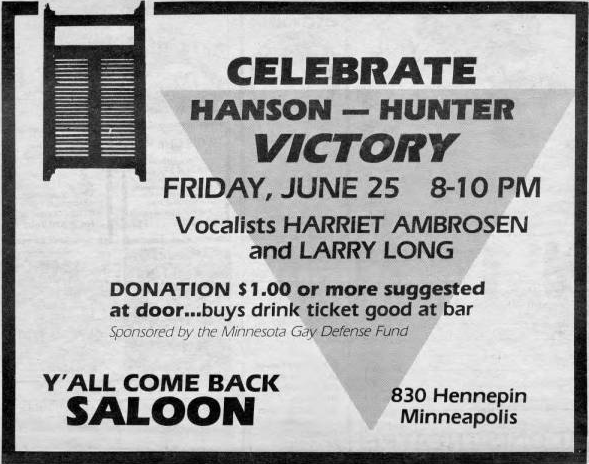
Homophobic Cops: Attacks on Minneapolis’ Queer Community
1989
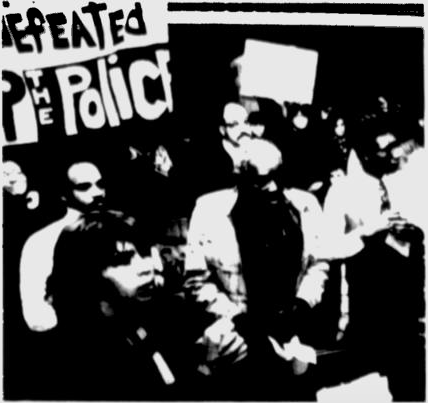
Raid Gone Wrong: The Deaths of Lillian Weiss and Lloyd Smalley
1990
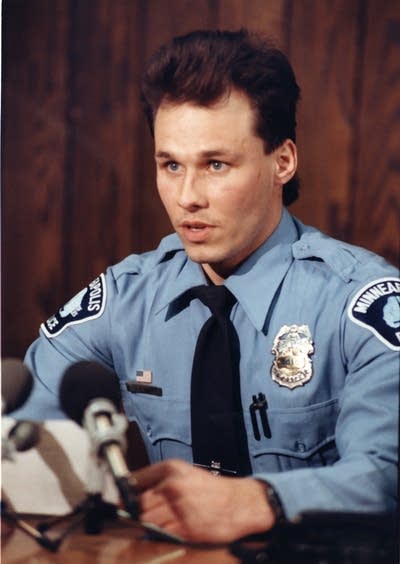
The Murder of Tycel Nelson
1993
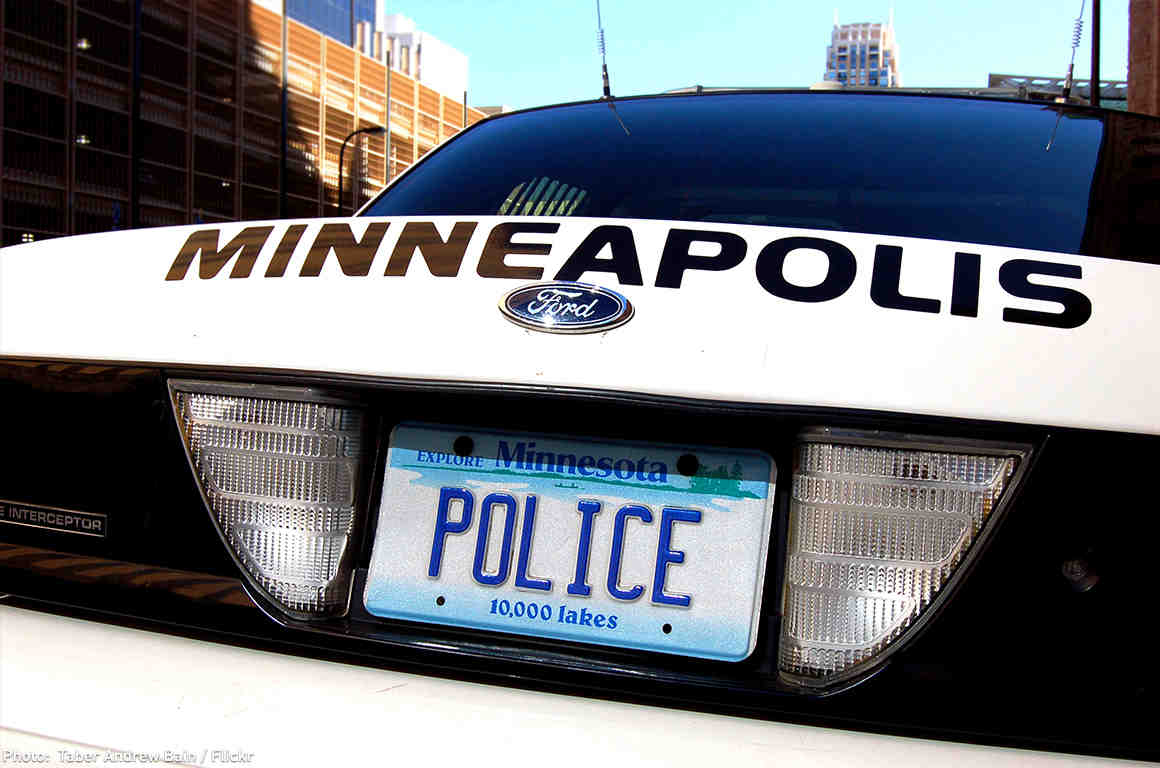
Rough Rides: Brutality Against Native Men
1993
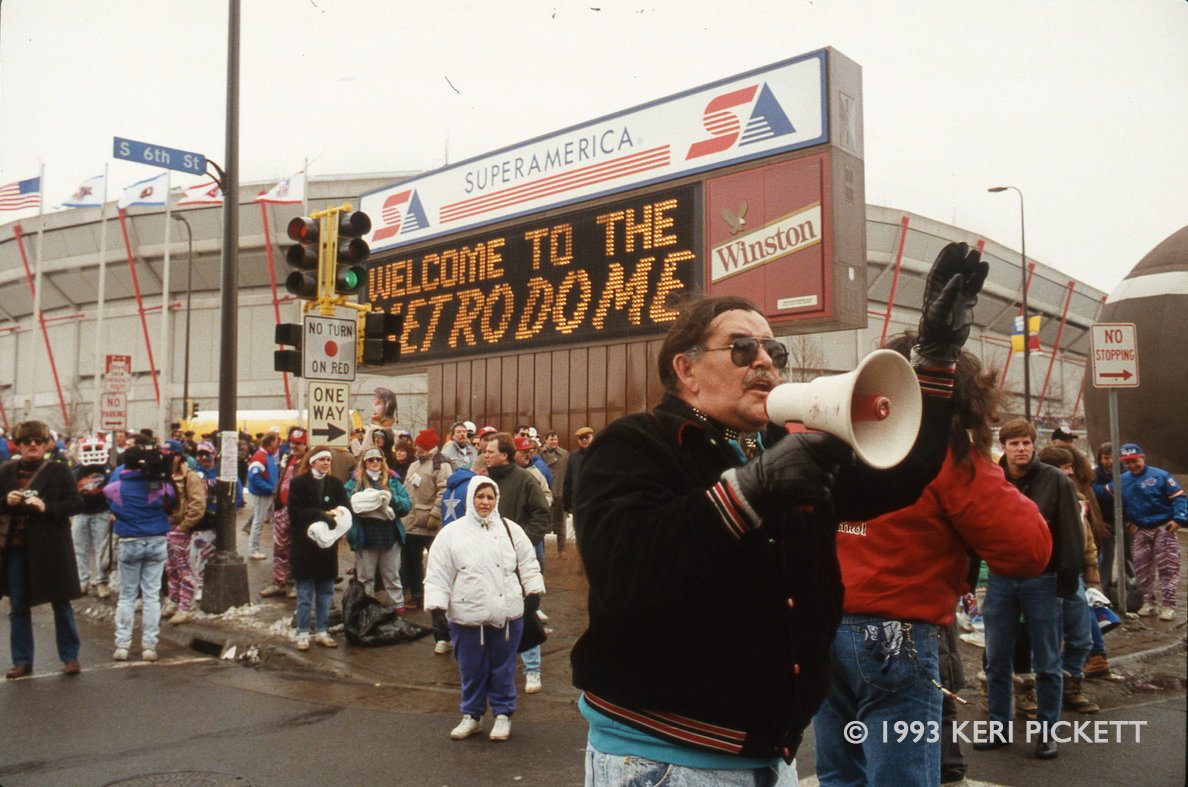
‘Clean’ Records: A Shooting at Little Earth
1994
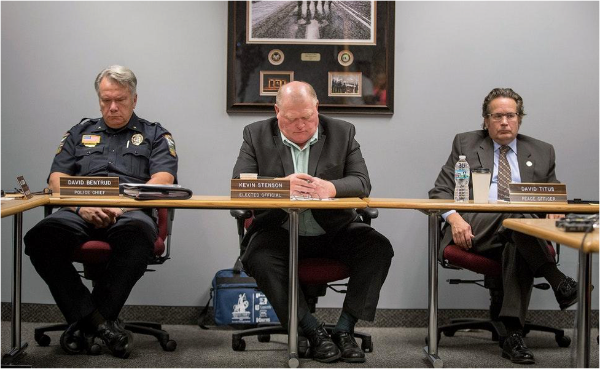
A Kidnapping at Little Earth
1994
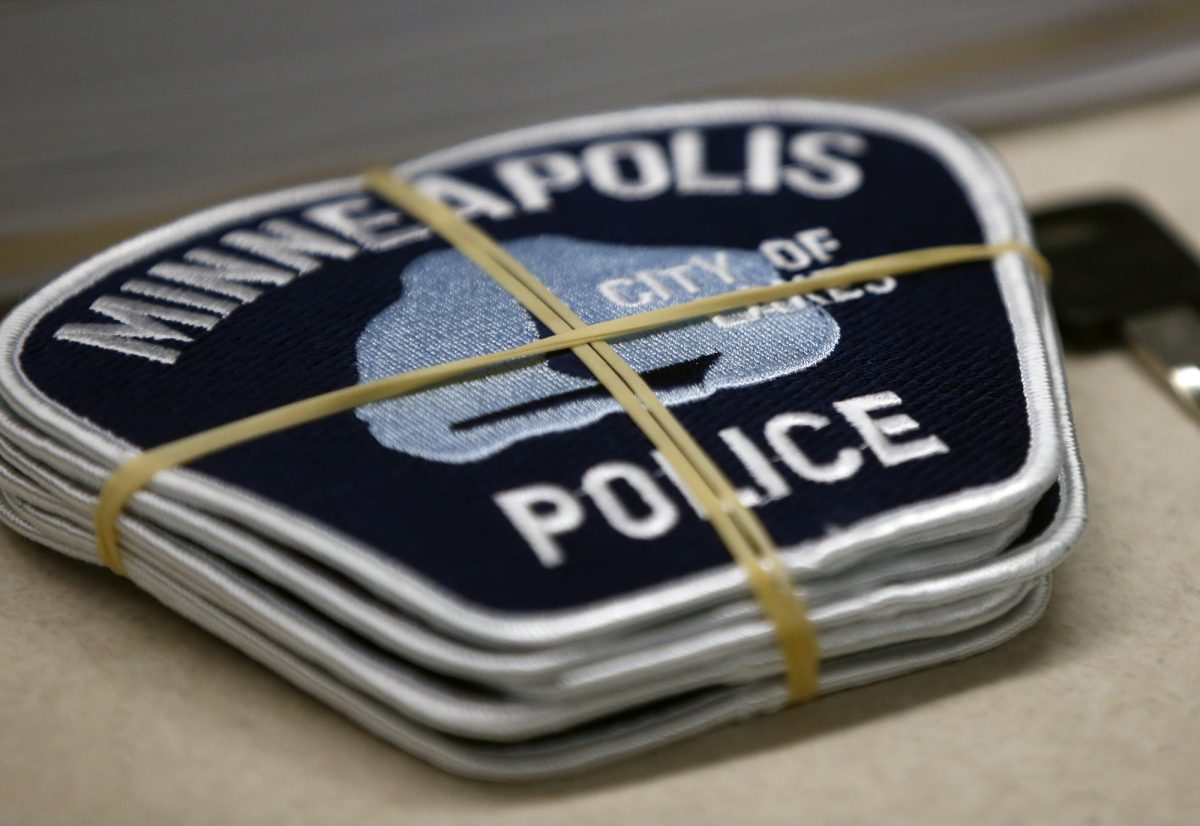
Rapist With a Badge
1998
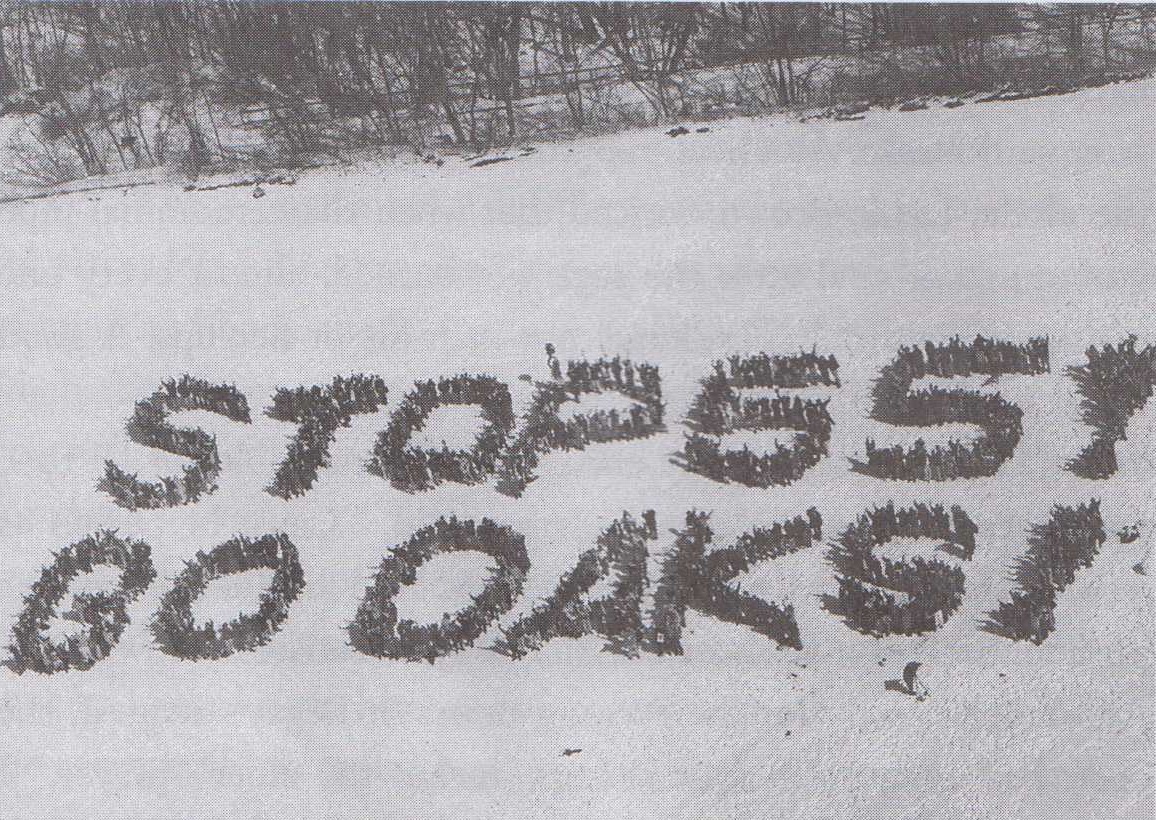
The Destruction of the Minnehaha Free State
2003
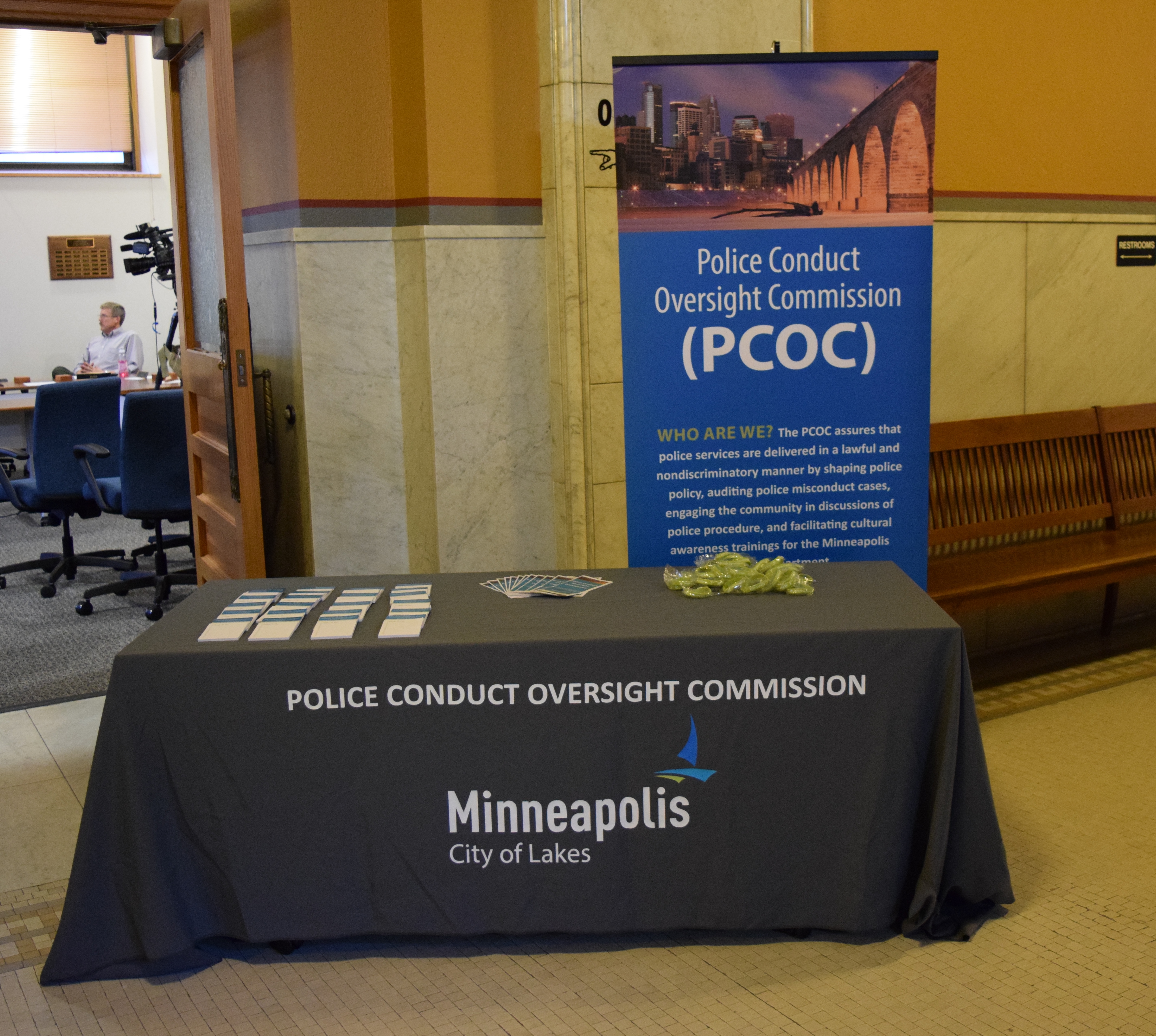
Trust as a Four Letter Word: The PCRC and the PCOC
2004
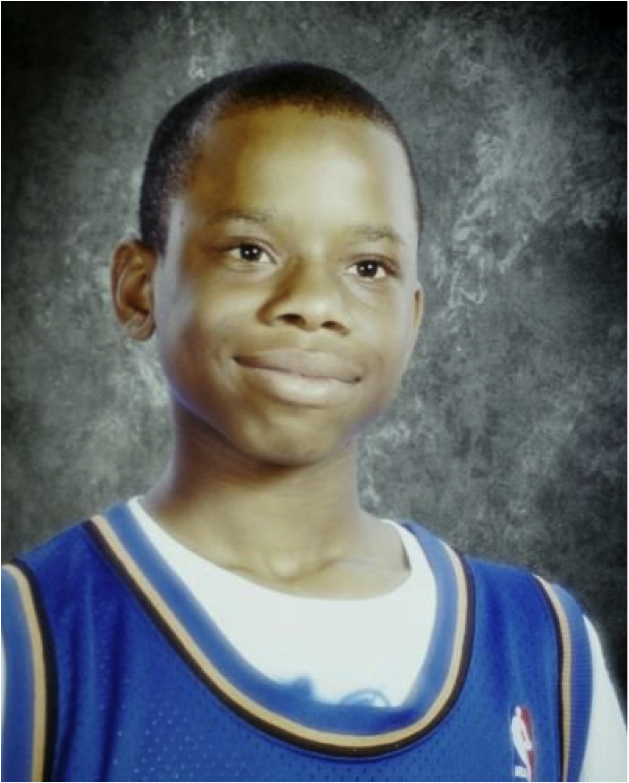
The Murder of Courtney Williams
2006
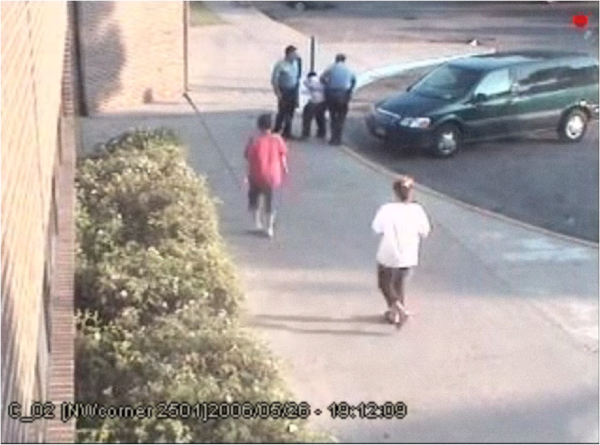
City Heat: The Mistreatment of Juan Vasquez
2006
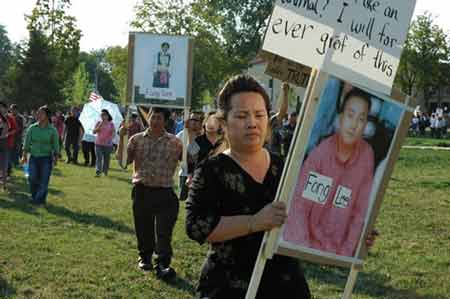
The Murder of Fong Lee
2007
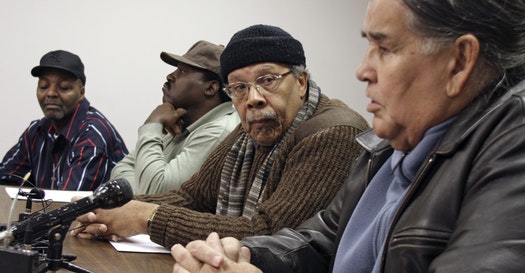
Cops Who Think Cops Are Racist – The Mill City 5
2007
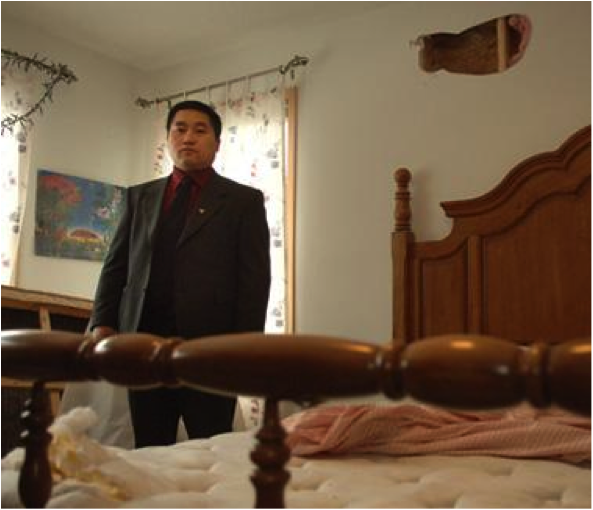
Knock on Wood: A Botched Raid in North Minneapolis
2009
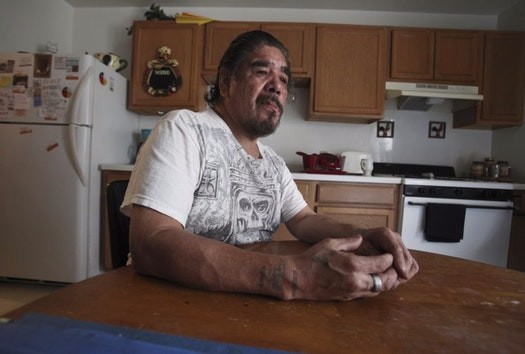
The Metro Gang Strike Force: Honor Among Thieves
2010
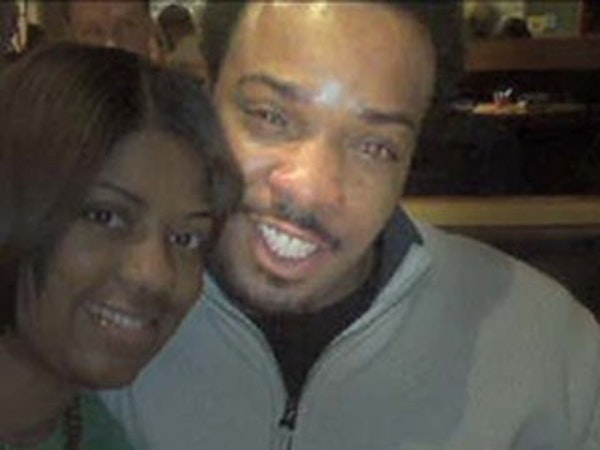
The Killing Of David Smith
2010
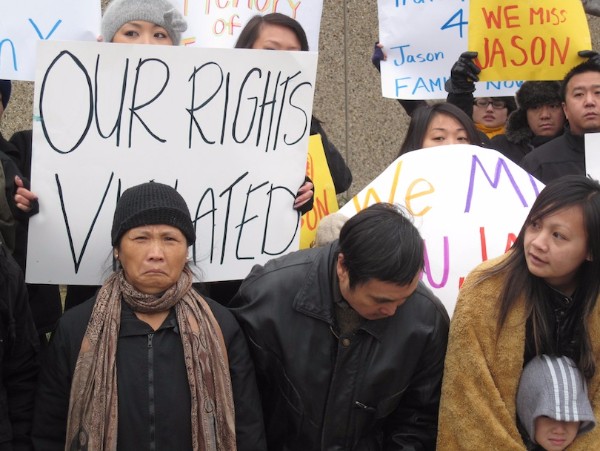
Jason Yang Dead After Encounter with Police
2011
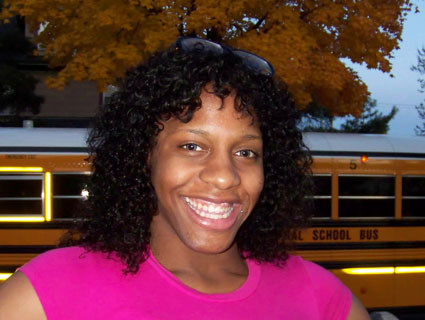
Blaming (and Criminalizing) the Victim
2013
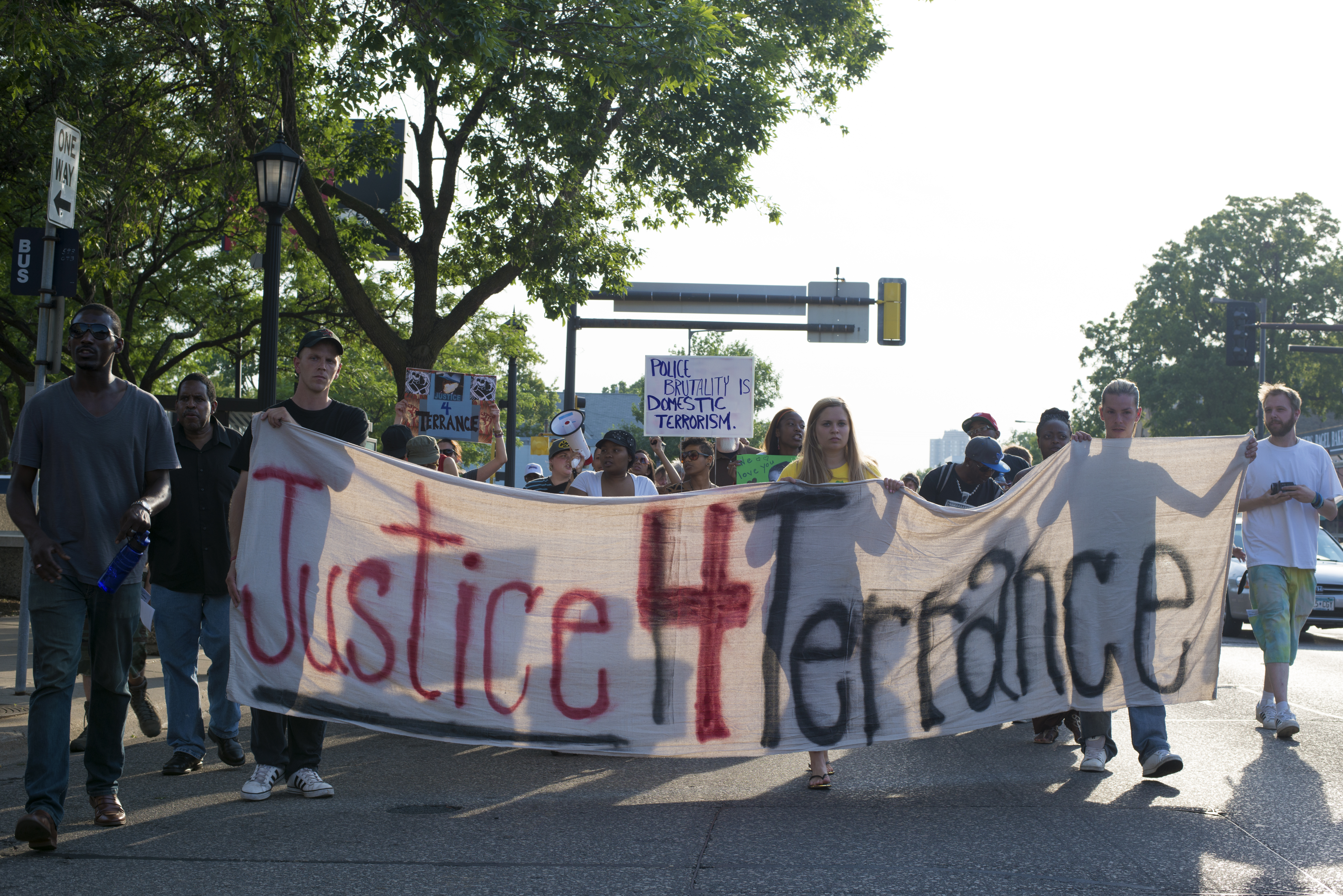
The Deaths of Terrance Franklin and Ivan Romero
2014

#Pointergate
2015
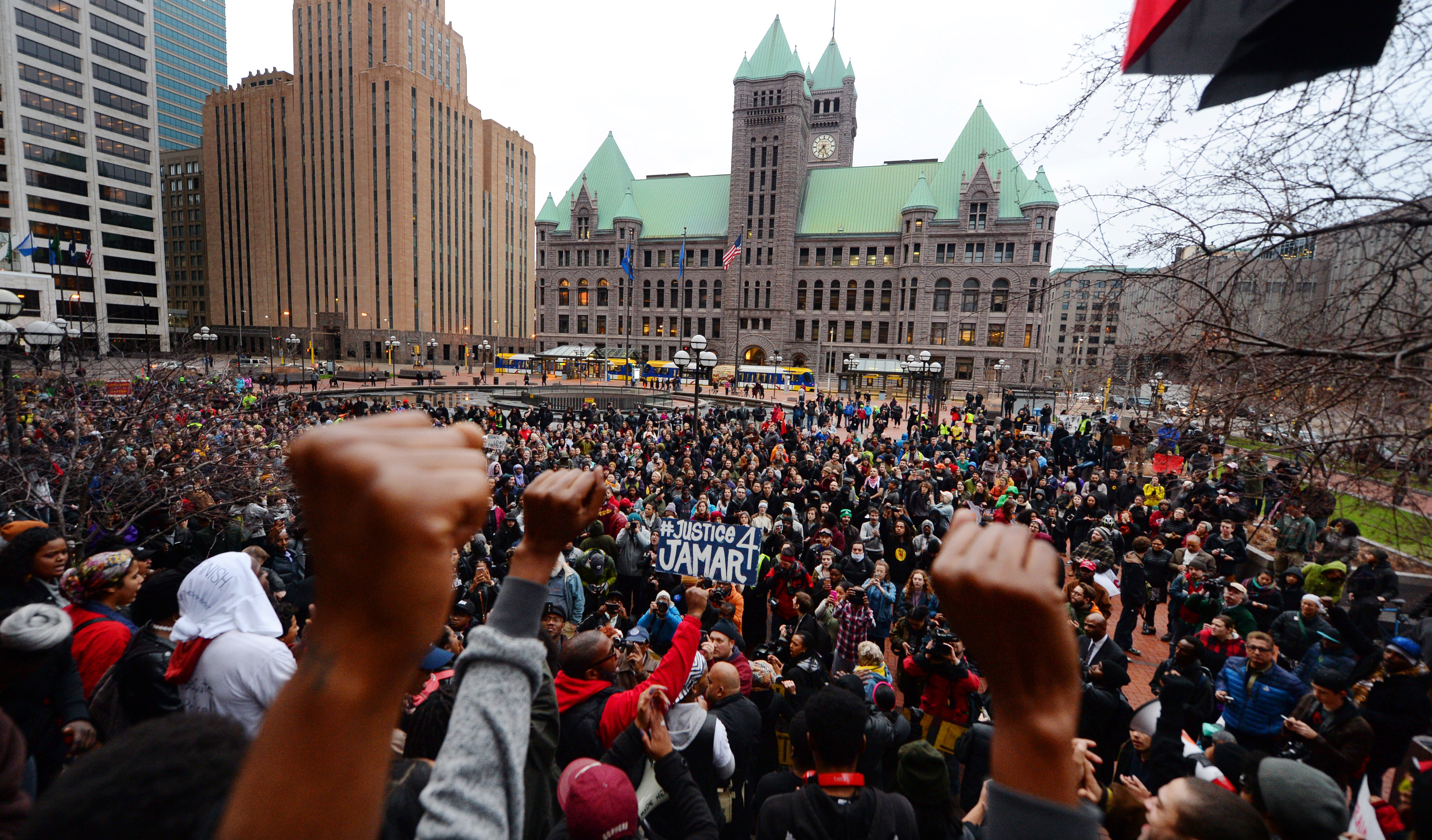
Justice for Jamar
2017

The Murder of Justine Damond
A Dollar A Day Keeps The Doctor Away: Turn-of-The-Century Corruption in MPD
“Burglaries were common. How many the police planned may never be known.”
– Lincoln Steffens, 1903 1Steffens, Lincoln. “The Shame of Minneapolis: The Ruin and Redemption of a City that was Sold Out.” McClure’s Magazine, January 1903

In his fourth term as Mayor of Minneapolis, Albert Alonzo “Doc” Ames (seen here c. 1890) appointed his brother as chief of police and ushered in an era of corruption in the city.
Police departments have a long and storied history of corruption. In many cities around the country, early police departments were part and parcel of the political machine: when a candidate won election, they would appoint their friends and supporters to cushy police jobs and, in turn, cops would use their unique position to help their benefactors stay in power.2Williams, Kristian. O ur Enemies in Blue: Police and Power in America (2015). Chapter 2. Minneapolis was no exception to this; in 1903, thanks to an article written by journalist Lincoln Steffens, the Minneapolis Police Department briefly became the national poster child for bribery, graft, and extortion.
The Minneapolis Police Department briefly became the national poster child for bribery, graft, and extortion.Three years earlier, in 1900, Albert Alonzo “Doc” Ames had been elected to his fourth term as Mayor of Minneapolis. Ames was a physician and surgeon widely known in the community, and had seized upon that opportunity to get elected to office as both a Republican and a Democrat. In his first three terms as Mayor the doctor had been relatively restrained, but knowing this would likely be his last term in office, he “set out upon a career of corruption which for deliberateness, invention and avarice has never been equaled.” 3“The Shame of Minneapolis.” Penny. A Peterson, Minneapolis Madams: The Lost History of Prostitution on the Riverfront (Minneapolis: University of Minnesota Press, 2013), 129.
It all started with his cabinet: Doc Ames appointed his own brother, Fred Ames, to head the Minneapolis Police Department, and staffed it with friends and supporters who had no qualms about using the department for their own enrichment. Of 225 police officers, they immediately fired 107 of the most honest, and charged the remaining officers for the privilege of keeping their jobs. 4“The Shame of Minneapolis.” Penny. A Peterson, Minneapolis Madams: The Lost History of Prostitution on the Riverfront (Minneapolis: University of Minnesota Press, 2013), 129. Filling the jobs was easy: anyone who could pay an admission fee was welcomed onto the force. It was a good investment: under Ames, bribery and extortion were commonplace, and there was a lot of money to be made from policing.
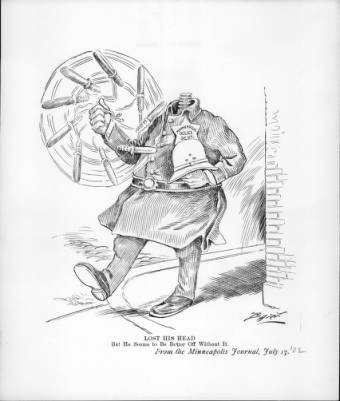
The Minneapolis Police Department patrols with its head missing. The caption reads ‘But He Seems To Be Better Off Without It’. 1902 Cartoon from Hennepin County Library
Gambling houses, illegal bars, and opium dens came directly under police supervision; cops demanded a cut of the profits, and in many cases worked openly with organized crime. Some of the biggest victims were sex workers: they were “fined” monthly for their operations and forced to give “presents of money, jewelry, and gold stars to police officers.” 5“The Shame of Minneapolis.” Penny. A Peterson, Minneapolis Madams: The Lost History of Prostitution on the Riverfront (Minneapolis: University of Minnesota Press, 2013), 129.
Ames also required that brothels submit regularly to visits by physicians he appointed; these physicians charged huge amounts for their services and stopped by as often as they wanted. The corruption even escalated to outright theft; two MPD officers, Charles F. Brackett and Fred Malone, pulled off a string of successful robberies, including a burglary of the Pabst Blue Ribbon company offices, and were never held accountable. 6“The Shame of Minneapolis.”.; Penny. A Peterson, Minneapolis Madams: The Lost History of Prostitution on the Riverfront (Minneapolis: University of Minnesota Press, 2013), 129.
The Hennepin County Sheriff, the Hennepin County Prosecutor, and the Governor all proved unwilling or unable to hold Ames accountable. In the end, the only person who was able to stop him was Hovey C. Clarke, a businessman who was appointed the foreman of the Hennepin County Grand Jury. Clarke led the Grand Jury in a self-financed crusade against the mayor’s administration, indicting most of the city government, including Police Chief Ames, who was sentenced to six and a half years in prison in 1902. 7“The Shame of Minneapolis.” Penny. A Peterson,Minneapolis Madams: The Lost History of Prostitution on the Riverfront (Minneapolis: University of Minnesota Press, 2013), 129.
Doc Ames died in 1911, but the simple lesson he taught us remains: power corrupts.
Unsurprisingly given that he controlled the police department, Fred Ames was able to skip town without much trouble. He returned later and assumed control of MPD once more, but was eventually forced to resign and serve his prison sentence. Doc Ames also fled town, and was eventually caught and convicted of bribery. But the Supreme Court ended up overturning his conviction, and he returned to medical practice in Minneapolis. He died in 1911, but the simple lesson he taught us remains: power corrupts.
1. Steffens, Lincoln. “The Shame of Minneapolis: The Ruin and Redemption of a City that was Sold Out.” McClure’s Magazine, January 1903.
2. Williams, Our Enemies in Blue: Police and Power in America (2015). Chapter 2.
3. “The Shame of Minneapolis.”.; Penny. A Peterson, Minneapolis Madams: The Lost History of Prostitution on the Riverfront (Minneapolis: University of Minnesota Press, 2013), 129.
4. “The Shame of Minneapolis.”
5. Ibid.
6. Ibid.
7. Ibid.
A Day To Remember: Police Brutality on June 20th, 1922
“A negro can get justice in the courts of this city, but many of them suffer severe cruelties before they reach them”
– The Minnesota Messenger, 19221“Negroes Protest Against Police Atrocities In This City,”The Minnesota Messenger, June 23rd, 1922.
Minneapolis was a dangerous place to be Black in the early 20th century. With a viciously racist streak demonstrated by its warm embrace of several Klu Klux Klan chapters, it’s no wonder that by the end of the 1920s, Black residents made up less than one percent of the population.2Delegard, Kirsten. “”A demand for justice and law enforcement”: a history of police and the near North Side -.” The Historyapolis Project. November 20, 2015. Accessed November 15, 2017. http://historyapolis.com/blog/2015/11/20/a-demand-for-justice-and-law-enforcement-a-history-of-police-and-the-near-north-side/. Those that did become residents faced any number of dangers in the city, including a racist police force more than happy to attack “undesirables”. This was exceptionally obvious on June 20th, 1922.
The cops returned an hour later, breaking up another crowd and ordering all Black clubs closed for several days in order to “prevent further trouble.”
An advertisement for the Klu Klux Klan featured in a local Minneapolis paper published mid 1922.
In the early hours of that morning, Minneapolis Police Officer Fitzpatrick, having heard about some Black men inviting white girls to a dance, decided to sweep the streets on the North side. Several men were standing outside the Elk’s Hall, waiting to get take-out meals, when Officer Fitzpatrick demanded that they move on. According to onlookers, Fitzpatrick was visibly drunk.3Delegard, Kirsten. “”A demand for justice and law enforcement”: a history of police and the near North Side -.” The Historyapolis Project. November 20, 2015. Accessed November 15, 2017. http://historyapolis.com/blog/2015/11/20/a-demand-for-justice-and-law-enforcement-a-history-of-police-and-the-near-north-side/. When they refused to move on, Fitzpatrick attacked them, beating several badly and arresting four on charges of disorderly conduct, tossing them into a paddy wagon.4“Crowd of 500 see cop get worst of struggle for gun,”Northwestern Bulletin, June 24th, 1922. The cops returned an hour later, breaking up another crowd and ordering all Black clubs closed for several days in order to “prevent further trouble.” 5“Crowd of 500 see cop get worst of struggle for gun,”Northwestern Bulletin, June 24th, 1922. Of course, it wasn’t clubs causing trouble, but police officers, and they weren’t done yet.
That night, Minneapolis Officer McNamee approached two young Black men in Mill City and demanded that they move on. When they refused, he hit a man with his club. When the man demanded that he stop, McNamee grabbed him and pulled out his revolver. He fired four shots, but the Black man managed to wrestle the gun away from the officer, and demanded he get on the ground. Choosing not to shoot the officer, the man ran off into the night, escaping despite multiple gun squads who were called in as backup.6“Citizens blame patrolman for Negro shooting,” Minneapolis Morning Tribune, June 24th, 1922.
Luckily, a multiracial group of witnesses came forward, writing a public letter to the Morning Tribune explaining exactly what happened and placing all blame for the incident on the police.The Minneapolis Police Department tried to spin the story quickly; the next morning, reports appeared in the Minneapolis Morning Tribune that McNamee had been trying to arrest the man for disorderly conduct as a result of complaints that he had been seen speaking to white girls. 7“Citizens blame patrolman for Negro shooting,” Minneapolis Morning Tribune, June 24th, 1922. Luckily, a multiracial group of witnesses came forward, writing a public letter to the Morning Tribune explaining exactly what happened and placing all blame for the incident on the police.
Leaders in the Black community, outraged at the events of the last day, called for a protest meeting to be held five days later, on June 25th.8“Negroes Protest Against Police Atrocities In This City,”The Minnesota Messenger, June 23rd, 1922 The meeting, facilitated by the Minneapolis chapter of the NAACP, resulted in a resolution demanding the officers be charged for their conduct and seeking an increase of the number of Black women on the police force.9Delegard, Kirsten. “”A demand for justice and law enforcement”: a history of police and the near North Side -.” The Historyapolis Project. November 20, 2015. Accessed November 15, 2017. http://historyapolis.com/blog/2015/11/20/a-demand-for-justice-and-law-enforcement-a-history-of-police-and-the-near-north-side/. Ultimately, these calls did little to effect change in the Minneapolis Police Department, and the next hundred years would be filled with dozens more calls for police accountability.
1. “Negroes Protest Against Police Atrocities In This City,”The Minnesota Messenger, June 23rd, 1922.
2. Delegard, Kirsten. “”A demand for justice and law enforcement”: a history of police and the near North Side -.” The Historyapolis Project. November 20, 2015. Accessed November 15, 2017. http://historyapolis.com/blog/2015/11/20/a-demand-for-justice-and-law-enforcement-a-history-of-police-and-the-near-north-side/.
3. Ibid.
4. “Crowd of 500 see cop get worst of struggle for gun,”Northwestern Bulletin, June 24th, 1922.
5. Ibid.
6. “Citizens blame patrolman for Negro shooting,” Minneapolis Morning Tribune, June 24th, 1922.
7. Ibid.
8. “Negroes Protest Against Police Atrocities In This City.”
9. Delegard, “‘A demand for justice and law enforcement.”
‘Deputies Run’: The 1934 Teamsters Strike
“Suddenly I knew, I understood deep in my bones and blood what Fascism was.”1Eric Sevareid, Not So Wild A Dream, 1946-Eric Sevareid, Noted WWII Reporter, on the aftermath of the 1934 “Battle Of Bloody Friday.”
The turn of the 20th century wasn’t a great time to be a worker in Minneapolis. Hours were long, wages were low, and any attempts at organizing into a union were quickly and brutally put down. The Citizens’ Alliance, a far-right group founded by prominent Minneapolis businessmen in 1903, used infiltration, intimidation, and violence to stop workers from organizing and prevent even reasonable labor reforms.2William Millikan, A Union Against Unions: The Minneapolis Citizens Alliance and Its Fight Against Organized Labor, 1903-1947(Minnesota Historical Society Press, 2003), xxvii. Two of their most powerful tools in doing this were the Minneapolis Police Department and the Hennepin County Sheriff’s Office, both all too happy to help the rich and powerful maintain their hold on the city.
In 1917, the Hennepin County Sheriff’s Office did something even more unbelievable: they gave the Citizens’ Alliance their own army.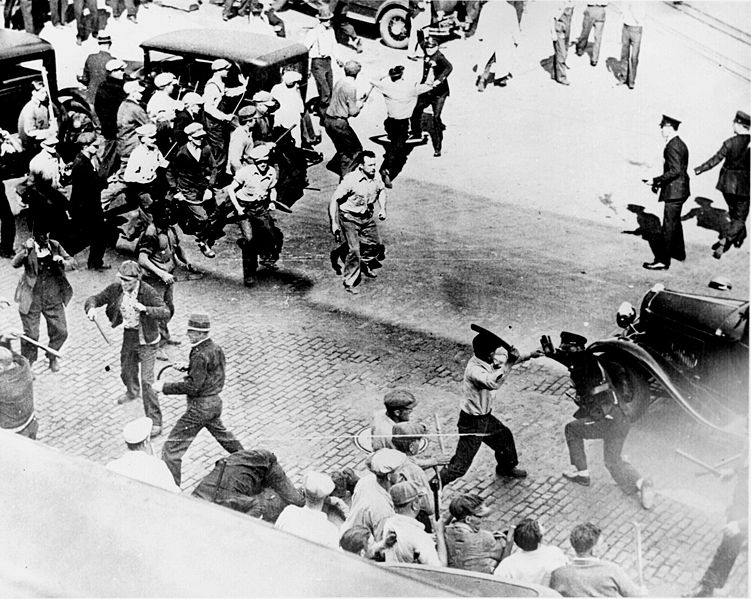
A photo of the escalating violence used against the Teamsters which lead to the “Battle of Bloody Friday,” in 1934 — sixty-seven strikers were shot, and two of them were killed at the behest of a police-led citizen militia.
Local law enforcement has a long history of violence against union members in Minneapolis. In 1889, MPD officers attacked a group of streetcar workers protesting a huge cut in their wages,3Cameron, Linda A. “Twin Cities Streetcar Strike, 1889.” MNopedia. February 8, 2016. Accessed November 15, 2017. http://www.mnopedia.org/event/twin-cities-streetcar-strike-1889. and in 1909, they protected strikebreakers during the machinists’ strike.4William Millikan, A Union Against Unions: The Minneapolis Citizens Alliance and Its Fight Against Organized Labor, 1903-1947(Minnesota Historical Society Press, 2003) 37 In 1917, the Hennepin County Sheriff’s Office did something even more unbelievable: they gave the Citizens’ Alliance their own army.
The Civilian Auxiliary, organized by the Citizens’ Alliance during World War I in April 1917, was a group of local businessmen, most past the age of service, who practiced military drills as a way to better understand how to “back up the boys at the front.”5William Millikan, “The Minneapolis Civic and Commerce Association versus Labor during World War I,”Minnesota History Quarterly, Spring 1986. The true purpose of the Auxiliary became clear later that year when, hearing rumors of a possible strike by streetcar workers, the sheriff deputized every member of the Civilian Auxiliary, giving them the same authority to make arrests and use force that the sheriff himself had. When the strike began in October 1917, 600 CA men armed with rifles and clubs mobilized to protect the railways and quickly suppressed the strike.6Millikan, A Union Against Unions, 125-126 The Civilian Auxiliary was disbanded after the end of WWI, but the Citizens’ Alliance maintained close relations with the police chief and the sheriff, aware that there would always be a need for legal violence against strikers. That relationship would prove particularly useful during what was at the time the largest labor mobilization in Minneapolis’ history: the 1934 Teamsters Strike.
On May 16th, 1934, thousands of truck drivers around the city went on strike as members of Teamsters Local 574, demanding recognition of their union, higher wages, and shorter working hours.7Teamsters. “1934 Minnesota Strike.” Accessed November 15, 2017. https://teamster.org/about/teamster-history/1934 They moved quickly to stop the flow of goods into the city, declaring that no transportation of goods would happen until their demands were met. On the third day of the strike, the Citizens’ Alliance, determined to halt the strike’s momentum, called a public meeting to assemble a force of strikebreakers. Over 700 men joined up – former cops, doctors, lawyers, clerks, salesmen, fraternity brothers, and even inmates from the county jail who were released to fight the strikers.8Sevareid, Not So Wild A Dream, 57. They were quickly sworn in as special officers of the Minneapolis Police Department or deputies of the Hennepin County Sheriff’s Office, and armed with baseball bats, lead pipes, and other improvised weapons.9Millikan, A Union Against Unions, 273. This army, commanded by ex-military men hired for the job by the Citizens’ Alliance, prepared to go to battle against the Teamsters.
On May 22nd, 1934, tensions came to a head. Around noon, the police and their deputies tried to stop strikers from entering the labor headquarters. Instead a group of several thousand strikers forced the deputies back to Third Avenue and Sixth Street, and the confrontation turned into an all-out battle. Deputies and strikers alike were attacked with “hoses, lead pipes, baseball bats, and iron hooks”.10Millikan, A Union Against Unions, xxx But unlike the 1917 Civilian Auxiliary, the CA forces in 1934 were poorly trained and outnumbered, and the few sworn police officers nearby did nothing to intervene. In less than an hour, the strikers utterly crushed the deputies, killing two of them, and securing the streets. In light of the total victory of the union force, the skirmish was later dubbed the “Battle of Deputies Run”.11Blantz, “Father Haas and the Minneapolis Truckers’ Strike of 1934,”1970. Four days later, on May 25th, under pressure from the governor and the national guard, the Teamsters and the CA signed a truce.
But the major issues that had led to the strike were unresolved, and it became immediately clear that the peace would not last. Knowing this, Minneapolis Police Chief Johannes asked the city council for 400 more police officers and a police school, so that the officers could “be trained just like an army to handle riots”.12Millikan, A Union Against Unions,277. His expanded budget request also included $1000 for machine guns and money to buy 800 rifles.13Millikan, A Union Against Unions,277. The Minneapolis Police Department wouldn’t be caught unawares by truck drivers again; when the strike resumed on July 16th, they were ready for war.
On July 20th, a non-union delivery truck escorted by twenty-five squad cars made a delivery to the Slogum-Bergren company in the market district. When the truck attempted to leave, a union truck pulled in front of it, cutting it off and surrounding it with picketers. It was then that the Minneapolis police sprung their trap, jumping out of their squad cars with shotguns and shooting to kill. In what would come to be called the “Battle of Bloody Friday,” sixty-seven strikers were shot, and two of them, John Belor and Henry Ness, were killed.14Millikan, A Union Against Unions, 280
In the aftermath of the shooting, the police reported that they had been “fighting for their lives,” a claim that lost credibility when it was revealed that the vast majority of gunshot wounds were on strikers’ backs – they’d been shot as they were running away.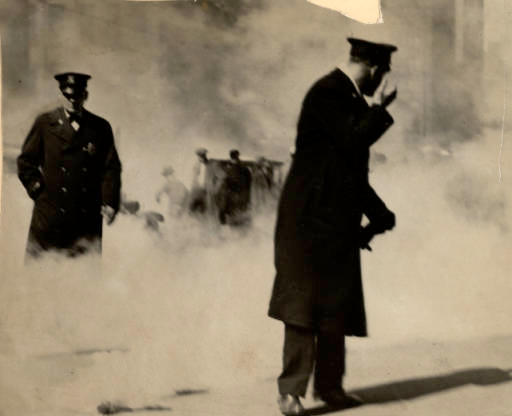
Police and Strikers in Tear Gas Cloud during the 1934 Teamsters Strike.
A National Guard squad appeared within minutes, putting a temporary halt to the fighting. In the aftermath of the shooting, the police reported that they had been “fighting for their lives,”15Sevareid, Not So Wild A Dream, 58. a claim that lost credibility when it was revealed that the vast majority of gunshot wounds were on strikers’ backs – they’d been shot as they were running away.16Blantz, “Father Haas and the Minneapolis Truckers’ Strike of 1934,”279. Commenting on the shooting, CA Secretary Schroeder noted that “if the troops had not come in and interfered, the strike would have been soon over. Because there are very few men who stand up in a strike when it’s a question of they themselves getting hurt and killed”.17Thomas E. Blantz, “Father Haas and the Minneapolis Truckers’ Strike of 1934,”Minnesota History (Spring 1970), 280.
The night of the shooting, union leaders organized a march on City Hall. At least one man wasn’t there: Eric Sevareid, who would become one of the most famous WWII reporters, then a rookie reporter covering the strike for the Minneapolis Star. In his memoir, he recalls visiting the strikers in the hospital that night, a passage worth including in its entirety:
“...the nurses at the city hospital that night demonstrated to me that nearly all the injured strikers had wounds in the backs of their heads, arms, legs, and shoulders: They had been shot while trying to run out of the ambush. Suddenly I knew, I understood deep in my bones and blood what Fascism was. I had learned the lesson in such a way that I could never forget it, and I had learned it in the precise area which is psychologically the most removed from the troubles of Europe—in the heart of the Middle West. I went home, as close to becoming a practicing revolutionary as one of my noncombative instincts could ever get.”- Eric Sevareid, Not So Wild A Dream, 58.
In the end, not even shooting the Teamsters with shotguns could stop them from organizing: the strike continued for nearly another month, with the Citizens’ Alliance, the Teamsters, and the National Guard all fighting for control of the city. Eventually, the will of the Citizens’ Alliance collapsed, and on August 21st, they signed a federally mediated agreement with the Teamsters.18Millikan, A Union Against Unions, 287. “VICTORY” read the headline in a local labor newspaper – the union leaders hadn’t gotten everything they wanted, but they were allowed to hold union elections and quickly set about organizing the trucking agency.
Though the Citizens’ Alliance didn’t disappear overnight, their influence waned after 1934. Unions had won a previously impossible victory in Minneapolis, and more were waiting to be achieved. By WWII, the CA’s anti-union policies had fallen out of favor, and it ceased to become a political power.19Lois Quam and Peter Rachleff, “Keeping Minneapolis an open shop town: the Citizen’s Alliance in the 1930s,”Minnesota History (Fall 1986), 105-117
The masters may have fallen out of favor, but their tools remain. In the eighty-three years since the Teamsters’ Strike ended, the Minneapolis Police Department and the Hennepin County Sheriff’s Office have refined and perfected their crowd control tactics, viciously attacking protestors and community members who advocate for social justice from the Fourth Precinct to the Standing Rock Sioux Reservation. But if even the powerful Citizens’ Alliance can be defeated, perhaps we can look forward to a day where social justice advocates don’t have to fear for their lives while trying to build a better world.
1. Eric Sevareid, Not So Wild A Dream, 1946.
2. William Millikan, A Union Against Unions: The Minneapolis Citizens Alliance and Its Fight Against Organized Labor, 1903-1947(Minnesota Historical Society Press, 2003), xxvii.
3. Cameron, Linda A. “Twin Cities Streetcar Strike, 1889.” MNopedia. February 8, 2016. Accessed November 15, 2017. http://www.mnopedia.org/event/twin-cities-streetcar-strike-1889.
4. Millikan, A Union Against Unions, 37.
5. William Millikan, “The Minneapolis Civic and Commerce Association versus Labor during World War I,”Minnesota History Quarterly, Spring1986.
6. Millikan, A Union Against Unions, 125-126.
7. Teamsters. “1934 Minnesota Strike.” Accessed November 15, 2017. https://teamster.org/about/teamster-history/1934.
8. Sevareid, Not So Wild A Dream, 57.
9. Millikan, A Union Against Unions, 273.
10. Ibid, xxx.
11. Blantz, “Father Haas and the Minneapolis Truckers’ Strike of 1934,”1970.
12. Millikan, A Union Against Unions,277.
13. Ibid.
14. Ibid, 280.
15. Sevareid, Not So Wild A Dream, 58.
16. Blantz, “Father Haas and the Minneapolis Truckers’ Strike of 1934,”279.
17. Thomas E. Blantz, “Father Haas and the Minneapolis Truckers’ Strike of 1934,”Minnesota History (Spring 1970), 280.
18. Millikan, A Union Against Unions, 287.
19. Lois Quam and Peter Rachleff, “Keeping Minneapolis an open shop town: the Citizen’s Alliance in the 1930s,”Minnesota History (Fall 1986), 105-117.
IAU, CRA, OPCR: Police (Un)accountability in Minneapolis
“It is a waste of time for anyone to file a complaint against the police.” 1Furst, Randy. “New Law throws Minneapolis police oversight in turmoil.” Star Tribune, April 6, 2012. Accessed November 15, 2017. http://www.startribune.com/new-law-throws-minneapolis-police-oversight-in-turmoil/146497655/ – Kenneth Brown, former chairman of the Minneapolis Civil Rights Commission, 2012
When police brutality becomes particularly obvious in Minneapolis, community members often call for increased police accountability. The idea is that with the oversight of civilian review boards, internal affairs units, or other administrative bodies, Minneapolis police officers will stay true to their motto, “to protect with courage and to serve with compassion.” Unfortunately, this is almost never the case. From the beginning of MPD’s existence in 1887 to the present day, accountability mechanisms have been nearly useless at preventing police misconduct and brutality.
Despite the brutality of MPD in the late 19th and early 20th century towards people of color, the urban poor, and labor organizers, there was no real investigation of civilian complaints against the department until 1963. Until then, the only way to address police brutality was to report it directly to Department management, who was then free to dismiss it without ever making any record of the complaint.

Police arresting a man who was homeless in Minneapolis during the early 1960s.
In 1963, a Civil Rights investigation found that “minority group members generally [lacked] faith that their complaints would dealt with properly,”2Minnesota State Advisory Committee. Report on police-community relations in Minneapolis and St.Paul. Washington, D.C.: U.S. Commission on Civil Rights. (1965). 6. and recommended the creation of an “impartial police review program with full citizen participation,” a recommendation that was mostly ignored by the city- Minneapolis’ first Civilian Review Board was created in 1963, but it lacked any official status, and ceased to exist after a lawyer found that its members could be sued for defamation.3 Police Civilian Review Working Committee. A Model For Civilian Review of Police Conduct in Minneapolis.1989. For most of the 1960s, there continued to be no group investigating police misconduct complaints.
In the late 1960s The Minneapolis Police Department created the Internal Investigation Unit (now the Internal Affairs Unit, or IAU) to investigate complaints against its own officers, a system widely criticized as ineffective to this day. As a city report put it decades later, “the Internal Affairs Unit has a history of not investigating or thoroughly investigating citizen complaints…officers could not be expected to thoroughly investigate other officers with whom they must later serve.”4Police Civilian Review Working Committee. A Model For Civilian Review of Police Conduct in Minneapolis.1989, 32 Community members have similar complaints about the IAU today.
In 1967, the City Council, pressured by national and local civil rights organizations, established the Minneapolis Civil Rights Commission5 Originally the Human Rights Commission, then the Minneapolis Commission on Civil Rights to investigate civil rights complaints in Minneapolis.6Records of the Way, 1966 – 1972, Location 116.K.14.84 Box 8, Minnesota Historical Society. The Commission, staffed by civilians, was given the power to investigate complaints against police officers. Like the first Civilian Review Board, the Civil Rights Commission was largely ineffective; in 1969, after police violently broke up a protest, community organizations and a Star Tribune editorial called for even greater police oversight.7Police Civilian Review Working Committee. A Model For Civilian Review of Police Conduct in Minneapolis. 1989. 5. Those calls went unheeded.
Meanwhile, the Police Department and the Police Federation fought tooth-and-nail against the commission, refusing to turn over documents, answer questions, or provide testimony in hearings.8Ibid.; Records of the Way, 1966 – 1972, Location 116.K.14.84 Box 8, Minnesota Historical Society. Eventually, they won: in 1969, the head of the police union, Charles Stenvig, was elected mayor, and in 1971, the Civil Rights Commission’s power to investigate police misconduct was revoked by the city.9Police Civilian Review Working Committee. A Model For Civilian Review of Police Conduct in Minneapolis. 1989. 6. For the next two decades, the only agency empowered to investigate police misconduct would be the police department itself.
Out of 81 complaints of excessive use of force, the IAU didn’t find one example of wrongdoing.The Internal Affairs Unit continued to be incredibly ineffective at holding officers accountable through the late 1980s; for example, under the last year of Tony Bouza’s tenure as Minneapolis Chief in 1988, 83.6% of the 231 complaints reviewed by the department’s internal affairs unit were dismissed with no action whatsoever. Out of 81 complaints of excessive use of force, the IAU didn’t find one example of wrongdoing.10Brunswick, Mark. “Watching the police is tough job for everyone.” Star Tribune (Minneapolis), January 29, 1990.
By the end of the 1980s, the killing of Lloyd Smalley and Lillian Weiss, along with the brutal arrests of a number of Black youth in an Embassy Suites downtown, led to renewed calls for civilian oversight. In September 1990, a working committee convened by the city recommended the creation of a new oversight group, one that the police would be required to cooperate with. As always, police fought the proposal tooth-and-nail; the Police Federation argued that civilian review would take away officers’ right to due process11Hotakainen, Rob. “Council panel votes for civilian review of police.” Star Tribune (Minneapolis), January 18, 1990., and the department’s SWAT team threatened to stop working in protest.12Diaz, Kevin, and Jill Hodges. “Members of high-risk police unit threaten work stoppage in protest.” Star Tribune (Minneapolis), January 23, 1990. The City Council passed the proposal anyways, creating the Civilian Review Authority13Originally the Civilian Police Review Authority, which had the ability to investigate complaints and issue “findings of fact,” but left disciplinary action up to the police chief. Unsurprisingly, the Civilian Review Authority also failed to hold police accountable. From 1991 to 1996, the CRA resolved 826 complaints, more than 85% of which weren’t even fully investigated by the board. Even after investigation, only 6% of complaints were sustained.14Minneapolis Civilian Police Review Authority. Redesign Team Report. Minneapolis, MN, 1997. 7. Five years in, not one officer had ever been fired as a result of a CRA complaint.15Minneapolis Civilian Police Review Authority. Redesign Team Report. Minneapolis, MN, 1997. Exhibit H. By nearly all accounts, it never got better; even a police federation spokesperson once described the CRA as “dysfunctional.“16Furst, Randy. “New Law Throws Minneapolis Police Oversight Into Turmoil.” Star Tribune, April 6, 2012. Accessed November 15, 2017. http://www.startribune.com/new-law-throws-minneapolis-police-oversight-in-turmoil/146497655/ Problems with the CRA continued for the next two decades, into the 2010s.
In December 2011, the CRA board issued a public statement declaring that they had no confidence the police chief would impose discipline when they recommended it.17Furst, Randy. “New Law Throws Minneapolis Police Oversight Into Turmoil.” Star Tribune, April 6, 2012. Accessed November 15, 2017. http://www.startribune.com/new-law-throws-minneapolis-police-oversight-in-turmoil/146497655/. In response, the Minneapolis Police Federation, one of the most powerful lobbying groups in the state, pushed the state legislature to pass a law making it illegal for the Civilian Review Authority to issue “findings of fact.” It won overwhelming bipartisan support over vehement opposition of Minneapolis’ Mayor and City Council, and was signed into law by governor Mark Dayton in the spring of 2012. As Councilmember Cam Gordon said at the time, “I think this effectively forces us to re-evaluate the Civilian Review Authority.”18Furst, Randy. “New Law Throws Minneapolis Police Oversight Into Turmoil.” Star Tribune, April 6, 2012. Accessed November 15, 2017. http://www.startribune.com/new-law-throws-minneapolis-police-oversight-in-turmoil/146497655/.
It did. In the fall of 2012, the City Council dismantled the CRA, replacing it with a new oversight agency under the city’s Civil Rights Department: the Office of Police Conduct Review, or OPCR, consisting of two civilians and two police officers. The OPCR remains the city’s police oversight agency today. Predictably, it has many of the same issues as its predecessors, with the vast majority of cases being dismissed without any disciplinary action whatsoever. As of August 2017, 1,175 complaints have been filed with the OPCR since its inception, and only 36 have resulted in disciplinary actions other than coaching. In other words, the likelihood of discipline from a complaint is around 3%.19Office of Police Conduct Review. “Data Portal.” Accessed November 15, 2017. http://www.minneapolismn.gov/civilrights/policereview/archive/index.htm. And that’s only the complaints that are successfully filed. An August 2017 report from the Police Conduct Oversight Commission found that in 13 out of 15 attempts to test-file a complaint at Minneapolis police precincts, people were not given opportunities to file complaints, and information on how to file online was inconsistent.20Cox, Peter. “Issues abound in filing police misconduct complaints, report finds.” Minnesota Public Radio. August 9, 2016. Accessed November 15, 2017. https://www.mprnews.org/story/2016/08/09/issues-found-filing-minneapolis-police-misconduct-reports
It’s clear that the acorn doesn’t fall far from the oak tree. Since 1963, five separate bodies have been formed to reign in the Minneapolis Police Department. Every single one of these bodies has been weak, unhelpful, and ineffective. When any one of them managed to gain even limited power over police misconduct, the police federation worked successfully to limit their power and destroy them. Our history is clear: real police accountability, civilian review or otherwise, is impossible within our current system.
1. Furst, Randy. “New Law throws Minneapolis police oversight in turmoil.” Star Tribune, April 6, 2012. Accessed November 15, 2017. http://www.startribune.com/new-law-throws-minneapolis-police-oversight-in-turmoil/146497655/.
2. Minnesota State Advisory Committee. Report on police-community relations in Minneapolis and St.Paul. Washington, D.C.: U.S. Commission on Civil Rights. (1965). 6.
3. Police Civilian Review Working Committee. A Model For Civilian Review of Police Conduct in Minneapolis.1989.
4. Ibid, 32.
5. Originally the Human Rights Commission, then the Minneapolis Commission on Civil Rights
6. Records of the Way, 1966 – 1972, Location 116.K.14.84 Box 8, Minnesota Historical Society.
7. Police Civilian Review Working Committee. A Model For Civilian Review of Police Conduct in Minneapolis. 1989. 5.
8. Ibid.; Records of the Way, 1966 – 1972, Location 116.K.14.84 Box 8, Minnesota Historical Society.
9. Police Civilian Review Working Committee. A Model For Civilian Review of Police Conduct in Minneapolis. 1989. 6.
10. Brunswick, Mark. “Watching the police is tough job for everyone.” Star Tribune (Minneapolis), January 29, 1990.
11. Hotakainen, Rob. “Council panel votes for civilian review of police.” Star Tribune (Minneapolis), January 18, 1990.
12. Diaz, Kevin, and Jill Hodges. “Members of high-risk police unit threaten work stoppage in protest.” Star Tribune (Minneapolis), January 23, 1990.
13. Originally the Civilian Police Review Authority.
14. Minneapolis Civilian Police Review Authority. Redesign Team Report. Minneapolis, MN, 1997. 7.
15. Ibid. Exhibit H.
16. Furst, Randy. “New Law Throws Minneapolis Police Oversight Into Turmoil.” Star Tribune, April 6, 2012. Accessed November 15, 2017. http://www.startribune.com/new-law-throws-minneapolis-police-oversight-in-turmoil/146497655/.
17. Ibid. 18 Ibid. 19 Office of Police Conduct Review. “Data Portal.” Accessed November 15, 2017. http://www.minneapolismn.gov/civilrights/policereview/archive/index.htm.
18. Ibid.
19. Office of Police Conduct Review. “Data Portal.” Accessed November 15, 2017. http://www.minneapolismn.gov/civilrights/policereview/archive/index.htm.
20. Cox, Peter. “Issues abound in filing police misconduct complaints, report finds.” Minnesota Public Radio. August 9, 2016. Accessed November 15, 2017. https://www.mprnews.org/story/2016/08/09/issues-found-filing-minneapolis-police-misconduct-reports.
The Fire Last Time: Plymouth Avenue
“A fire of protest against indignity and denial is burning here as it is elsewhere. It will not be extinguished by promises or pledges that are not translated into action.”1Camille Venee Maddox, “‘The Way Opportunities Unlimited Inc.’: A Movement for Black Equality in Minneapolis, MN 1966-1970,” (Honors Thesis, African American Studies, Emory University 2013), 34.– Minneapolis Mayor Arthur Naftalin, 1963 inaugural speech
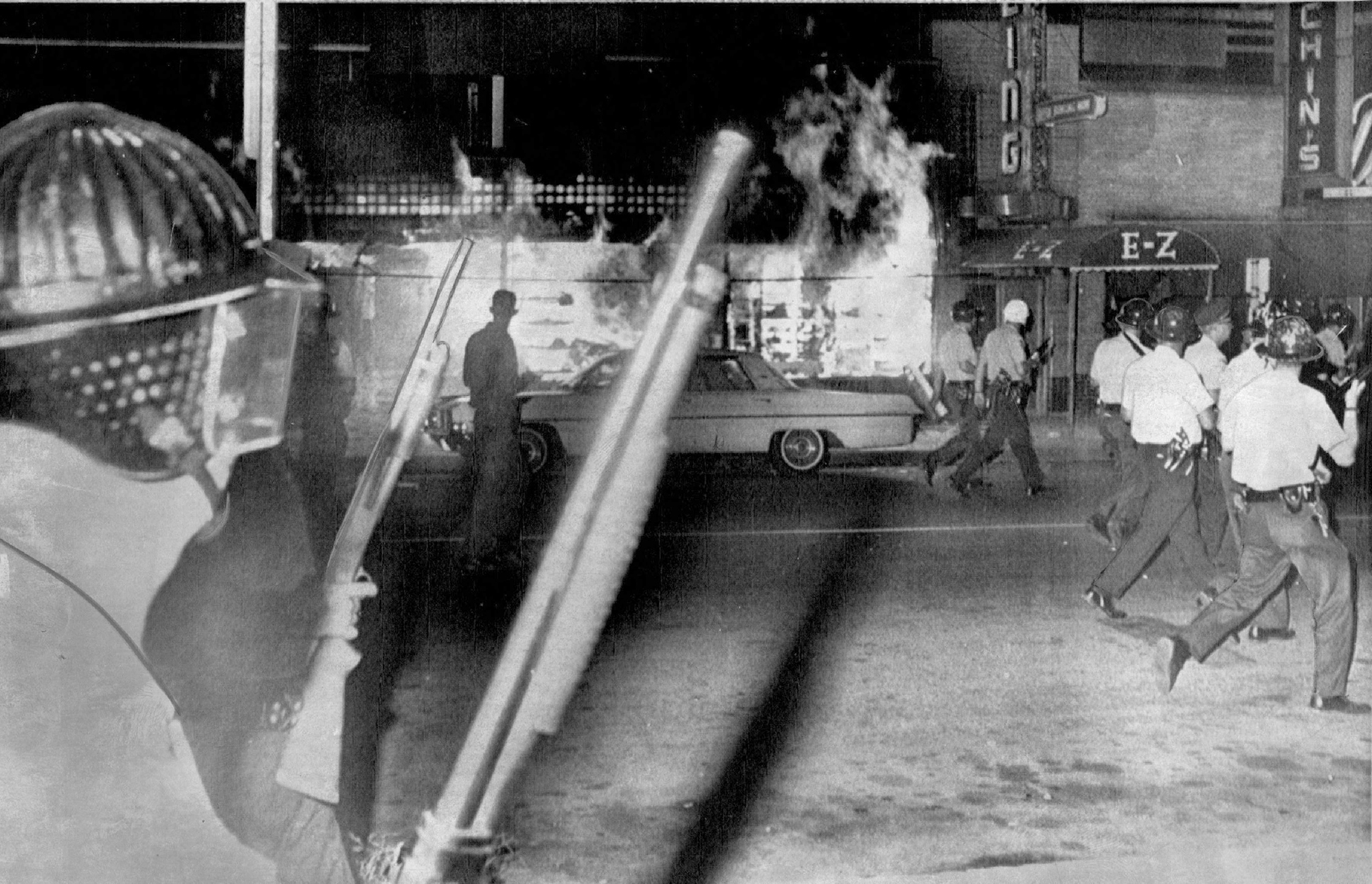
Taken July 21, 1967 —
Minneapolis police officers passed a blazing grocery store on Plymouth Avenue on the city’s North Side.
By the mid-1960s the Civil Rights movement was in full swing in Minneapolis, with Black residents on the North Side demanding jobs, decent housing, and an end to police violence. On July 15th, 1967, the evening of one of the Aquatennial parades in Minneapolis, things were particularly bad for Black community members. Bus drivers refused to let Black residents board buses back to North Minneapolis, forcing many residents to walk five or six miles back to their homes as white passerby threw bottles and other debris at them. Police officers stood by, refusing to intervene. The worst incident happened on Plymouth avenue in North Minneapolis, where four white boys beat a Black boy while police watched. When the Black boy asked for a ride to the hospital from the police, they replied only, “Nigger, go home; there is nothing wrong with you.”2Camille Venee Maddox, “‘The Way Opportunities Unlimited Inc.’: A Movement for Black Equality in Minneapolis, MN 1966-1970,” (Honors Thesis, African American Studies, Emory University 2013), 34. The mayor and city council refused to acknowledge police wrongdoing that night.
Things got even worse on July 19th. Minneapolis Police Department officers violently broke up a fight downtown, throwing a number of Black community members to the ground. Meanwhile, a bar owner, who had previously shot two black patrons and had not been held accountable by the police, shot another Black community member. In response, and in protest of systemic racism more broadly, Black community members, along with poor white and Native community residents, rose up and began setting fire to businesses that had previously discriminated against Black residents. Mayor Art Naftalin immediately dismissed the riots as “not related to deficiencies or neglect” and “simply a product of lawlessness,” in the Minneapolis Tribune and worked with the governor to call in the National Guard. 29 arrests were made.3Camille Venee Maddox, “‘The Way Opportunities Unlimited Inc.’: A Movement for Black Equality in Minneapolis, MN 1966-1970,” (Honors Thesis, African American Studies, Emory University 2013, 38; Records of the Way, 1966 – 1972, Location 116.K.14.84 Box 8, Minnesota Historical Society.
Despite his claims that the riots had nothing to do with deficiencies in Black communities, after the riot had ended Mayor Naftalin met with hundreds of community members, who made demands that would help Minneapolis end racial inequality once and for all. On July 28th, 1967, the mayor took many suggestions back to the city council, proposing a broadened civil rights ordinance, the creation of a cadet system for the police department, a renewed effort to hire minority police officers, and other reforms.4Mayor Naftalin Proposes Program Of Depth To Meet Community Problem,”Minnesota Spokesman-Recorder, August 3rd, 1967. But these proposals, ignoring the underlying issues that lead to the riot, ultimately failed to make a major difference on the North side. Fifty years later, many of the same conditions that led to the 1967 Riot are still a constant in Minneapolis.
1. Camille Venee Maddox, “‘The Way Opportunities Unlimited Inc.’: A Movement for Black Equality in Minneapolis, MN 1966-1970,” (Honors Thesis, African American Studies, Emory University 2013), 34.
2. Ibid.
3. Ibid, 38; Records of the Way, 1966 – 1972, Location 116.K.14.84 Box 8, Minnesota Historical Society.
4. “Mayor Naftalin Proposes Program Of Depth To Meet Community Problem,”Minnesota Spokesman-Recorder, August 3rd, 1967.
Community Patrols in Minneapolis
The Soul Force
In the wake of the 1967 Riot on Plymouth Avenue, community leaders created many new institutions to fight back against the racism and police brutality that had prompted the protests. One of these programs was the “Black Patrol,” started by a group of community members that patrolled Black communities in much the same way that the Black Panthers were doing in Oakland.1Camille Venee Maddox, “‘The Way Opportunities Unlimited Inc.’: A Movement for Black Equality in Minneapolis, MN 1966-1970,” (Honors Thesis, African American Studies, Emory University 2013), 57. In partnership with “The Way,” an anti-racist community center, they also established the “Soul Force” in 1968, a patrol group dedicated to nonviolence and made up of volunteers of many racial backgrounds.2Ibid, 58.
The Soul Force and the Black Patrol worked together. Often, the Soul Force would be the first on the scene, and then would call the Black Patrol or Police for situations that required the use of force.3“The Soul Force: A Program of “The Way” Community Center”, Records of The Way, Inc., Minneapolis 1966-1974. Gale Family Library, Minnesota Historical Society, St. Paul, MN. They had many successful interventions, including preventing a white man from leveling a shotgun at a crowd of Black people, and preventing community-police tension from erupting into a brawl at the Aquatennial parade.4Ibid. Another important effect the Soul Force had was on its white volunteers: many of them came to understand systemic racism while volunteering with the patrol. After seeing Minneapolis Police Department Officers break up a flag football game, one white volunteer remarked, “that to me illustrated how police treat Black people. Such a thing would never have happened in a white community.”5A. Karim Ahmed, “Side by Side On the North Side,” Davis, Records of The Way Inc. It wasn’t long before the Soul Force and the Black Patrol would be joined by another group: the AIM Patrol.
The AIM Patrol

A woman speaking to the crowd at an AIM Forum on police brutality, c. 1968. Photograph by Roger Woo, courtesy of the American Indian Movement Interpretative Center.
In July of 1968, a group of around 200 community members gathered on Plymouth Avenue to address the ongoing racism and violence experienced by the Native community in Minneapolis.6Wilson, Brianna. “AIM Patrol, Minneapolis.” MNopedia. Accessed December 28, 2016. http://www.mnopedia.org/group/aim-patrol-minneapolis. Though they didn’t know it yet, the group would eventually become known as the American Indian Movement, or AIM, a national movement of Native resistance. The meeting came in an environment of extreme levels of criminalization and incarceration of Natives – though they made up only ten percent of the city’s population, seventy percent of the Minneapolis jail population was Native, and three of AIM’s founders – Clyde Bellecourt, Eddie Benton-Benei, and Dennis Banks, had been incarcerated.7Birong, Christine. “The Influence of Police Brutality on the American Indian Movement’s Establishment in Minneapolis, 1968-69.” GRADUATE INTERDISCIPLINARY PROGRAM IN AMERICAN INDIAN STUDIES. April 6, 2009. Accessed November 15, 2017. http://arizona.openrepository.com/arizona/bitstream/10150/193405/1/azu_etd_10464_sip1_m.pdf. p. 31.
So it’s probably unsurprising that when the community gathered that day, their number one priority was to fight police brutality – as Dennis Banks put it, “I’m tired of seeing the paddy wagon parking on Franklin at 9 o’clock and waiting to load up my people… The Negroes got rid of that sort of thing on Plymouth Av. with their patrol, and we’re going to have to do the same thing.”8Ibid, 48. Their solution was a militant cop watch group called the AIM Patrol.
The AIM Patrol was a network of volunteers who would patrol the Phillips neighborhood in Minneapolis, monitoring and documenting police activity while stepping into crises to de-escalate and resolve conflicts.9Ibid. 42. Patrol members wore red jackets and drove in red cars to identify themselves to neighbors and cops while on watch.
Their impact was dramatic: after 5 weeks of patrolling, AIM leaders announced that there had been no Native people arrested – a far cry from the five or six a day that had been arrested before the Patrol was established. After the first six months of patrolling, the percentage of the jail population that was Native had dropped from 70% to 10%.The Patrol worked: they were often quicker to respond to calls in Native communities than the Minneapolis Police Department, and sometimes MPD even called them for help.10Ibid. 51. Unfortunately, the cooperation didn’t last long: officers grew to resent the “interference” of the AIM Patrol, and often harassed their members, lurking outside the Patrol’s headquarters, beating activists, and even throwing members of the Patrol in the Mississippi River.11Ibid. 55.
The AIM Patrol’s first iteration disbanded around 1975, but its legacy remains – there have been multiple revivals of the Patrol in Minneapolis since the 1970s, most recently in 2010, and AIM activists remain a constant presence in the fight for Indigenous sovereignty.12Wilson, Brianna. “AIM Patrol, Minneapolis.” MNopedia. Accessed December 28, 2016. http://www.mnopedia.org/group/aim-patrol-minneapolis.
1.Camille Venee Maddox, “‘The Way Opportunities Unlimited Inc.’: A Movement for Black Equality in Minneapolis, MN 1966-1970,” (Honors Thesis, African American Studies, Emory University 2013), 57.
2.Ibid, 58.
3.“The Soul Force: A Program of “The Way” Community Center”, Records of The Way, Inc., Minneapolis 1966-1974. Gale Family Library, Minnesota Historical Society, St. Paul, MN.
4.Ibid.
5.A. Karim Ahmed, “Side by Side On the North Side,” Davis, Records of The Way Inc.
6.Wilson, Brianna. “AIM Patrol, Minneapolis.” MNopedia. Accessed December 28, 2016. http://www.mnopedia.org/group/aim-patrol-minneapolis.
7.Birong, Christine. “The Influence of Police Brutality on the American Indian Movement’s Establishment in Minneapolis, 1968-69.” GRADUATE INTERDISCIPLINARY PROGRAM IN AMERICAN INDIAN STUDIES. April 6, 2009. Accessed November 15, 2017. http://arizona.openrepository.com/arizona/bitstream/10150/193405/1/azu_etd_10464_sip1_m.pdf. p. 31.
8.Ibid, 48.
9.Ibid. 42.
10.Ibid. 51.
11.Ibid. 55.
12.Wilson, Brianna. “AIM Patrol, Minneapolis.” MNopedia. Accessed December 28, 2016. http://www.mnopedia.org/group/aim-patrol-minneapolis.
MPD Under Scrutiny
From 1974 to 1976, independent investigators found the Minneapolis Police Department’s treatment of minority groups and its hiring processes unacceptable. A 1974 study of the Twin Cities Native American Community, by the Minnesota Advisory Committee to the US Commission on Civil Rights, found an “unequal application” of the law in Indian and white communities, with minority persons frequently charged with public profanity, or breach of the peace, usually in reaction to insults and abuse from police. In June of 1975, 11 incidents of police brutality that occurred within a short time span in 1975 led to three public hearings held by the Minnesota State Department of Human Rights, in conjunction with the Urban League, NAACP and AIM. MPD wasn’t thrilled – Captain Wayne Hartley commented that “We are police officers not black or Indian or white–and it is prejudiced to talk otherwise.”1League of Women Voters of Minneapolis, The Police and the Community, a second look (Minneapolis: The League), 1976.
In 1975, The Minnesota Department of Human Rights issued a probable cause finding of discrimination in the hiring and recruitment of the Minneapolis Police Department. In response, the police department ended the use of a 200 question written screening test that contained math and vocabulary questions (found by the MDHR to be “not job related”). The rookie class in 1975 had 96 hours of Karate and 14 hours of Transactional Analysis added to their training, with the goal of building the officers’ confidence to handle a situation without overreacting. Captain Blanch commented that “basic attitudes are difficult if not impossible to change, but that behavior patterns resulting from those attitudes can be changed through proper training.” 2Ibid.
But did the reforms work? Were police able to change their racist behavior patterns through proper training? A look at the history of the decades since suggests the answer is no, and that these reforms was just another in a long series of attempts to fix a system that is rotten to its core.
1.League of Women Voters of Minneapolis, The Police and the Community, a second look (Minneapolis: The League), 1976.
2.Ibid.
Homophobic Cops: Attacks on Minneapolis’ Queer Community
“The case was atypical in that the jury didn’t buy the police version of the story.”1Tim Campbell, “Jury Acquits Hunter and Hanson of All Wrongdoing.” GLC Voice, 7 June 1982, 1.
-Tim Campbell, 1982
On January 1, 1982, Rick Hunter and John Hanson were taunted and threatened by two men outside a popular Minneapolis gay bar, the Y’all Come Back Saloon (the Saloon). The threats escalated when a man named Richard Corum jumped out of his car saying ‘they “were going to kill [those]…faggots.”2Paul Klauda, “Gay Men complain police beat them,” Minneapolis Tribune, 14 January 1982, p. 1B Hanson, who worked part time as a bouncer at the Saloon, punched Corum and a fight began. Police arrived on the scene and threw Hanson against a wall, choked and beat him around the head. When Hunter cried out, three officers threw him to the ground and beat his head against the sidewalk before ordering him to drop the champagne bottle police later said Hunter was “carrying in a menacing manner.”3Ibid. In the words of witness Sheryl Stark, the police beat Hanson “over and over and over again. I just couldn’t believe it.” 4Campbell, “Jury Acquits Hunter and Hanson of All Wrongdoing,” 1.Hanson and Hunter were arrested and charged with assault, disorderly conduct and interfering with arrest. 5Ibid. Unlike most cases of gay bashing, which were routinely ignored in papers, the Minneapolis Tribune reported this case, because Hunter and Hanson filed a complaint against the “at least four police officers” who assaulted them.6Klauda The case made headlines again in May of 1982, when Hunter and Hanson were acquitted of all wrongdoing by a straight-identified jury.
The Minneapolis gay community had long been aware of the subtle–and not so subtle–mistreatment of homosexual people by the police department.
An ad for the Saloon, a long-standing cornerstone of the LGBTQ community in Minneapolis. The Saloon frequently held legal defense fundraiser and to raise money to get the charges against Hanson and Hunter dropped.
Although gay bars were mostly safe from police through the 1950s and 1960s (some argue, as a result of mafia owners who paid off police, rather than as a result of tolerance), the 1970s and 1980s brought a change as bathhouses and gay bars were often raided. In Queer Twin Cities, community members reported these raids were often conducted by off-duty officers, after drunken nights out. One of the more widely remember events from 1979 involved a deputy mayor, who had been drinking with officers and tagged along for the “fun” of a bust. Beyond these raids, police bias against the gay community was also revealed in the way cases were prosecuted. From 1979 to 1985, over forty homosexual people in the Twin Cities Metro area died as the result of attacks aimed against them because of their orientation. Many of these murders went unsolved or were deemed accidents and so were never investigated.7Twin Cities GLBT Oral History Project, Queer Twin Cities (Minneapolis: University of Minnesota Press, 2010. In the 1980s, gay bookstores and their clients were also heavily targeted in police enforcement of anti-pornography statutes.8Ibid.
Gay bars in Minneapolis had been targeted on previous New Year’s Eves in Minneapolis, so the crowd at the Saloon on New Year’s Eve, 1981, was wary. Common practice in Minneapolis was to allow bars to continue operating past closing on New Year’s Eve, but police had chosen to use the violation of closing time to verbally harass patrons and owners of the Gay 90s (in 1979, resulting in a ticket to owners) and the Saloon (in 1980).
Common practice–in Minneapolis and in the rest of the country–was also to arrest the queer person who had been harassed, when police stepped in to end the fights that resulted.9Curran Nault, Queercore: Punk Media Subculture (New York: Routledge Press, 2018); and Joey L. Mogul,, et al., Queer Injustice: The criminalization of LGBT People in the United States (Boston: Beacon Press: 2011). So common was the practice that the GLC Voice summarized it this way in their writing: “The details of the case are stereotypical. Gaybashers attack peacable gays. Police arrive on the scene. Gaybashers exist. Gays get charged.”10Campbell, “Jury Acquits Hunter and Hanson of All Wrongdoing.”
At the court trial against Hunter and Hanson, the four officers testifying for the prosecution claimed that “they had no prejudice and would not have let it affect the exercise of their duties.” Bystanders at the Saloon testified they heard the police “calling Hunter and Hanson ‘faggots, queers and sissies’ throughout and after the melee.” Attendants at the emergency room, who photographed the injuries which resulted in ten stitches for Hunter and six stitches for Hanson, also testified that two of the officers “were still calling Hunter and Hanson ‘queers and sissies’ when they got to the emergency room.”11Ibid.
In the words of the GLC Voice, “this case was atypical in that the jury didn’t buy the police version of the story and in that the gays were beaten severely [by the police].”
Jury members spoke publicly about not believing the police testimony, explaining that “they know how the police will stick together on a story when they need to defend each other”They found the lack of other testimony and witnesses suspicious (Corum and his friend, the “victims” according to the police, could not be located for the trial). The all-straight jury returned a “not guilty” verdict on the 6 charges against Hunter and Hanson.
The Internal Affairs Unit had also been investigating and Police Chief Anthony Bouza exonerated the police officers involved, and they were never held accountable for the beating. Hanson and Hunter did file a civil suit, and in 1984, the City of Minneapolis settled with a payout of $750 for what was termed “minimal negligence” at the hands of the police.12Tim Campbell, “Accounts of Brutalities against Gays Rivets Panel,” GLC Voice, 19 November 1984, 1.
1.Tim Campbell, “Jury Acquits Hunter and Hanson of All Wrongdoing.” GLC Voice, 7 June 1982, 1.
2.Paul Klauda, “Gay Men complain police beat them,” Minneapolis Tribune, 14 January 1982, p. 1B
3.Ibid.
4.Campbell, “Jury Acquits Hunter and Hanson of All Wrongdoing,” 1.
5.Ibid.
6.Klauda
7.Twin Cities GLBT Oral History Project, Queer Twin Cities (Minneapolis: University of Minnesota Press, 2010.
8.Ibid.
9.Curran Nault, Queercore: Punk Media Subculture (New York: Routledge Press, 2018); and Joey L. Mogul,, et al., Queer Injustice: The criminalization of LGBT People in the United States (Boston: Beacon Press: 2011).
10.Campbell, “Jury Acquits Hunter and Hanson of All Wrongdoing.”
11.Ibid.
12.Tim Campbell, “Accounts of Brutalities against Gays Rivets Panel,” GLC Voice, 19 November 1984, 1.
Raid Gone Wrong: The Deaths of Lillian Weiss and Lloyd Smalley
“It’s a tragedy, there are no ifs, ands or buts about it.”1Brunswick, Mark. “Retracing the raid – Survivors, police file offer clues on what went awry that fatal night,” Star Tribune: Newspaper of the Twin Cities, March 19, 1989: 01A, accessed November 15, 2017, http://infoweb.newsbank.com/resources/doc/nb/news/0EFE47E869806850?p=AWNB.
– Minneapolis Police Department Sgt. Mike Sauro, 1989
Around 7 pm on January 25th, 1989, two Black elders, Lillian Weiss, 65 and Lloyd Smalley, 71 sat down to dinner: pork chops, baked beans, and creamed corn. Warm food for a cold night.2Ibid. They shared the table with friends; 32 year old Stuart Brunier and a close friend of his, Phillip Holloman. Brunier and his girlfriend had been evicted the previous year, and Smalley and Weiss took them in and gave them a place to stay.3Ison, Chris. “Generosity led to couple’s deaths in raid, friends say,” Star Tribune: Newspaper of the Twin Cities, January 29, 1989: 01A, accessed November 15, 2017, http://infoweb.newsbank.com/resources/doc/nb/news/0EFE47DBA381C115?p=AWNB. After dinner, Smalley helped his partner out of her chair, mentioning to the younger men that they were going to watch “True Grit” on their black and white television. They loved spending their nights that way, curled up watching movies on two single mattresses pushed together in their bedroom. They would never leave that room.
The Crystal Police Department suspected that Brunier and his girlfriend were dealing drugs out of Weiss and Smalley’s apartment, and they asked the Minneapolis Police Department’s SWAT team (then the Emergency Response Unit, or ERU) for help executing a dangerous “no-knock” drug raid on January 25th.4Oberdorfer, Dan. “FBI asked to probe deaths in drug raid – Police actions questioned,” Star Tribune: Newspaper of the Twin Cities, January 28, 1989: 01A, accessed November 15, 2017, http://infoweb.newsbank.com/resources/doc/nb/news/0EFE47DB81641A59?p=AWNB. Usually, that entailed breaking down the door and holding the occupants at gunpoint, searching the apartment for drugs and making arrests when possible. But this night was different: cops had received several tips that a local gang was planning on booby-trapping a crack house, setting explosives to kill officers when they tried to enter. In response, the officers planned to throw a “thunderflash stun grenade” into the apartment, entering through the window instead of through the doorway just in case the door was rigged to blow.5Brunswick 1989.
Shortly before 10, Brunier, Holloman and another friend were watching TV and falling asleep in the front room when a grenade was thrown in the window. The grenade caught a chair in the middle of the living room on fire, and the flames began to spread through the apartment. Unable to put out the fire, the officers retreated and the three men (Brunier, Holloman, and another friend) in the living room followed them, only to be quickly handcuffed. The fire department showed up minutes later. When Brunier tried to tell the police how to get to the back of the apartment, an officer put a foot to his neck, saying simply “Don’t tell me how to do my job.”6Ibid. Bystanders also tried to tell the cops and fire department about the couple still in the building, but were largely ignored.7Oberdorfer 1989. By the time the fire department made it back into the apartment, it was too late: Lillian Weiss and Lloyd Smalley laid dead on top of their bed, killed by smoke inhalation.
Brunier asked the officers repeatedly if his friends had gotten out of the burning apartment; they ignored him until, finally, on the way to police headquarters, an officer remarked, “Well, I’m not going to lie to you, your folks didn’t make it.”8Brunswick 1989.
The officers searched the burned-out apartment for guns and drugs, but after two days of searching, found nothing. That tip about gang members booby-trapping a crack house? The ambush MPD was so worried about never happened. After being arrested and questioned, Brunier and the other men who had been in the house were let go: the prosecutor had no proof they had done anything at all wrong.
The community was outraged, holding that the SWAT team would have never been so careless if they were raiding a white home. MPD had also recently profiled and brutalized a number of Black youth in an Embassy Suites downtown, and the two incidents pushed the community into action. Over the course of the next two months, hundreds of people attended a number of protests pushing for police accountability. One of the most disruptive was a protest at City Hall, where 75 people crashed a City Council meeting and then-attorney Keith Ellison read their demands to the council members.
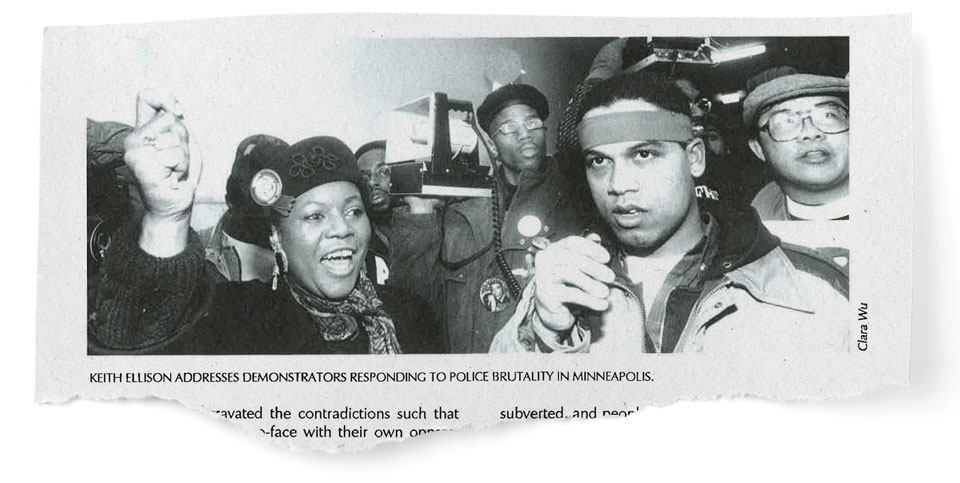
75 people stormed a City Council meeting, in response to police brutality.
At the time, the only agencies responsible for addressing police misconduct were the MPD Internal Affairs Unit and the Hennepin County Prosecutor’s office. Both began investigations headed up by detectives from the MPD itself, co-workers of the cops being investigated. Internal Affairs quickly cleared all 18 of the officers who had been involved in the drug raid, and the criminal case went to a Hennepin County Grand Jury, which decided not to indict any of the officers.10Oberdorfer, Dan. “Officers in fatal `crack’ raid not indicted,” Star Tribune: Newspaper of the Twin Cities, March 03, 1989: 01A, accessed November 15, 2017, http://infoweb.newsbank.com/resources/doc/nb/news/0EFE47E3FB61683A?p=AWNB. The FBI also investigated the incident, but similarly declined to file charges.11Ibid.
As 1990 began, almost a year after the raid, Lloyd Smalley’s family filed a wrongful death lawsuit against the city,12Halvorsen, Donna. “Children of man killed in drug raid sue Minneapolis,” Star Tribune: Newspaper of the Twin Cities, January 03, 1990: 01B, accessed November 15, 2017, http://infoweb.newsbank.com/resources/doc/nb/news/0EFE47660E89A154?p=AWNB. which ended in an undisclosed settlement.13Mitchell, Cory and Furst, Randy. “Botched raid costs Minneapolis $1M – City Council approved the payout nearly two years after police used a stun grenade that left a woman with permanent injuries.,” Star Tribune: Newspaper of the Twin Cities (Minneapolis, MN), December 10, 2011: 01A, accessed November 15, 2017, http://infoweb.newsbank.com/resources/doc/nb/news/13B9AC01C85170B8?p=AWNB. Community outrage at the raid pressured the city council, against the wishes of the police union, to create the Civilian Review Authority, a community-supported reform that, although meant to hold police accountable for wrongdoing, was ultimately useless.
None of the officers involved in the raid were so much as disciplined for the deaths of Weiss and Smalley. The commander of the raid, Mike Sauro, who later became one the officer at the heart of one of the biggest police brutality settlements in MPD history, described what happened to Weiss and Smalley as a “tragedy”, but quickly added that he was glad the officers hadn’t taken any chances. After all, he said, “it was a tactical situation.”14Brunswick 1989. One of the officers could have been killed. Imagine that.
1.Brunswick, Mark. “Retracing the raid – Survivors, police file offer clues on what went awry that fatal night,” Star Tribune: Newspaper of the Twin Cities, March 19, 1989: 01A, accessed November 15, 2017, http://infoweb.newsbank.com/resources/doc/nb/news/0EFE47E869806850?p=AWNB.
2.Ibid.
3.Ison, Chris. “Generosity led to couple’s deaths in raid, friends say,” Star Tribune: Newspaper of the Twin Cities, January 29, 1989: 01A, accessed November 15, 2017, http://infoweb.newsbank.com/resources/doc/nb/news/0EFE47DBA381C115?p=AWNB.
4.Oberdorfer, Dan. “FBI asked to probe deaths in drug raid – Police actions questioned,” Star Tribune: Newspaper of the Twin Cities, January 28, 1989: 01A, accessed November 15, 2017, http://infoweb.newsbank.com/resources/doc/nb/news/0EFE47DB81641A59?p=AWNB.
5.Brunswick 1989.
6.Ibid.
7.Oberdorfer 1989.
8.Brunswick 1989.
9.Tai, Wendy S.. “250 marchers rally at Minneapolis City Hall – Police racism alleged,” Star Tribune: Newspaper of the Twin Cities, February 18, 1989: 01B, accessed November 15, 2017, http://infoweb.newsbank.com/resources/doc/nb/news/0EFE47E0A4A16412?p=AWNB.
10.Oberdorfer, Dan. “Officers in fatal `crack’ raid not indicted,” Star Tribune: Newspaper of the Twin Cities, March 03, 1989: 01A, accessed November 15, 2017, http://infoweb.newsbank.com/resources/doc/nb/news/0EFE47E3FB61683A?p=AWNB.
11.Ibid.
12.Halvorsen, Donna. “Children of man killed in drug raid sue Minneapolis,” Star Tribune: Newspaper of the Twin Cities, January 03, 1990: 01B, accessed November 15, 2017, http://infoweb.newsbank.com/resources/doc/nb/news/0EFE47660E89A154?p=AWNB.
13.Mitchell, Cory and Furst, Randy. “Botched raid costs Minneapolis $1M – City Council approved the payout nearly two years after police used a stun grenade that left a woman with permanent injuries.,” Star Tribune: Newspaper of the Twin Cities (Minneapolis, MN), December 10, 2011: 01A, accessed November 15, 2017, http://infoweb.newsbank.com/resources/doc/nb/news/13B9AC01C85170B8?p=AWNB.
14.Brunswick 1989.
The Murder of Tycel Nelson
“It is a street-corner tableau played out with chilling frequency in city after city, often with the predictable results: controversy, protests, calls for investigations.”1Harrison, Eric. “Minneapolis Race Calm Shattered by Shooting : Civil rights: A black gang member is fatally shot in the back. Hostility simmers between police and community activists.” Los Angeles Times, February 12, 1991. August 8, 1993. Accessed November 15, 2017. http://articles.latimes.com/1991-02-12/news/mn-1357_1_police-officers.
– Los Angeles Times, 1990

Minneapolis police officer Dan May. Image from the Star Tribune via Associated Press File, 1991
On December 1st, 1990, the Minneapolis Police Department was called to a party where a fight had broken out. While they were on their way, two people were shot. When they arrived, Officer Dan May hopped out of his car with a shotgun, chasing 17 year old Tycel Nelson behind a house. Minutes later, the teenager was dead of a shotgun blast under unclear circumstances, an action that would result in widespread outrage and calls for police accountability.2Brunswick, Mark. “Police officer kills teen who allegedly raised gun at him,” Star Tribune: Newspaper of the Twin Cities, December 02, 1990: 01A, accessed November 15, 2017, http://infoweb.newsbank.com/resources/doc/nb/news/0EFE47C826CA3962?p=AWNB.
Almost immediately, the Minneapolis Police Department put together their narrative of what happened- Tycel Nelson was a gang member, brought a pistol to the party, was possibly implicated in the shooting earlier that night, ran from the police, ignored calls to surrender, turned around to shoot at Officer May, and was shot in the chest. Police Chief John Laux cleared Officer May of any wrongdoing five days after the shooting, citing a firearms discharge board investigation that only interviewed one civilian: Nelson’s cousin, who had to give her testimony in front of the the officer who had killed Tycel.3Brunswick, Mark. “Laux says shooting of teen was justified – Ruling, remarks prompt outrage,” Star Tribune: Newspaper of the Twin Cities, December 06, 1990: 01A, accessed November 15, 2017, http://infoweb.newsbank.com/resources/doc/nb/news/0EFE47C950084416?p=AWNB.
As with many police killings, the official story of the shooting didn’t add up. A community group known as Stop The Violence found more than a dozen witnesses who mentioned that they never saw Tycel with a gun at the party, including one who saw Nelson seconds before he was shot.4Ibid; Jones, Sumner. “Community in Shock.” Minnesota Spokesman-Recorder (Minneapolis), December 6, 1990. 5.Hodges, Jill. “Officer cleared in shooting – Grand jury brings no charges in death of Tycel Nelson,” Star Tribune: Newspaper of the Twin Cities, March 27, 1991: 01A, accessed November 15, 2017, http://infoweb.newsbank.com/resources/doc/nb/news/0EFE420C864758B4?p=AWNB.; Harrison, 1990. A pistol was found near Nelson’s body, but there was no evidence linking it to the prior shooting, and it didn’t have Nelson’s fingerprints on it.5Hodges, Jill. “Officer cleared in shooting – Grand jury brings no charges in death of Tycel Nelson,” Star Tribune: Newspaper of the Twin Cities, March 27, 1991: 01A, accessed November 15, 2017, http://infoweb.newsbank.com/resources/doc/nb/news/0EFE420C864758B4?p=AWNB.; Harrison, 1990. May claimed that he told Nelson to drop the gun, but a neighbor who was nearby only heard “there goes the son of a bitch,” followed by the sound of May’s shotgun.6Diaz, Kevin. “Tycel Nelson case settled for $250,000 – Family drops wrongful- death lawsuit against Minneapolis,” Star Tribune: Newspaper of the Twin Cities, July 07, 1993: 01A, accessed November 15, 2017, http://infoweb.newsbank.com/resources/doc/nb/news/0EFD675B79585FBE?p=AWNB. A Police report indicated that they found the gun immediately after the shooting, but neighbors and other officers said that they didn’t find it until much later.7Star Tribune, “Accounts fail to end confusion in fatal shooting,” 1990; Nisan, Chris. “Medal of Valor award ignites community outrage.” Minnesota Spokesman-Recorder. January 31, 2006. Accessed November 15, 2017.
https://www.tcdailyplanet.net/medal-valor-award-ignites-community-outrage/. Even more strangely, police said they found the gun next to Nelson’s right hand, even though he was left handed. Finally, though Officer May claimed that he shot Nelson in the chest as he pointed the gun at the officer, ballistics evidence showed that Nelson was shot in the back.8Star Tribune, “Laux says shooting of teen was justified – Ruling, remarks prompt outrage,” 1990.
10.Hodges, Jill. “North Side meeting decries `police coverup’,” Star Tribune: Newspaper of the Twin Cities, December 07, 1990: 01A, accessed November 15, 2017, http://infoweb.newsbank.com/resources/doc/nb/news/0EFE47C999ADBFAD?p=AWNB.
On December 6th, more than 600 community members, many of them youth, gathered at North High School to express outrage and discuss next steps.9Hodges, Jill. “North Side meeting decries `police coverup’,” Star Tribune: Newspaper of the Twin Cities, December 07, 1990: 01A, accessed November 15, 2017, http://infoweb.newsbank.com/resources/doc/nb/news/0EFE47C999ADBFAD?p=AWNB. On the 8th, 150 took to the streets, marching to the site where Nelson was killed and then to MPD’s 4th Precinct headquarters.10Draper, Norman. “Protesters march at site where officer shot teen – 150 show their frustration over Tycel Nelson’s death,” Star Tribune: Newspaper of the Twin Cities, December 09, 1990: 01B, accessed November 15, 2017, http://infoweb.newsbank.com/resources/doc/nb/news/0EFE47CA151BD0D1?p=AWNB. That night, two youth shot at a police car on the Southside; when they were caught and arrested, they claimed it as an act of retaliation for Tycel’s murder.11Jones, Sumner. “Calm does not prevail in wake of youth shooting.” Minnesota Spokesman-Recorder (Minneapolis), December 13, 1990.
Two weeks later, faced with widespread distrust from the community, the Hennepin County Prosecutor ceded to community calls for a special prosecutor, an unprecedented action in Minneapolis history.12Hodges, Jill. “Outside investigator to join Nelson probe,” Star Tribune: Newspaper of the Twin Cities, December 29, 1990: 01A, accessed November 15, 2017, http://infoweb.newsbank.com/resources/doc/nb/news/0EFE47CE27C5ADF9?p=AWNB. The attorney who was hired, William McGee, was also the Executive Director of the Legal Rights Center. Many community members were supportive of the announcement, but other groups were less thrilled. The Minneapolis Police Federation explored legal action to try to keep McGee off the case, saying he was unqualified because he had been brutally attacked by police officers several times himself, including an incident from two years earlier where an MPD officer had called him a “goddamned nigger,” and “hit [him] so hard [he] urinated on [himself].”13Prince, Pat. “Can McGee be fair? It’s a question he has asked himself,” Star Tribune: Newspaper of the Twin Cities, December 29, 1990: 09A, accessed November 15, 2017, http://infoweb.newsbank.com/resources/doc/nb/news/0EFE47CE1F978EAB?p=AWNB. Against the wishes of the Federation, McGee stayed on the case.
Unfortunately, the appointment of a special prosecutor didn’t change the case. An all-white grand jury exonerated Dan May for shooting Tycel Nelson on March 26th, 1991.14Hodges, Jill. “Officer cleared in shooting – Grand jury brings no charges in death of Tycel Nelson,” Star Tribune: Newspaper of the Twin Cities, March 27, 1991: 01A, accessed November 15, 2017, http://infoweb.newsbank.com/resources/doc/nb/news/0EFE420C864758B4?p=AWNB. An investigation by the FBI also resulted in no charges being filed against May. Nelson’s mother filed a wrongful death lawsuit against the city, which was settled for $250,000 in 1993.15Diaz 1993.
That June, the awards committee of the Minneapolis Police Department recommended that Dan May receive the Medal of Valor, MPD’s second-highest honor, for killing Tycel Nelson. When the Police Chief, conscious of potential outrage, refused to award May the medal, the entire awards committee resigned in protest.16Hodges, Jill. “5 quit police awards panel – Laux’s decision on May is cited,” Star Tribune: Newspaper of the Twin Cities, July 11, 1991: 01B, accessed November 15, 2017, http://infoweb.newsbank.com/resources/doc/nb/news/0EFE43760900E9B4?p=AWNB. The idea of giving May a medal for the shooting was enduring; in 2006, fifteen years later, the awards committee would successfully award the Medal of Valor to Dan May, who returned it amidst renewed community outrage.17Nisan 2006.
It turns out the night Tycel Nelson was killed was not the first time he had interacted with Minneapolis Police Officers. In fact, a little more than a year before, he and six other teenagers went on a school-sponsored trip to the Boundary Waters with cops as part of MPD’s Canoe Outreach Program for “at-risk youth.”18McEnroe, Paul. “Aftermath on the avenue – Ty `had the smarts’ to rise above the street violence,” Star Tribune: Newspaper of the Twin Cities, December 16, 1990: 01A, accessed November 15, 2017, http://infoweb.newsbank.com/resources/doc/nb/news/0EFE47CB992146A5?p=AWNB How ironic that, in the end, members of the same department would pose the greatest risk to his life.
1.Harrison, Eric. “Minneapolis Race Calm Shattered by Shooting : Civil rights: A black gang member is fatally shot in the back. Hostility simmers between police and community activists.” Los Angeles Times, February 12, 1991. August 8, 1993. Accessed November 15, 2017. http://articles.latimes.com/1991-02-12/news/mn-1357_1_police-officers.
2.Brunswick, Mark. “Police officer kills teen who allegedly raised gun at him,” Star Tribune: Newspaper of the Twin Cities, December 02, 1990: 01A, accessed November 15, 2017, http://infoweb.newsbank.com/resources/doc/nb/news/0EFE47C826CA3962?p=AWNB.
3.Brunswick, Mark. “Laux says shooting of teen was justified – Ruling, remarks prompt outrage,” Star Tribune: Newspaper of the Twin Cities, December 06, 1990: 01A, accessed November 15, 2017, http://infoweb.newsbank.com/resources/doc/nb/news/0EFE47C950084416?p=AWNB.
4.Ibid; Jones, Sumner. “Community in Shock.” Minnesota Spokesman-Recorder (Minneapolis), December 6, 1990.
5.Hodges, Jill. “Officer cleared in shooting – Grand jury brings no charges in death of Tycel Nelson,” Star Tribune: Newspaper of the Twin Cities, March 27, 1991: 01A, accessed November 15, 2017, http://infoweb.newsbank.com/resources/doc/nb/news/0EFE420C864758B4?p=AWNB.; Harrison, 1990.
6.Diaz, Kevin. “Tycel Nelson case settled for $250,000 – Family drops wrongful- death lawsuit against Minneapolis,” Star Tribune: Newspaper of the Twin Cities, July 07, 1993: 01A, accessed November 15, 2017, http://infoweb.newsbank.com/resources/doc/nb/news/0EFD675B79585FBE?p=AWNB.
7.Star Tribune, “Accounts fail to end confusion in fatal shooting,” 1990; Nisan, Chris. “Medal of Valor award ignites community outrage.” Minnesota Spokesman-Recorder. January 31, 2006. Accessed November 15, 2017.
https://www.tcdailyplanet.net/medal-valor-award-ignites-community-outrage/.
8.Star Tribune, “Tycel Nelson case settled for $250,000 – Family drops wrongful- death lawsuit against Minneapolis,” 1993.
9.Star Tribune, “Laux says shooting of teen was justified – Ruling, remarks prompt outrage,” 1990.
10.Hodges, Jill. “North Side meeting decries `police coverup’,” Star Tribune: Newspaper of the Twin Cities, December 07, 1990: 01A, accessed November 15, 2017, http://infoweb.newsbank.com/resources/doc/nb/news/0EFE47C999ADBFAD?p=AWNB.
11.Draper, Norman. “Protesters march at site where officer shot teen – 150 show their frustration over Tycel Nelson’s death,” Star Tribune: Newspaper of the Twin Cities, December 09, 1990: 01B, accessed November 15, 2017, http://infoweb.newsbank.com/resources/doc/nb/news/0EFE47CA151BD0D1?p=AWNB.
12.Jones, Sumner. “Calm does not prevail in wake of youth shooting.” Minnesota Spokesman-Recorder (Minneapolis), December 13, 1990.
13.Hodges, Jill. “Outside investigator to join Nelson probe,” Star Tribune: Newspaper of the Twin Cities, December 29, 1990: 01A, accessed November 15, 2017, http://infoweb.newsbank.com/resources/doc/nb/news/0EFE47CE27C5ADF9?p=AWNB.
14.Prince, Pat. “Can McGee be fair? It’s a question he has asked himself,” Star Tribune: Newspaper of the Twin Cities, December 29, 1990: 09A, accessed November 15, 2017, http://infoweb.newsbank.com/resources/doc/nb/news/0EFE47CE1F978EAB?p=AWNB.
15.Hodges, Jill. “Officer cleared in shooting – Grand jury brings no charges in death of Tycel Nelson,” Star Tribune: Newspaper of the Twin Cities, March 27, 1991: 01A, accessed November 15, 2017, http://infoweb.newsbank.com/resources/doc/nb/news/0EFE420C864758B4?p=AWNB.
16.Diaz 1993.
17.Hodges, Jill. “5 quit police awards panel – Laux’s decision on May is cited,” Star Tribune: Newspaper of the Twin Cities, July 11, 1991: 01B, accessed November 15, 2017, http://infoweb.newsbank.com/resources/doc/nb/news/0EFE43760900E9B4?p=AWNB.
18.Nisan 2006.
19.McEnroe, Paul. “Aftermath on the avenue – Ty `had the smarts’ to rise above the street violence,” Star Tribune: Newspaper of the Twin Cities, December 16, 1990: 01A, accessed November 15, 2017, http://infoweb.newsbank.com/resources/doc/nb/news/0EFE47CB992146A5?p=AWNB
Rough Rides: Brutality Against Native Men
“I’m no animal to put in the trunk.”1Diaz, Kevin. “Lawsuit likely after allegedly drunk man put in squad trunk.” Star Tribune: Newspaper of the Twin Cities, 27 Apr. 1993, NEWS, p. 01A. NewsBank, infoweb.newsbank.com/resources/doc/nb/news/0EFD67347B442441?p=AWNB. Accessed 27 Oct. 2017.
– Charles Lone Eagle, 1993
On April 17th, 1993, the Minneapolis Police Department had more squad cars than usual patrolling the city. The year before, Los Angeles had erupted into flames following the acquittal of the officers who beat Rodney King, and now a federal case against the officers was nearing its conclusion. Nervous about possible protests, MPD elected to conduct heavy patrols to shut down any potential unrest early in the evening.2Ibid. Ironically, the verdict – guilty for two hours, not guilty for two more – wasn’t met with any protests, but that night, two MPD officers would brutalize two Native men, triggering months of outcry, protests, and lawsuits.
That night, two women in the Elliot Park neighborhood noticed three intoxicated men passed out near their home, and called 911 to request an ambulance to bring them to Hennepin County Medical Center, a few blocks away. Instead of an ambulance, though, they got an MPD squad car containing officers Marvin “Boomer” Schumer and Mike Lardy, who canceled the ambulance call and put one of the men in the back seat of their car.3Zack, Margaret. “Witness tells how officers put Indian men in trunk of car.” Star Tribune: Newspaper of the Twin Cities, 29 Jun. 1995, NEWS, p. 02B. NewsBank, infoweb.newsbank.com/resources/doc/nb/news/0EFD662F056487E3?p=AWNB. Accessed 29 Sep. 2017.
Instead of helping the remaining two men into their squad car, however, the officers took Charles Lone Eagle and John Boney and threw them into the trunk, slamming the door onto Lone Eagle’s leg and breaking it.4Writer, Staff. “Minneapolis / Two Indians sue city, officers for putting them in trunk of police squad car.” Star Tribune: Newspaper of the Twin Cities, 4 Jan. 1994, NEWS, p. 05B. NewsBank, infoweb.newsbank.com/resources/doc/nb/news/0EFD66862A39EE66?p=AWNB. Accessed 29 Sep. 2017.
Rather than bringing the men straight to the nearby hospital, the officers drove them around for nearly 45 minutes, starting and stopping the car suddenly so the men would be thrown around in the trunk,5Ibid. a practice commonly known as a “rough ride”.Of course, the official reports filed by Schumer and Landy didn’t mention this detail, claiming that while they had put the men in the trunk, they had never closed the lid, and the whole trip had taken less than a minute. This was directly contradicted by eyewitnesses at the scene, hospital personnel, and HCMC’s admittance records.6Furst, Randy. “Rights charges filed against two officers – Mistreatment of Indians alleged.” Star Tribune: Newspaper of the Twin Cities, 19 Jun. 1993, NEWS, p. 01A. NewsBank, infoweb.newsbank.com/resources/doc/nb/news/0EFD6754817237DF?p=AWNB. Accessed 29 Sep. 2017.
Schumer was already known as a brutal cop: in 1989, he was investigated for illegally taking Black suspects to a secluded area by the Mississippi river and beating them. At the time, the Hennepin County Attorney’s office had declined to prosecute Schumer because of the lack of corroborating witnesses. When Schumer was asked if it was a regular practice of his, he said that it was, and that “it [was] done in an attempt to clean up the downtown/Hennepin area.”7Furst, Randy. “Officer accused of mistreating Indians has record.” Star Tribune: Newspaper of the Twin Cities, 30 Apr. 1993, NEWS, p. 01B. NewsBank, infoweb.newsbank.com/resources/doc/nb/news/0EFD673604EED1C7?p=AWNB. Accessed 29 Sep. 2017. The department found him guilty of misconduct, but only suspended him for six days. When he shoved Lone Eagle and Boney into a trunk in 1993, it was less than a mile from Hennepin Ave., the same area he had claimed to trying to “clean up” four years earlier.
The officers were taken off the street and assigned to administrative duties immediately following the events of April 17th. Three days later, Internal Affairs officers arrived at HCMC to interview a nurse named Dawn Setter, who confirmed that the trunk was closed when the officers arrived at the hospital. The next night, three police officers, including two believed to be Schumer and Landy, arrived at the hospital demanding to speak to Setter. According to some hospital staff, they “smelled of alcohol,” and left after a supervising nurse told them they wouldn’t be allowed to speak to Setter.8Furst, Randy. “Marchers protest police treatment of Indians – Officers tried to interview witness to trunk incident.” Star Tribune: Newspaper of the Twin Cities, 20 May 1993, NEWS, p. 01B. NewsBank, infoweb.newsbank.com/resources/doc/nb/news/0EFD67478BE1E3F7?p=AWNB. Accessed 29 Sep. 2017. On April 22nd, Schumer and Lardy were relieved of duty with pay while the case was investigated.
On May 14th, the Hennepin County Attorney’s office declined to file felony charges against the officers, saying that there was “no basis” for an indictment.9Robertson, Tatsha. “No charges filed in trunk incident.” Star Tribune: Newspaper of the Twin Cities, 15 May 1993, NEWS, p. 01B. NewsBank, infoweb.newsbank.com/resources/doc/nb/news/0EFD67451731C530?p=AWNB. Accessed 29 Sep. 2017. The Minneapolis city attorney’s office similarly declined to press charges against the officers, prompting more than 100 protesters to march on City Hall on May 19th, demanding that Schumer and Lardy be fired.10Furst, Randy. “Marchers protest police treatment of Indians – Officers tried to interview witness to trunk incident.” Star Tribune: Newspaper of the Twin Cities, 20 May 1993, NEWS, p. 01B. NewsBank, infoweb.newsbank.com/resources/doc/nb/news/0EFD67478BE1E3F7?p=AWNB. Accessed 29 Sep. 2017. On June 5th, a few weeks later, the Police Chief apologized to the victims and announced his disciplinary actions against the officers: a 20 day suspension for Lardy, and a 90 day suspension for Schumer, made longer because of his history of brutal policing.11Zack, Margaret. “Witness tells how officers put Indian men in trunk of car.” Star Tribune: Newspaper of the Twin Cities, 29 Jun. 1995, NEWS, p. 02B. NewsBank, infoweb.newsbank.com/resources/doc/nb/news/0EFD662F056487E3?p=AWNB. Accessed 29 Sep. 2017. Representatives from the Native community called the verdict disappointing, saying that it failed to properly hold the officers accountable for their actions.12Gendler, Neal. “Laux suspends 2 officers – Apologizes to 2 men put in trunk of squad car.” Star Tribune: Newspaper of the Twin Cities, 5 Jun. 1993, NEWS, p. 01A. NewsBank, infoweb.newsbank.com/resources/doc/nb/news/0EFD674DC9B108CD?p=AWNB. Accessed 27 Oct. 2017.
On June 18th, 1993, Minnesota’s Human Rights Commission filed civil charges against the officers for discrimination, extremely rare given that the organization only filed around 10 cases a year.13Randy Furst, “Rights charges filed against two officers – Mistreatment of Indians alleged,” Star Tribune: Newspaper of the Twin Cities, 19 Jun. 1993, NEWS, p. 01A. NewsBank, infoweb.newsbank.com/resources/doc/nb/news/0EFD6754817237DF?p=AWNB. Accessed 29 Sep. 2017.
Their investigation took almost a year, eventually finding that “race was the likely motivation” for throwing the men into the trunk and calling their treatment “unreasonable and outrageous.”14Randy Furst, “Police officers violated human rights of Indian men put in trunk, report says,” Star Tribune: Newspaper of the Twin Cities, 27 May 1994, NEWS, p. 01A. NewsBank, infoweb.newsbank.com/resources/doc/nb/news/0EFD66CBD7339834?p=AWNB. Accessed 27 Oct. 2017.Meanwhile, on January 3rd, 1994, Charles Lone Eagle and John Boney had sued the city on 13 counts, including assault, deprivation of constitutional rights, and cruel and unusual punishment.15“Minneapolis / Two Indians sue city, officers for putting them in trunk of police squad car,” Star Tribune: Newspaper of the Twin Cities, 4 Jan. 1994, NEWS, p. 05B. NewsBank, infoweb.newsbank.com/resources/doc/nb/news/0EFD66862A39EE66?p=AWNB. Accessed 29 Sep. 2017. The city, perhaps thinking it couldn’t lose a legal battle against two alcoholic Native men, refused to settle, and the case went to civil court. When the trial was over, a jury found Schumer and Lardy guilty of civil rights violations and negligence, and ordered the city to pay Lone Eagle and Boney $200,000 in damages.16Margaret Zack, “City to give $200,000 to 2 men cops put in trunk – Jury says rights were violated,” Star Tribune: Newspaper of the Twin Cities, 13 Jul. 1995, NEWS, p. 01A. NewsBank, infoweb.newsbank.com/resources/doc/nb/news/0EFD663349A3A553?p=AWNB. Accessed 27 Oct. 2017. On top of that, the city was required to pay nearly $250,000 in legal fees to the attorneys who represented Lone Eagle and Boney.17Randy Furst, “$248,383 awarded to Indians’ lawyers – Tab on car-trunk transport is now $450,000 for Minneapolis,” Star Tribune: Newspaper of the Twin Cities, 3 Oct. 1995, NEWS, p. 07B. NewsBank, infoweb.newsbank.com/resources/doc/nb/news/0EFD6657CA0EBB6F?p=AWNB. Accessed 27 Oct. 2017. The Native community rejoiced over the verdict, but it was tempered by the knowledge that the officers who had brutalized the two men were still wearing MPD badges.
It took nine more years, but Mike Lardy was finally fired in 2002 as a result of another internal affairs investigation.18Howie Padilla, “2 Minneapolis police officers are dismissed.” Star Tribune: Newspaper of the Twin Cities (Minneapolis, MN), 17 Aug. 2002, METRO, NEWS, p. 3B. NewsBank, infoweb.newsbank.com/resources/doc/nb/news/0F57FEA8D06E98DD?p=AWNB. Accessed 29 Sep. 2017. On the other hand, Marvin Schumer stayed on the force for another 21 years, finally retiring in 2014. In his retirement announcement, he mentioned that “his most memorable moments were answering 911 calls in the 4th precinct” from 1986 to 1998.19Police Officers Federation of Minneapolis, “Sergeant Marvin ‘Boomer’ Schumer” 2015. http://www.mpdfederation.com/sergeant-marvin-boomer-schumer/ If only that night in April 1993 had been less memorable for Charles Lone Eagle and John Boney.
1.Diaz, Kevin. “Lawsuit likely after allegedly drunk man put in squad trunk.” Star Tribune: Newspaper of the Twin Cities, 27 Apr. 1993, NEWS, p. 01A. NewsBank, infoweb.newsbank.com/resources/doc/nb/news/0EFD67347B442441?p=AWNB. Accessed 27 Oct. 2017.
2.Ibid.
3.Zack, Margaret. “Witness tells how officers put Indian men in trunk of car.” Star Tribune: Newspaper of the Twin Cities, 29 Jun. 1995, NEWS, p. 02B. NewsBank, infoweb.newsbank.com/resources/doc/nb/news/0EFD662F056487E3?p=AWNB. Accessed 29 Sep. 2017.
4.Writer, Staff. “Minneapolis / Two Indians sue city, officers for putting them in trunk of police squad car.” Star Tribune: Newspaper of the Twin Cities, 4 Jan. 1994, NEWS, p. 05B. NewsBank, infoweb.newsbank.com/resources/doc/nb/news/0EFD66862A39EE66?p=AWNB. Accessed 29 Sep. 2017.
5.Ibid.
6.Furst, Randy. “Rights charges filed against two officers – Mistreatment of Indians alleged.” Star Tribune: Newspaper of the Twin Cities, 19 Jun. 1993, NEWS, p. 01A. NewsBank, infoweb.newsbank.com/resources/doc/nb/news/0EFD6754817237DF?p=AWNB. Accessed 29 Sep. 2017.
7.Furst, Randy. “Officer accused of mistreating Indians has record.” Star Tribune: Newspaper of the Twin Cities, 30 Apr. 1993, NEWS, p. 01B. NewsBank, infoweb.newsbank.com/resources/doc/nb/news/0EFD673604EED1C7?p=AWNB. Accessed 29 Sep. 2017.
8.Furst, Randy. “Marchers protest police treatment of Indians – Officers tried to interview witness to trunk incident.” Star Tribune: Newspaper of the Twin Cities, 20 May 1993, NEWS, p. 01B. NewsBank, infoweb.newsbank.com/resources/doc/nb/news/0EFD67478BE1E3F7?p=AWNB. Accessed 29 Sep. 2017.
9.Robertson, Tatsha. “No charges filed in trunk incident.” Star Tribune: Newspaper of the Twin Cities, 15 May 1993, NEWS, p. 01B. NewsBank, infoweb.newsbank.com/resources/doc/nb/news/0EFD67451731C530?p=AWNB. Accessed 29 Sep. 2017.
10.Furst, Randy. “Marchers protest police treatment of Indians – Officers tried to interview witness to trunk incident.” Star Tribune: Newspaper of the Twin Cities, 20 May 1993, NEWS, p. 01B. NewsBank, infoweb.newsbank.com/resources/doc/nb/news/0EFD67478BE1E3F7?p=AWNB. Accessed 29 Sep. 2017.
11.Zack, Margaret. “Witness tells how officers put Indian men in trunk of car.” Star Tribune: Newspaper of the Twin Cities, 29 Jun. 1995, NEWS, p. 02B. NewsBank, infoweb.newsbank.com/resources/doc/nb/news/0EFD662F056487E3?p=AWNB. Accessed 29 Sep. 2017.
12.Gendler, Neal. “Laux suspends 2 officers – Apologizes to 2 men put in trunk of squad car.” Star Tribune: Newspaper of the Twin Cities, 5 Jun. 1993, NEWS, p. 01A. NewsBank, infoweb.newsbank.com/resources/doc/nb/news/0EFD674DC9B108CD?p=AWNB. Accessed 27 Oct. 2017.
13.Randy Furst, “Rights charges filed against two officers – Mistreatment of Indians alleged,” Star Tribune: Newspaper of the Twin Cities, 19 Jun. 1993, NEWS, p. 01A. NewsBank, infoweb.newsbank.com/resources/doc/nb/news/0EFD6754817237DF?p=AWNB. Accessed 29 Sep. 2017.
14.Randy Furst, “Police officers violated human rights of Indian men put in trunk, report says,” Star Tribune: Newspaper of the Twin Cities, 27 May 1994, NEWS, p. 01A. NewsBank, infoweb.newsbank.com/resources/doc/nb/news/0EFD66CBD7339834?p=AWNB. Accessed 27 Oct. 2017.
15.”Minneapolis / Two Indians sue city, officers for putting them in trunk of police squad car,” Star Tribune: Newspaper of the Twin Cities, 4 Jan. 1994, NEWS, p. 05B. NewsBank, infoweb.newsbank.com/resources/doc/nb/news/0EFD66862A39EE66?p=AWNB. Accessed 29 Sep. 2017.
16.Margaret Zack, “City to give $200,000 to 2 men cops put in trunk – Jury says rights were violated,” Star Tribune: Newspaper of the Twin Cities, 13 Jul. 1995, NEWS, p. 01A. NewsBank, infoweb.newsbank.com/resources/doc/nb/news/0EFD663349A3A553?p=AWNB. Accessed 27 Oct. 2017.
17.Randy Furst, “$248,383 awarded to Indians’ lawyers – Tab on car-trunk transport is now $450,000 for Minneapolis,” Star Tribune: Newspaper of the Twin Cities, 3 Oct. 1995, NEWS, p. 07B. NewsBank, infoweb.newsbank.com/resources/doc/nb/news/0EFD6657CA0EBB6F?p=AWNB. Accessed 27 Oct. 2017.
18.Howie Padilla, “2 Minneapolis police officers are dismissed.” Star Tribune: Newspaper of the Twin Cities (Minneapolis, MN), 17 Aug. 2002, METRO, NEWS, p. 3B. NewsBank, infoweb.newsbank.com/resources/doc/nb/news/0F57FEA8D06E98DD?p=AWNB. Accessed 29 Sep. 2017.
19.Police Officers Federation of Minneapolis, “Sergeant Marvin ‘Boomer’ Schumer” 2015. http://www.mpdfederation.com/sergeant-marvin-boomer-schumer/
‘Clean’ Records: A Shooting at Little Earth
“The question is why has there been no discipline. The answer is that’s not unique to this case. There has been no discipline with Minneapolis police officers from civilian complaints.”1Farrah, Fazal, “Residents of a Minneapolis Community Don’t Want to See Officer Released From Jail,” ABC Five. 13 Sept 2017.http://kstp.com/news/minneapolis-officer-charges-court-appearance/4602487/ Accessed Oct 6. 2017.
– David Bicking, Communities United Against Police Brutality
On December 14th, 1993, Minneapolis Police Department officers Anthony DiIoia and David Campbell were working on a case at Little Earth when they came across a group of teenagers. One of the teenagers was carrying a toy gun, and both officers drew their real guns, shooting the 16 year old boy. Thankfully, the youth who had been shot survived but was convicted of “making terroristic threats.”2Mike Mosedale, “Officer Down,” City Pages. (Minneapolis, MN) 12, January 2000.http://www.citypages.com/news/officer-down-6708246. Accessed 29 Sep. 2017. Despite the fact that the officers had shot an innocent teenager, DiIoia was awarded the Medal of Valor, MPD’s second highest award, awarded for acts “characterized by obvious self-sacrifice while facing personal danger.”3“Recognition Program” MPD Organization 25 Oct. 2017 http://www.ci.minneapolis.mn.us/police/recruiting/org/police_recruiting_recognition.Unfortunately, DiIoia and Campbell would continue their careers as police officers, both becoming extreme examples of police misconduct.
Over the four years DiIoia was a member of the Minneapolis Police Department, he was the subject of seven Civilian Review complaints, an Internal Affairs investigation, and a police brutality lawsuit.4Mosedale, “Officer Down.” The lawsuit is particularly horrifying: DiIoia, along with two other officers, was accused of beating a Black man with batons and flashlights for more than half an hour in front of four children, calling him a “nigger” and telling him “this is a white world.”5Anne O’Connor, “3 cops, department face lawsuit – Minneapolis pair alleges assault, battery, violation of rights.” Star Tribune: Newspaper of the Twin Cities, 22 Jul. 1995, NEWS, p. 05B. NewsBank, infoweb.newsbank.com/resources/doc/nb/news/0EFD66365D0AD138?p=AWNB. Accessed 5 Oct. 2017. The city settled the suit for around $7,000, and it never went to trial.6Mosedale, “Officer Down.” Yet another lawsuit expressed shock that DiIoia was allowed to continue policing given his record of brutality – but as DiIoia reminded one reporter, he was never disciplined in Minneapolis and never had any sustained complaints of excessive force.7Ibid. DiIoia transferred to the Washington County Police Department, where he was the subject of eight more internal affairs investigations and two more lawsuits between 1996 and 1999. He was finally fired in 1999 for hitting a man named John Buelow more than forty times, a case that eventually led to an $800,000 settlement between Buelow and Washington County.8Mary Divine, “2nd Suit Alleging Assault Names Fired Deputy//Lawsuit: Washington County Ignored Record’s `Red Flags.’” St. Paul Pioneer Press (MN), 23 Jun. 2000, LOCAL, p. 1B. NewsBank, infoweb.newsbank.com/resources/doc/nb/news/0EB739DD21D891AF?p=AWNB. Accessed 27 Oct. 2017.
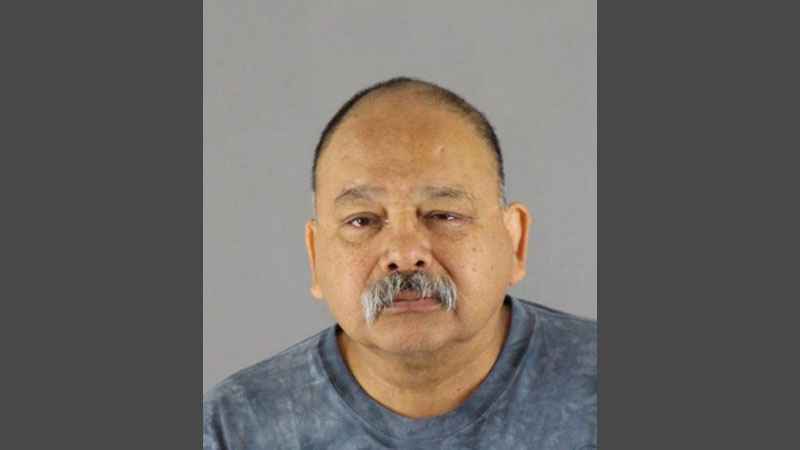
Officer David Campbell, photo Bloomington Police
Unlike Diloia, Officer David Campbell continues to work for the Minneapolis Police Department, where he’s prompted an astonishing twenty-one investigations into misconduct. So far, he hasn’t been disciplined for a single one of them.9Farrah, Fazal, “Residents of a Minneapolis Community Don’t Want to See Officer Released From Jail.” Most recently, in September 2017, Campbell was charged with six felonies for sexually assaulting his son’s 16 year old girlfriend while on duty, threatening to shoot her in the head.10Mike Mullen, “Charges: Minneapolis cop David Campbell assaulted victim, 16, while on duty,” City Pages (Minneapolis, MN), 12 Sep. 2017, News. NewsBank, infoweb.newsbank.com/resources/doc/nb/news/166E852CD03CC0E8?p=AWNB. Accessed 27 Oct. 2017. As of October 2017, Campbell is currently on unpaid leave awaiting trial.
According to his lawyer, Campbell’s legal strategy is likely to focus on his “clean employment and criminal record”. 11Farrah, Fazal, “Residents of a Minneapolis Community Don’t Want to See Officer Released From Jail.” But if Campbell and DiIoia can both have clean MPD records, despite an unnecessary shooting and dozens of complaints from the community, what does that say about the Minneapolis Police Department more broadly?
1.Farrah, Fazal, “Residents of a Minneapolis Community Don’t Want to See Officer Released From Jail,” ABC Five. 13 Sept 2017.http://kstp.com/news/minneapolis-officer-charges-court-appearance/4602487/ Accessed Oct 6. 2017.
2.Mike Mosedale, “Officer Down,” City Pages. (Minneapolis, MN) 12, January 2000.
http://www.citypages.com/news/officer-down-6708246. Accessed 29 Sep. 2017.
3.“Recognition Program” MPD Organization 25 Oct. 2017 http://www.ci.minneapolis.mn.us/police/recruiting/org/police_recruiting_recognition.
4.Mosedale, “Officer Down.”
5.Anne O’Connor, “3 cops, department face lawsuit – Minneapolis pair alleges assault, battery, violation of rights.” Star Tribune: Newspaper of the Twin Cities, 22 Jul. 1995, NEWS, p. 05B. NewsBank, infoweb.newsbank.com/resources/doc/nb/news/0EFD66365D0AD138?p=AWNB. Accessed 5 Oct. 2017.
6.Mosedale, “Officer Down.”
7.Ibid.
8.Mary Divine, “2nd Suit Alleging Assault Names Fired Deputy//Lawsuit: Washington County Ignored Record’s `Red Flags.’” St. Paul Pioneer Press (MN), 23 Jun. 2000, LOCAL, p. 1B. NewsBank, infoweb.newsbank.com/resources/doc/nb/news/0EB739DD21D891AF?p=AWNB. Accessed 27 Oct. 2017.
9.Farrah, Fazal, “Residents of a Minneapolis Community Don’t Want to See Officer Released From Jail.”
10.Mike Mullen, “Charges: Minneapolis cop David Campbell assaulted victim, 16, while on duty,” City Pages (Minneapolis, MN), 12 Sep. 2017, News. NewsBank, infoweb.newsbank.com/resources/doc/nb/news/166E852CD03CC0E8?p=AWNB. Accessed 27 Oct. 2017.
11.Farrah, Fazal, “Residents of a Minneapolis Community Don’t Want to See Officer Released From Jail.”
A Kidnapping at Little Earth
“Benefit of the doubt. Benefit of the doubt. Benefit of the doubt.
At what point do we say enough is enough?”1Jennifer Bjorhus, “Shielded by the badge – Convicted, But Still Policing – Minnesota discipline of police lags, even in violent crimes,” Star Tribune: Newspaper of the Twin Cities (Minneapolis, MN), 1 Oct. 2017, METRO, NEWS, p. 01A. NewsBank, infoweb.newsbank.com/resources/doc/nb/news/1674B7F9CEC186E0?p=AWNB. Accessed 9 Oct. 2017.
– Neil Melton, former Executive Director of the Minnesota POST Board

The Minnesota Peace Officer Standards and Training Board, shown seated during a meeting. ELIZABETH FLORES, STAR TRIBUNE
On March 10th, 1994, a man named Tesfai Kashai Dirar was pulled over on a routine traffic stop by two off-duty cops hired to patrol Little Earth. The officers, Richard Gonion and Malcolm Johnson, demanded his proof of insurance, which he said was at his hotel. Instead of writing him a ticket and letting him go on his way, the officers demanded that Dirar pay them a $300 fine to avoid being arrested. When Dirar offered to write them a check, they refused it, saying only cash was acceptable, and allowed him back to his car so that he could drive to his hotel to get cash. They then followed him all the way to his hotel, the Airport Hilton in Bloomington, to make sure they got their money.2Mark Brunswick, “Two officers charged with seeking bribe – They allegedly asked man for $300 to avoid arrest,” Star Tribune: Newspaper of the Twin Cities, 16 Mar. 1994, NEWS, p. 01B. NewsBank, infoweb.newsbank.com/resources/doc/nb/news/0EFD66A4622ACDA0?p=AWNB. Accessed 8 Oct. 2017.
When Dirar arrived at the hotel, he told hotel security that there were police officers outside demanding money from him. The security guard went outside with Dirar to talk to the officers…who promptly threw Dirar in the back of the squad car, handcuffed him, and drove off. They drove him around for some time as a “scare tactic,” bringing him all the way back into Minneapolis and intimidating him. Eventually they dropped him off a few blocks from his hotel in below-zero temperatures, forcing him to walk the rest of the way back.3Mark Brunswick, “Two officers given 60 days for misconduct – Both must resign, face loss of licenses.” Star Tribune: Newspaper of the Twin Cities, 19 Nov. 1994, NEWS, p. 01B. NewsBank, infoweb.newsbank.com/resources/doc/nb/news/0EFD140C4E3CE1F3?p=AWNB. Accessed 8 Oct. 2017. Presumably, they thought they had gotten away with the extortion attempt. What they didn’t realize is that the security guard at the hotel had noted the number of their squad car and turned it over to the Bloomington police. Both officers were arrested in Minneapolis early the next week.
The officers were suspended with pay and charged with felonies for kidnapping, extortion, and misconduct of a police officer. Eventually, they were forced to resign from the department. The criminal case never went to trial – the felonies were dropped by the Hennepin County Prosecutor in exchange for the officers pleading guilty to gross-misdemeanor misconduct of a police officer.4Ibid. Though they were sentenced to 60 days in the county workhouse, they never served it – the judge allowed them to serve their time on house arrest.5Mark Brunswick, “Two officers given 60 days for misconduct.”
Despite being charged with felonies and convicted of a serious crime, Richard Gonion and Malcolm Johnson got to keep their police licenses. At the time, the Police Officer Standard and Training (POST) board, which was created to hold officers accountable by revoking the licenses of bad cops, only revoked peace officer licenses for felony and theft convictions – apparently extortion didn’t qualify. Gonion and Johnson knew this, and agreed to the plea deal knowing that it would allow them to continue to be police officers elsewhere in the state.6Mark Brunswick, “2 police officers agree to resign and plead guilty to charge of misconduct,” Star Tribune: Newspaper of the Twin Cities, 20 Sep. 1994, NEWS, p. 01B. NewsBank, infoweb.newsbank.com/resources/doc/nb
In 2017, that policy is mostly unchanged. A recent series in the Star Tribune, “Shielded By The Badge,” shows that the POST board is still unlikely to revoke police officers’ licenses for anything except felony and theft convictions. As a result, there are hundreds of police officers working every day in Minnesota who have been convicted of crimes, including assault and domestic abuse.7Jennifer Bjorhus, “Shielded by the badge.” Community members often seek the prosecution of police officers for misconduct – but even when officers are indicted (unlikely) and convicted (even more unlikely) of very serious crimes, the most likely outcome is that they return to policing. We deserve better.
1.Jennifer Bjorhus, “Shielded by the badge – Convicted, But Still Policing – Minnesota discipline of police lags, even in violent crimes,” Star Tribune: Newspaper of the Twin Cities (Minneapolis, MN), 1 Oct. 2017, METRO, NEWS, p. 01A. NewsBank, infoweb.newsbank.com/resources/doc/nb/news/1674B7F9CEC186E0?p=AWNB. Accessed 9 Oct. 2017.
2.Mark Brunswick, “Two officers charged with seeking bribe – They allegedly asked man for $300 to avoid arrest,” Star Tribune: Newspaper of the Twin Cities, 16 Mar. 1994, NEWS, p. 01B. NewsBank, infoweb.newsbank.com/resources/doc/nb/news/0EFD66A4622ACDA0?p=AWNB. Accessed 8 Oct. 2017.
3.Mark Brunswick, “Two officers given 60 days for misconduct – Both must resign, face loss of licenses.” Star Tribune: Newspaper of the Twin Cities, 19 Nov. 1994, NEWS, p. 01B. NewsBank, infoweb.newsbank.com/resources/doc/nb/news/0EFD140C4E3CE1F3?p=AWNB. Accessed 8 Oct. 2017.
4.Ibid.
5.Mark Brunswick, “Two officers given 60 days for misconduct.”
6.Mark Brunswick, “2 police officers agree to resign and plead guilty to charge of misconduct,” Star Tribune: Newspaper of the Twin Cities, 20 Sep. 1994, NEWS, p. 01B. NewsBank, infoweb.newsbank.com/resources/doc/nb/news/0EFD13F4C6A0C723?p=AWNB. Accessed 8 Oct. 2017
7.Jennifer Bjorhus, “Shielded by the badge.”
Rapist With a Badge
“My trust has been shattered, not just for police officers and authority figures, but for everyone. The sight of a squad car creates immediate fear.”1Margaret Zack, “Minneapolis policeman gets 4 years for kidnapping and rape of woman,” Minneapolis Star-Tribune, May 9, 1995.
– Victim of MPD Officer Michael Ray Parent’s sexual assault
In the early morning hours of August 5, 1994, Minneapolis’ fifth precinct police officer Michael Ray Parent stopped a woman under “suspicion of drunken driving” on Nicollet Avenue near Diamond Lake Road.2Pat Pheifer, “Minneapolis officer held on charges of assault,” Minneapolis Star-Tribune, September 2, 1994. Parent was patrolling alone that night, and the woman, a 26-year-old nurse who was driving home after a night out with friends, was also alone. Parent frisked the woman and asked her to perform sobriety tests.3Ibid. He told the woman she was under arrest and placed her in the back of his squad car. As he towered over her outside the squad car, Parent asked her three times if there was anything she could do to “prevent” him from arresting her.4Ibid. The woman, who was confused by the question, replied that she didn’t know. After the third time, Parent explained that if he moved forward with the arrest, she would have to pay a $1,500 and spend three days in jail.5Ibid. He asked, “You mean a pretty girl like you doesn’t know what to do?”6Ibid. Parent got back into his squad car, drove around the corner to a deserted church parking lot, and forced the woman to perform oral sex on him.7Zack, “Minneapolis policeman gets 4 years for kidnapping and rape of woman.” After the assault, Parent told the woman that she was free to go and there would be no record of the stop. He drove her back to her car and released her.8Pheifer, “Minneapolis officer held on charges of assault.”
Within a few hours, the woman reported the sexual assault. Investigators immediately discovered that Parent was patrolling south Minneapolis that night and, just as Parent told the woman, there was no record of him stopping her. However, when investigators examined Parent’s locker at the fifth precinct, they found a notepad with the woman’s name, address, and phone number in Parent’s handwriting.9Ibid. Parent was placed on investigative leave. Almost one month later, on September 1, 1994, Officer Michael Ray Parent was arrested by Hennepin County sheriffs and charged with felony kidnapping and third-degree sexual assault (charges that carry a combined maximum penalty of 55 years in prison and $80,000 in fines in Minnesota).10Zack, “Minneapolis policeman gets 4 years for kidnapping and rape of woman;” Minnesota Statutes § 609.25 and § 609.344. When he appeared in court the next day, September 2, Hennepin County Judge Stephen Lange ordered Parent to stay away from the victim and anyone involved in the investigation, apparently fearing Parent would use his power a cop to intimidate his victim or to influence the outcome of the investigation.11“Officer charged with sex assault must avoid accuser, investigators,” Minneapolis Star-Tribune, September 3, 1994.
Throughout the trial, Michael Ray Parent denied the victim’s account of the incident, submitting sworn testimony in his own defense.12Zack, “Minneapolis policeman gets 4 years for kidnapping and rape of woman.” Ultimately, Parent was convicted and sentenced to four years in prison on May 8, 1995 (substantially less than the maximum penalty of 55 years).13Ibid. Parent was the first MPD officer sentenced to prison in approximately 20 years.14Ibid.
At his sentencing hearing, Parent admitted that he had lied throughout the trial and that his victim’s account of the events was accurate.15Ibid.Predictably, public figures in Minneapolis denounced Parent. Minneapolis Mayor Sharon Sayles said she was “outraged” by Parent’s behavior, and Minneapolis Police Chief John Laux said he experienced “frustration” that he was not “able” to fire Parent and revoke his license as a peace officer more quickly.16Ibid. But Parent, who had only been on the force for about a year and a half at the time of the sexual assault, had already been accused of sexual assault by another woman during his probationary period.17Pheifer, “Minneapolis officer held on charges of assault.” Charges were never filed in the first case, which Hennepin County prosecutors declined to pursue because they saw it as a case of “he said, she said.”18Mark Brunswick, “Officer accused of sexual assault,” Minneapolis Star-Tribune, August 27, 1994. Furthermore, eight other MPD officers had already been charged or convicted in 1994 by the time Parent was arrested in September. 19Pheifer, “Minneapolis officer held on charges of assault”; Kevin Diaz, “Suspension with pay under fire,” Minneapolis Star-Tribune, September 8, 1994. In 1994, Parent was hardly the only bad apple in a department that was rotten to the core.
1.Margaret Zack, “Minneapolis policeman gets 4 years for kidnapping and rape of woman,” Minneapolis Star-Tribune, May 9, 1995.
2.Pat Pheifer, “Minneapolis officer held on charges of assault,” Minneapolis Star-Tribune, September 2, 1994.
3.Ibid.
4.Ibid.
5.Ibid.
6.Ibid.
7.Zack, “Minneapolis policeman gets 4 years for kidnapping and rape of woman.”
8.Pheifer, “Minneapolis officer held on charges of assault.”
9.Ibid.
10.Zack, “Minneapolis policeman gets 4 years for kidnapping and rape of woman;” Minnesota Statutes § 609.25 and § 609.344.
11.“Officer charged with sex assault must avoid accuser, investigators,” Minneapolis Star-Tribune, September 3, 1994.
12.Zack, “Minneapolis policeman gets 4 years for kidnapping and rape of woman.”
13.Ibid.
14.Ibid.
15.Ibid.
16.Ibid.
17.Pheifer, “Minneapolis officer held on charges of assault.”
18.Mark Brunswick, “Officer accused of sexual assault,” Minneapolis Star-Tribune, August 27, 1994.
19.Pheifer, “Minneapolis officer held on charges of assault”; Kevin Diaz, “Suspension with pay under fire,” Minneapolis Star-Tribune, September 8, 1994.
The Destruction of the Minnehaha Free State
“What went on here has been going on against us for hundreds of years.”1Brunswick, Mark. “Hwy. 55 protest ended; oaks fall – Arrest of 31 protesters carried out peacefully,” Star Tribune: Newspaper of the Twin Cities, December 12, 1999: 01A, accessed November 15, 2017, http://infoweb.newsbank.com/resources/doc/nb/news/0EFD5FDC29810B3C?p=AWNB.
– Clyde Bellecourt, 1999
In Spring 1998, a group of indigenous activists, environmentalists, and community members came together in solidarity to fight highway construction in Southeast Minneapolis. Later known as the Minnehaha Free State, they stood against a proposed rerouting of Highway 55 that would destroy Native sacred sites, centuries-old trees, and a thriving ecosystem in order to widen the highway by a few lanes.
By August 1998, the Free State protests had become a full-on occupation outside the house of Carol Kratz, an almost-70-year-old grandmother who had refused to sell her house to the Minnesota Department of Transportation (MNDOT). Tipis, tents, and a sweat lodge were constructed as more supporters arrived, and hundreds of community members rallied in support of the occupation.
Meanwhile, members of the Mendota Mdewakanton Dakota people were in the courts, pursuing every possible legal route to getting MNDOT to cease construction, speaking to a history of hundreds of years of sacred gatherings in the area. The state refused to redirect the highway, and by December, the Governor was preparing to end the encampment violently.
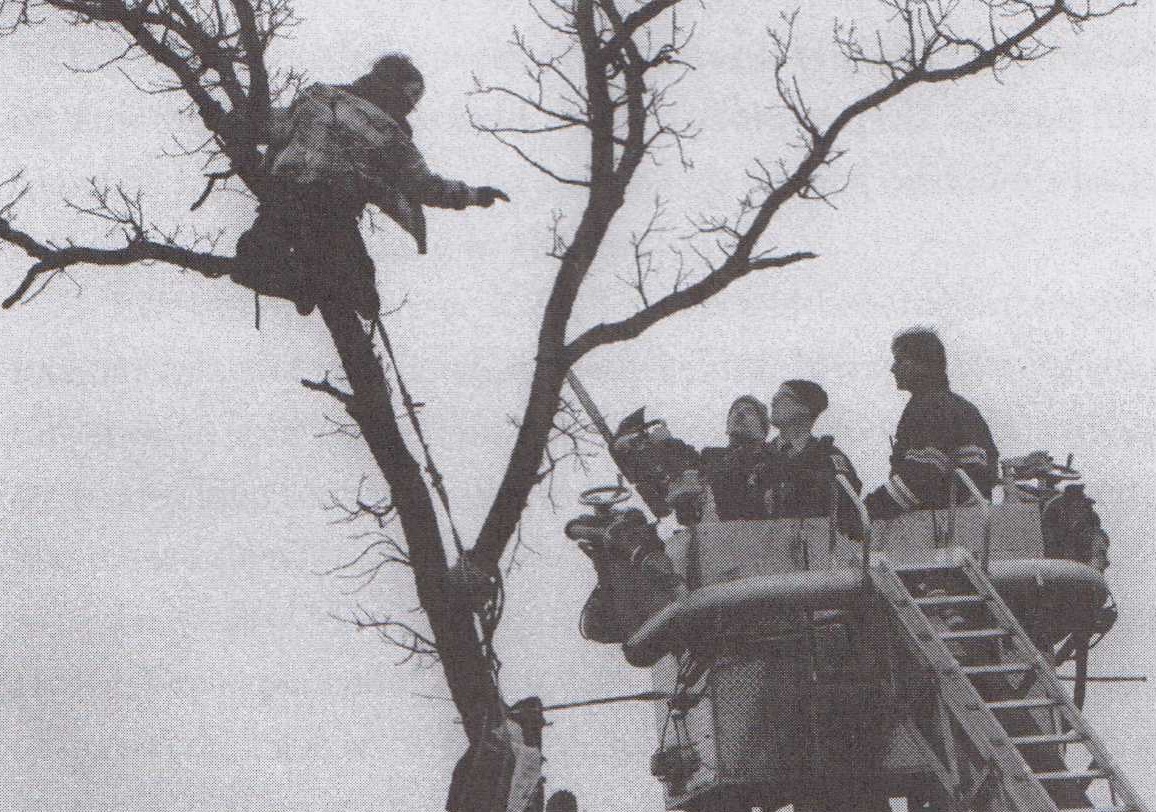
A protester holds forth from one of the few remaining branches of a soon-to-be-felled oak. Photo courtesy of the book “Our Way or the Highway: Inside the Minnehaha Free State”
Claiming to have information that activists were stockpiling weapons and bombs (they weren’t), the Minneapolis Police Department, along with other police departments from across the state, raided the occupation on December 20, 1998. They brought more than 800 officers, the largest police action in state history up to that point.2Mary Losure, Our Way or the Highway: Inside the Minnehaha Free State (Minneapolis: University of Minnesota Press, 2002), ix. SWAT teams, snipers, and cops in riot gear swarmed the encampment, arresting and brutalizing protestors.
The way cops treated two protesters who had locked themselves down in the basement was especially horrific: smearing pepper spray all over the protestors’ faces, they beat one with a flashlight, and held a gun to an 18-year-old girl’s head until she surrendered.3Ibid, 44. In total, 37 people were arrested, 3 of them under 18. The Hennepin County Sheriff held a press conference announcing that 26 protestors would be charged with felonies for obstructing justice with force, but he couldn’t explain why, and no one was actually charged with anything other than a misdemeanor. In the end, all but two of the cases were thrown out, many because of police misconduct.4Ibid, 51;Elizabeth Marie Egan, “A Commemorative History of The Minnehaha Free State and Four Oaks Spiritual Encampment,” CPE Digital Zine Library, July 2006. http://cpezine.omeka.net/items/show/17
After recovering from the raid, the protesters began another occupation in early 1999, this time camping out near four sacred trees in the forest that was to be destroyed for the highway. As construction crews began cutting the forest down, police moved in on this encampment too, arresting more than 50 protesters in the first week of construction. At one point, the state and the city were paying more than $50,000 a day for police protection to ensure that the reroute went forward no matter what.5Losure, 159.
The final raid on the Minnehaha Free State happened on December 11th, 1999, nearly 18 months after the start of the protest. 31 more protesters were arrested, the sacred trees were chopped down, and the forest was razed.
It was far from the last time that a Native sacred site would be destroyed in Minnesota – the theft of land and sacred sites from Native Minnesotans continues to this day, often enforced by police officers.6Brunswick, “Hwy. 55 protest ended; oaks fall – Arrest of 31 protesters carried out peacefully.”Nearly twenty year later, in 2016, the Hennepin County Sheriff’s office sent deputies to North Dakota to attack and criminalize water protectors protesting the construction of a pipeline on the Standing Rock Sioux reservation. The locations and the specifics might change, but the willingness of police to attack peaceful protestors and indigenous sacred sites for the sake of “progress” is a constant.
1.Brunswick, Mark. “Hwy. 55 protest ended; oaks fall – Arrest of 31 protesters carried out peacefully,” Star Tribune: Newspaper of the Twin Cities, December 12, 1999: 01A, accessed November 15, 2017, http://infoweb.newsbank.com/resources/doc/nb/news/0EFD5FDC29810B3C?p=AWNB.
2.Mary Losure, Our Way or the Highway: Inside the Minnehaha Free State (Minneapolis: University of Minnesota Press, 2002), ix.
3.Ibid, 44.
4.Ibid, 51;Elizabeth Marie Egan, “A Commemorative History of The Minnehaha Free State and Four Oaks Spiritual Encampment,” CPE Digital Zine Library, July 2006. http://cpezine.omeka.net/items/show/17
5.Losure, 159.
6.Brunswick, “Hwy. 55 protest ended; oaks fall – Arrest of 31 protesters carried out peacefully.”
Trust as a Four Letter Word: The PCRC and the PCOC
Part I: The PCRC
The Police Community Relations Council (PCRC) was established in 2003 to build trust between the Minneapolis Police Department and marginalized communities. In the end, it did almost exactly the opposite.
Following MPD’s accidental shooting of 11 year old Julius Powell and a subsequent riot in the summer of 2002, community members called for a federal mediator from the Department of Justice to help restore police-community trust.1Communities United Against Police Brutality. “An Analysis of the Minneapolis Federal Mediation Agreement.” 2003. When the mediator arrived, an agreement was made between the city and some community members: they would come together as the PCRC for five years, working together to improve police-community relations. MPD was also required to agree to more than 100 action items by the mediation agreement, most of them small departmental reforms.2Hodges, Betsy. “Mayor Hodges’ Update on 2003 Mediation Agreement Between Community Leaders and MPD.” Mayor Betsy Hodges. March 29, 2016. Accessed November 15, 2017. http://mayorhodges.com/2016/03/mayor-hodges-and-chief-harteau-update-on-2003-mediation-agreement-between-community-leaders-and-mpd/.
From the very beginning, there were community members unsure of the usefulness the PCRC, citing the fact that the community representatives were hand-picked by the city council and the lack of Latino/a, Somali, and Southeast Asian representation.3Communities United Against Police Brutality, “An Analysis of the Minneapolis Federal Mediation Agreement.” They were right to be skeptical: as the initial term of the PCRC wrapped up in 2008, more than 40 of the action items mandated by the mediation agreement were incomplete.4Chanen, David. “Rybak won’t extend police mediation agreement – Now the Police Community Relations Council wants action taken against the department for noncompliance.,” Star Tribune: Newspaper of the Twin Cities (Minneapolis, MN), October 24, 2008: 5B, accessed November 15, 2017, http://infoweb.newsbank.com/resources/doc/nb/news/12421FACB66D8478?p=AWNB. The PCRC passed a vote of “no confidence” in the city and asked Mayor Rybak to continue its work for another year, but he refused, and disbanded the PCRC at the end of 2008.
Former members of PCRC asked once more, in 2009, for help from the Department of Justice: this time not for mediation, but to put the Minneapolis Police Department in receivership, forcing it to reform from the top down. The DOJ decided not to get involved this time and, as members of the PCRC said themselves in 2009, their “clarion call for change [remained] unfulfilled, unfunded, and nonexistent.”5Minnesota Spokesman-Recorder Staff. “Community members of Police Community Relations Council request federal intervention.” Twin Cities Daily Planet. May 04, 2009. Accessed November 15, 2017. https://www.tcdailyplanet.net/community-members-police-community-relations-council-request-federal-intervention/.
Part II: The PCOC
Five years after the PCRC was disbanded, Minneapolis decided to give building community-police trust another shot, creating the Police Conduct Oversight Commission (PCOC) in 2013 to audit the newly formed Office of Police Conduct Review (OPCR) and propose potential reforms to the Minneapolis Police Department.6McKinney, Matt. “Police commission to meet for 1st time,” Star Tribune: Newspaper of the Twin Cities (Minneapolis, MN), October 06, 2013: 05B, accessed November 15, 2017, http://infoweb.newsbank.com/resources/doc/nb/news/1495295D8D7B0CC0?p=AWNB. Unfortunately, with no Department of Justice mediation agreement, and no power to force MPD to change, the police are free to adopt whatever PCOC suggestions they like and discard the rest. For example, though the PCOC created a list of policy recommendations for body camera use, it took months of back-and-forth for MPD to add any of them to policy.
One commissioner described it as a “slap in the face,” saying that the department’s police-community relations strategy was little more than lip service.7Jany, Libor. “Civilian review board strives to be heard – Mpls. panel frustrated at lack of influence on police.,” Star Tribune: Newspaper of the Twin Cities (Minneapolis, MN), August 15, 2016: 01A, accessed November 15, 2017, http://infoweb.newsbank.com/resources/doc/nb/news/15ED9561DDA5DBE8?p=AWNB.If the PCRC and the PCOC are anything to go by, that’s what all police-community trust building initiatives are: public relations programs. Increasing “police-community trust” without any real accountability is losing battle, one that does nothing to keep our city safer from those who are supposed to be protecting us.
1.Communities United Against Police Brutality. “An Analysis of the Minneapolis Federal Mediation Agreement.” 2003.
2.Hodges, Betsy. “Mayor Hodges’ Update on 2003 Mediation Agreement Between Community Leaders and MPD.” Mayor Betsy Hodges. March 29, 2016. Accessed November 15, 2017. http://mayorhodges.com/2016/03/mayor-hodges-and-chief-harteau-update-on-2003-mediation-agreement-between-community-leaders-and-mpd/.
3.Communities United Against Police Brutality, “An Analysis of the Minneapolis Federal Mediation Agreement.”
4.Chanen, David. “Rybak won’t extend police mediation agreement – Now the Police Community Relations Council wants action taken against the department for noncompliance.,” Star Tribune: Newspaper of the Twin Cities (Minneapolis, MN), October 24, 2008: 5B, accessed November 15, 2017, http://infoweb.newsbank.com/resources/doc/nb/news/12421FACB66D8478?p=AWNB.
5.Minnesota Spokesman-Recorder Staff. “Community members of Police Community Relations Council request federal intervention.” Twin Cities Daily Planet. May 04, 2009. Accessed November 15, 2017. https://www.tcdailyplanet.net/community-members-police-community-relations-council-request-federal-intervention/.
6.McKinney, Matt. “Police commission to meet for 1st time,” Star Tribune: Newspaper of the Twin Cities (Minneapolis, MN), October 06, 2013: 05B, accessed November 15, 2017, http://infoweb.newsbank.com/resources/doc/nb/news/1495295D8D7B0CC0?p=AWNB.
7.Jany, Libor. “Civilian review board strives to be heard – Mpls. panel frustrated at lack of influence on police.,” Star Tribune: Newspaper of the Twin Cities (Minneapolis, MN), August 15, 2016: 01A, accessed November 15, 2017, http://infoweb.newsbank.com/resources/doc/nb/news/15ED9561DDA5DBE8?p=AWNB.
The Murder of Courtney Williams
“If it was a different community, he would have been talked to instead of shot first.”1Shannon Prather, “Boy 15, Shot To Death By Police – Family skeptical of Reports That Teen Was Wielding Pellet Gun,” St. Paul Pioneer Press (MN), 25 Oct. 2004, St. Paul, MAIN, p. A1. NewsBank, infoweb.newsbank.com/resources/doc/nb/news/106026BF8597FDC6?p=AWNB. Accessed 15 Oct. 2017.
– Jemel Brewer, Courtney Williams’ uncle

School portrait of Courtney Williams: Photo Richard Tsong-Taatarii, Star Tribune
On October 23rd, 2004, Black 15 year old Courtney Williams was engaged in an age-old ritual among teenagers: anxiously finishing up his chores so he could go to a party. A friend of his was hosting a 17th birthday party and he wanted to go. He finished up and made it to the party, and spend several hours hanging out, rapping, and talking to girls. When the party ended, he gave the birthday boy a hug and walked out into the October night with a few friends.2Howie Padilla. “Grand jury hears slain boy’s mom,” Star Tribune: Newspaper of the Twin Cities (Minneapolis, MN), 4 Feb. 2005, METRO, NEWS, p. 1B. NewsBank, infoweb.newsbank.com/resources/doc/nb/news/10824DC279BA4380?p=AWNB. Accessed 15 Oct. 2017. They were headed to a friend’s house to spend the night. One of them was carrying a toy pistol. Just after midnight, someone called 911, reporting that they’d seen a group of black youth with a gun. Minneapolis Police Officer Officer Scott Mars was dispatched to track them down.
The group of teenagers realized the police were coming and looked down at the gun, afraid. They started running, passing the gun back and forth between them in a nervous panic. Eventually it ended up in Courtney Williams’ hand. Officer Mars saw him running with it and yelled for him to stop. Williams came to a stop just 4 blocks from where Julius Powell had been shot two years earlier. He looked over his shoulder at the police officer and started turning around in order to surrender and Mars, thinking he was in danger, pulled out his gun and shot the 15 year old twice, in the head and in the shoulder.3Terry Collins, “Police shooting report is released – Boy says pellet gun was passed to Courtney Williams.” Star Tribune: Newspaper of the Twin Cities (Minneapolis, MN), 8 Feb. 2005, METRO, NEWS, p. 1B. NewsBank, infoweb.newsbank.com/resources/doc/nb/news/1083E2FD0966186E?p=AWNB. Accessed 15 Oct. 2017. Courtney Williams was pronounced dead at 1:25 am at nearby North Memorial hospital.4Brandt Williams, “Police urge calm in wake of shooting of teen.” Minnesota Public Radio: Web Edition Articles (MN), 25 Oct. 2004, News. NewsBank, infoweb.newsbank.com/resources/doc/nb/news/14DA97C264924E00?p=AWNB. Accessed 15 Oct. 2017.
Hundreds showed up to funerals in Minneapolis and Chicago to honor his life.5Howie Padilla, “Grand jury hears slain boy’s mom.” In the aftermath of the shooting, Officer Mars was placed on desk duty while a criminal investigation got underway. Aware that the decision of whether or not to charge police officers usually goes to a grand jury, a secretive and biased process, Williams’ mother, Tahisha Brewer, wrote to then-County Attorney Amy Klobuchar and asked her to decide personally whether Officer Mars should be prosecuted. “I want this process out in the open, where everyone can observe it and make sure that it is fair to my son,” she wrote in late November. Klobuchar didn’t listen; in early 2005 she presented the case to the grand jury, and on February 4th, they decided not to indict Scott Mars.6Howie Padilla, “County attorney urged to act in teen’s shooting – Don’t leave decision on charges up to a grand jury, mother says..” Star Tribune: Newspaper of the Twin Cities (Minneapolis, MN), 3 Dec. 2004, METRO, NEWS, p. 1B. NewsBank, infoweb.newsbank.com/resources/doc/nb/news/106C40FD0A83221C?p=AWNB. Accessed 15 Oct. 2017. An MPD internal investigation also cleared Mars of wrongdoing: the department had a mandatory “shoot to kill” policy at the time,7David Chanen, “Mother of teen killed by police in ’04 sues city – Courtney Williams, 15, was shot by a Minneapolis officer in circumstances the family disputes. His mom sued last month, demanding answers,” Star Tribune: Newspaper of the Twin Cities (Minneapolis, MN), 13 Nov. 2010, METRO, NEWS, p. 01B. NewsBank, infoweb.newsbank.com/resources/doc/nb/news/13387B578673EAA0?p=AWNB. Accessed 15 Oct. 2017. a policy Mars had followed to the letter. He was back on patrol less than two weeks later.8Terry Collins, “Police shooting report is released.”
He didn’t stay in the department for long, though. In 2008, he was convicted of a felony after he was arrested driving away from a party in Southwest Minneapolis. When a neighbor had asked them to keep the noise down, Mars pulled up outside the man’s house and fired several shots out of his SUV’s open sunroof. He drunkenly drove away, only to be pulled over minutes later. He ended up blowing a .19 Blood Alcohol Level.9David Chanen, “Two off-duty officers face felony charges – They were charged with drinking and firing their guns into the air after leaving a party in south Minneapolis,” Star Tribune: Newspaper of the Twin Cities (Minneapolis, MN), 21 Jun. 2008, METRO, NEWS, p. 1B. NewsBank, infoweb.newsbank.com/resources/doc/nb/news/1218A0C126509800?p=AWNB. Accessed 15 Oct. 2017. He never ended up serving jail time, though – the judge ruled that losing his job and his peace officer license was punishment enough, and gave him 30 days of house arrest.10“Eyewitness News 11am – 11:00:10.” ABC – 5 KSTP (Minneapolis, MN), 30 Jan. 2009. NewsBank, infoweb.newsbank.com/resources/doc/nb/news/1261A0BB677DC590?p=AWNB. Accessed 15 Oct. 2017. All this from an officer the police union head John Delmonico had described as “outstanding” following Courtney Williams’ death.11Howie Padilla, “Grand jury clears officer – He fatally shot teen last October.” Star Tribune: Newspaper of the Twin Cities (Minneapolis, MN), 5 Feb. 2005, METRO, NEWS, p. 1B. NewsBank, infoweb.newsbank.com/resources/doc/nb/news/10825334E87A368C?p=AWNB. Accessed 15 Oct. 2017.
Tahisha Brewer eventually filed a wrongful death lawsuit against the city for her son’s murder. The case dragged on for years, finally being settled out of court for $20,000 in 2013.12Skarda, “Letter to Minneapolis Ways and Means Budget Committee Request for City Council Committee Action.” 2013 Years after her son finished his chores so he could go to a birthday party, she finally found some peace. “I’m at a place right now where I can deal with his death,” she said. “But I’ve been dealing with it every day because we never got any justice.”13David Chanen, “Mother of teen killed by police in ’04 sues city – Courtney Williams, 15, was shot by a Minneapolis officer in circumstances the family disputes. His mom sued last month, demanding answers,” Star Tribune: Newspaper of the Twin Cities (Minneapolis, MN), 13 Nov. 2010, METRO, NEWS, p. 01B. NewsBank, infoweb.newsbank.com/resources/doc/nb/news/13387B578673EAA0?p=AWNB. Accessed 15 Oct. 2017.
1.Shannon Prather, “Boy 15, Shot To Death By Police – Family skeptical of Reports That Teen Was Wielding Pellet Gun,” St. Paul Pioneer Press (MN), 25 Oct. 2004, St. Paul, MAIN, p. A1. NewsBank, infoweb.newsbank.com/resources/doc/nb/news/106026BF8597FDC6?p=AWNB. Accessed 15 Oct. 2017.
2.Howie Padilla. “Grand jury hears slain boy’s mom,” Star Tribune: Newspaper of the Twin Cities (Minneapolis, MN), 4 Feb. 2005, METRO, NEWS, p. 1B. NewsBank, infoweb.newsbank.com/resources/doc/nb/news/10824DC279BA4380?p=AWNB. Accessed 15 Oct. 2017.
3.Terry Collins, “Police shooting report is released – Boy says pellet gun was passed to Courtney Williams.” Star Tribune: Newspaper of the Twin Cities (Minneapolis, MN), 8 Feb. 2005, METRO, NEWS, p. 1B. NewsBank, infoweb.newsbank.com/resources/doc/nb/news/1083E2FD0966186E?p=AWNB. Accessed 15 Oct. 2017.
4.Brandt Williams, “Police urge calm in wake of shooting of teen.” Minnesota Public Radio: Web Edition Articles (MN), 25 Oct. 2004, News. NewsBank, infoweb.newsbank.com/resources/doc/nb/news/14DA97C264924E00?p=AWNB. Accessed 15 Oct. 2017.
5.Howie Padilla, “Grand jury hears slain boy’s mom.”
6.Howie Padilla, “County attorney urged to act in teen’s shooting – Don’t leave decision on charges up to a grand jury, mother says..” Star Tribune: Newspaper of the Twin Cities (Minneapolis, MN), 3 Dec. 2004, METRO, NEWS, p. 1B. NewsBank, infoweb.newsbank.com/resources/doc/nb/news/106C40FD0A83221C?p=AWNB. Accessed 15 Oct. 2017.
7.David Chanen, “Mother of teen killed by police in ’04 sues city – Courtney Williams, 15, was shot by a Minneapolis officer in circumstances the family disputes. His mom sued last month, demanding answers,” Star Tribune: Newspaper of the Twin Cities (Minneapolis, MN), 13 Nov. 2010, METRO, NEWS, p. 01B. NewsBank, infoweb.newsbank.com/resources/doc/nb/news/13387B578673EAA0?p=AWNB. Accessed 15 Oct. 2017.
8.Terry Collins, “Police shooting report is released.”
9.David Chanen, “Two off-duty officers face felony charges – They were charged with drinking and firing their guns into the air after leaving a party in south Minneapolis,” Star Tribune: Newspaper of the Twin Cities (Minneapolis, MN), 21 Jun. 2008, METRO, NEWS, p. 1B. NewsBank, infoweb.newsbank.com/resources/doc/nb/news/1218A0C126509800?p=AWNB. Accessed 15 Oct. 2017.
10.”Eyewitness News 11am – 11:00:10.” ABC – 5 KSTP (Minneapolis, MN), 30 Jan. 2009. NewsBank, infoweb.newsbank.com/resources/doc/nb/news/1261A0BB677DC590?p=AWNB. Accessed 15 Oct. 2017.
11.Howie Padilla, “Grand jury clears officer – He fatally shot teen last October.” Star Tribune: Newspaper of the Twin Cities (Minneapolis, MN), 5 Feb. 2005, METRO, NEWS, p. 1B. NewsBank, infoweb.newsbank.com/resources/doc/nb/news/10825334E87A368C?p=AWNB. Accessed 15 Oct. 2017.
12.Skarda, “Letter to Minneapolis Ways and Means Budget Committee Request for City Council Committee Action.” 2013
13.David Chanen, “Mother of teen killed by police in ’04 sues city – Courtney Williams, 15, was shot by a Minneapolis officer in circumstances the family disputes. His mom sued last month, demanding answers,” Star Tribune: Newspaper of the Twin Cities (Minneapolis, MN), 13 Nov. 2010, METRO, NEWS, p. 01B. NewsBank, infoweb.newsbank.com/resources/doc/nb/news/13387B578673EAA0?p=AWNB. Accessed 15 Oct. 2017.
City Heat: The Mistreatment of Juan Vasquez
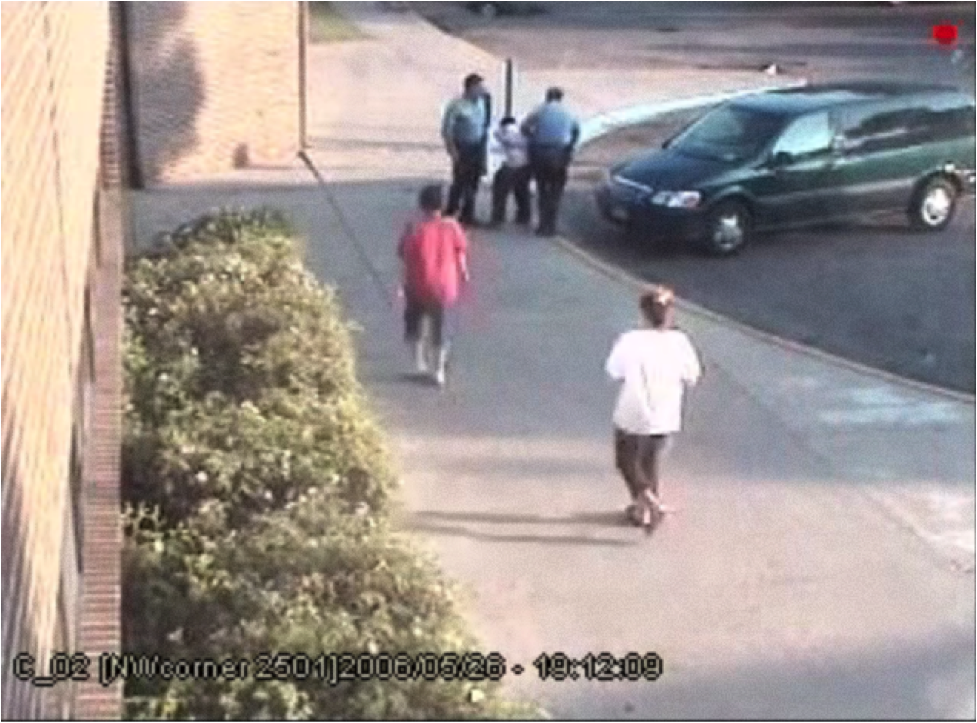
https://www.youtube.com/watch?v=skaabx2M-Ok
Still image from video where Vasquez appears to take a blow from an MPD officer.
May 26th, 2006 was a very hot day- temperatures were in the 80s, and by all accounts it was sweltering. That day, Minneapolis Police Officers Michael Fossum and Rick Thomas broke up a fight at Little Earth, arresting Juan Vasquez, a 24 year old Native-Latino man, after finding a small amount of cocaine near the fight.1Terry Collins, “Little Earth leader declines to describe taped incident – Community members pressed for information on allegations that put two officers on paid leave, but Bill Ziegler and Minneapolis police officials gave few details,” Star Tribune, 7 Jun. 2006, Metro News, p. 5B. NewsBank, infoweb.newsbank.com/resources/doc/nb/news/1121D23696C75E7D?p=AWNB. Accessed 29 Sep. 2017. Witnesses reported seeing the officers beat Vasquez after he was already in handcuffs, then toss him into the back of a squad car alone for more than 30 minutes with the windows rolled up and with no air conditioning.2Ibid. Vasquez’ father and girlfriend arrived, finding him unconscious in the back of the squad car, and demanded an ambulance be called.3David Chanen, “No charges to be filed in Little Earth incident – Two Minneapolis police lieutenants had faced allegations that they mistreated a man in May,” Star Tribune, 12 Aug. 2006, Metro News p. 5B. NewsBank, infoweb.newsbank.com/resources/doc/nb/news/113822B24EA684D0?p=AWNB. Accessed 29 Sep. 2017. After the paramedics verified that he was okay, he was taken to jail. Interestingly, Fossum and Thomas did not indicate their use of force on the incident report.4G.R. Anderson Jr., “Little Earth releases video of MPD incident” City Pages (Minneapolis, MN) 8 Jun. 2006, http://www.citypages.com/news/little-earth-releases-video-of-mpd-incident-6543908. Accessed 29 Sep. 2017.
This wasn’t the first complaint against the officers. Fossum and Thomas had both been suspended previously for code of ethics violations, and Fossum, who was the head of MPD’s robbery department at the time, had been demoted twice as a disciplinary action.5Terry Collins, “Little Earth leader declines to describe taped incident.”
On June 5th, both officers were placed on paid administrative leave while an investigation got underway. Little Earth had video footage of the whole incident, which was initially given only to the police department; after a community outcry for transparency, the footage was also provided to the larger community.6G.R. Anderson Jr., “Little Earth releases video of MPD incident.” The case was turned over to the St. Paul city attorney’s office to decide whether or not to indict the officers.7Chao Xiong, “City attorney will get Little Earth case,” Star Tribune, 14 Jun. 2006, Metro News, p. 5B. NewsBank, infoweb.newsbank.com/resources/doc/nb/news/11241CBFD0EBF090?p=AWNB. Accessed 29 Sep. 2017.
On August 12th, St. Paul City Attorney John Choi decided not to charge Fossum and Thomas for brutalizing Juan Vasquez. Vasquez, on the other hand, plead guilty to a second-degree controlled substance violation. As always: the message to the community was clear: Indigenous communities and communities of color can be attacked and brutalized by police officers at will, and the system has no interest in real accountability.
1.Terry Collins, “Little Earth leader declines to describe taped incident – Community members pressed for information on allegations that put two officers on paid leave, but Bill Ziegler and Minneapolis police officials gave few details,” Star Tribune, 7 Jun. 2006, Metro News, p. 5B. NewsBank, infoweb.newsbank.com/resources/doc/nb/news/1121D23696C75E7D?p=AWNB. Accessed 29 Sep. 2017.
2.Ibid.
3.David Chanen, “No charges to be filed in Little Earth incident – Two Minneapolis police lieutenants had faced allegations that they mistreated a man in May,” Star Tribune, 12 Aug. 2006, Metro News p. 5B. NewsBank, infoweb.newsbank.com/resources/doc/nb/news/113822B24EA684D0?p=AWNB. Accessed 29 Sep. 2017.
4.G.R. Anderson Jr., “Little Earth releases video of MPD incident” City Pages (Minneapolis, MN) 8 Jun. 2006, http://www.citypages.com/news/little-earth-releases-video-of-mpd-incident-6543908. Accessed 29 Sep. 2017.
5.Terry Collins, “Little Earth leader declines to describe taped incident.”
6.G.R. Anderson Jr., “Little Earth releases video of MPD incident.”
7.Chao Xiong, “City attorney will get Little Earth case,” Star Tribune, 14 Jun. 2006, Metro News, p. 5B. NewsBank, infoweb.newsbank.com/resources/doc/nb/news/11241CBFD0EBF090?p=AWNB. Accessed 29 Sep. 2017.
The Murder of Fong Lee
On July 22nd, 2006, 19 year old Fong Lee was with a group of friends outside Cityview elementary school in North Minneapolis when they were attacked by two police officers, Minneapolis officer Jason Andersen and state patrol trooper Craig Benz. The officers, claiming to see a gun changing hands, sped their car across a grassy field, hitting Lee on his bike.1Thao, Elizabeth. “Police Officers Found Not Guilty in the Shooting of Fong Lee.” Hmong Times Online. June 4, 2009. Accessed November 15, 2017. http://www.hmongtimes.com/main.asp?SectionID=31&SubSectionID=190&ArticleID=1902. Andersen got out of the squad car, chasing Lee on foot. Claiming that he had a gun and had “raised his arm,” Andersen shot him three times in the back, then five more times where he laid on the ground.2Ibid.
From the beginning, there were many inconsistencies with Andersen’s description of what happened. Though eyewitnesses reported seeing the squad car hitting Lee’s bike, the official police report said that Lee dropped his bike and began running away on foot.3Williams, Brandt. “Fong Lee’s family angered by verdict.” Minnesota Public Radio News. May 28, 2009. Accessed November 15, 2017. https://www.mprnews.org/story/2009/05/28/fonglee_verdict. Though law enforcement experts found that no gun was visible in surveillance footage of the incident, Andersen claimed that Lee had a gun, and was pointing at him.4Fox 9, “What You Can’t See,” https://www.youtube.com/watch?v=z2Dm4SX-N5M, 2009. Andersen also claimed in one account that Lee dropped the gun as he fell to the ground, and in another account that Lee pointed the gun at him from the ground.5 A law enforcement expert also mentioned that Lee had blood in the palm of his hand, which wouldn’t have happened if Lee was holding a gun. Although Andersen testified that Lee had this gun in his right hand, the pistol recovered at the scene was found three feet from Lee’s left hand.5Ibid.
There’s plenty of evidence to suggest that police planted the gun next to Fong Lee’s body. First of all, the gun found next to Lee didn’t have his sweat, blood, or fingerprints anywhere on it, and hadn’t been fired.6Williams, “Fong Lee’s family angered by verdict.” Secondly, the gun that was found next to Lee had been recovered by the Minneapolis Police Department following a burglary two years earlier, and was supposed to be in MPD custody.7Hanners, “IN FONG LEE SHOOTING, A NEW TWIST – DESPITE POLICE CLAIM, MAN DENIES EVER OWNING GUN AT CENTER OF EVIDENCE DISPUTE.” The officer who had recovered that pistol was the first officer on the scene following the Fong Lee shooting.8 To top it all off, this wasn’t even the first time Jason Andersen had been accused of planting a gun on a suspect; a year before, a man named Quenton Tyrone Williams testified at a trial that Andersen had planted a gun on him in order to pressure him into becoming an informant.8Hanners, David. “SAME COP, SAME CLAIM THAT GUN WAS PLANTED – BEFORE FONG LEE TRIAL, OFFICER DENIED SETUP OF DRUG SUSPECT,” St. Paul Pioneer Press (MN), July 26, 2009: A1, accessed November 15, 2017, http://infoweb.newsbank.com/resources/doc/nb/news/129BFF4AE0B8EC30?p=AWNB.
Despite all the evidence that Fong Lee didn’t do anything wrong, Andersen was returned to duty after only two days, before any investigation had concluded.9Hanners, “IN FONG LEE SHOOTING, A NEW TWIST – DESPITE POLICE CLAIM, MAN DENIES EVER OWNING GUN AT CENTER OF EVIDENCE DISPUTE.” He was later cleared of any wrongdoing by an Internal Affairs Investigation and a Hennepin County Grand Jury. Fong Lee’s family also filed a wrongful death lawsuit, but an all-white jury found Andersen not guilty.
Hundreds of community members came together to protest the verdict and demand accountability from the Minneapolis Police Department.10Thao, “Police Officers Found Not Guilty in the Shooting of Fong Lee.” The city’s response was simple – almost exactly two years after the shooting, the MPD awarded the Medal of Valor, their second-highest honor, to Jason Andersen for killing Fong Lee.11Chanen, David. “ONE SHOOTING. TWO STORIES. – Was this gun in the hand of Fong Lee when he was fatally shot by a Minneapolis police officer? Or was the weapon planted at the scene?,” Star Tribune: Newspaper of the Twin Cities (Minneapolis, MN), April 03, 2009: 1A, accessed November 15, 2017, http://infoweb.newsbank.com/resources/doc/nb/news/1276DDE5F96DE398?p=AWNB.
1.Thao, Elizabeth. “Police Officers Found Not Guilty in the Shooting of Fong Lee.” Hmong Times Online. June 4, 2009. Accessed November 15, 2017. http://www.hmongtimes.com/main.asp?SectionID=31&SubSectionID=190&ArticleID=1902.
2.Ibid.
3.Williams, Brandt. “Fong Lee’s family angered by verdict.” Minnesota Public Radio News. May 28, 2009. Accessed November 15, 2017. https://www.mprnews.org/story/2009/05/28/fonglee_verdict.
4.Fox 9, “What You Can’t See,” https://www.youtube.com/watch?v=z2Dm4SX-N5M, 2009.
5.Ibid.
6.Ibid.
7.Hanners, David. “IN FONG LEE SHOOTING, A NEW TWIST – DESPITE POLICE CLAIM, MAN DENIES EVER OWNING GUN AT CENTER OF EVIDENCE DISPUTE,” St. Paul Pioneer Press (MN), April 08, 2009: A1, accessed November 15, 2017, http://infoweb.newsbank.com/resources/doc/nb/news/127765A0813B8D40?p=AWNB.
8.Williams, “Fong Lee’s family angered by verdict.”
9.Hanners, “IN FONG LEE SHOOTING, A NEW TWIST – DESPITE POLICE CLAIM, MAN DENIES EVER OWNING GUN AT CENTER OF EVIDENCE DISPUTE.”
10.Williams, “Fong Lee’s family angered by verdict.”
11.Hanners, David. “SAME COP, SAME CLAIM THAT GUN WAS PLANTED – BEFORE FONG LEE TRIAL, OFFICER DENIED SETUP OF DRUG SUSPECT,” St. Paul Pioneer Press (MN), July 26, 2009: A1, accessed November 15, 2017, http://infoweb.newsbank.com/resources/doc/nb/news/129BFF4AE0B8EC30?p=AWNB.
12.Hanners, “IN FONG LEE SHOOTING, A NEW TWIST – DESPITE POLICE CLAIM, MAN DENIES EVER OWNING GUN AT CENTER OF EVIDENCE DISPUTE.”
13.Thao, “Police Officers Found Not Guilty in the Shooting of Fong Lee.”
14.Chanen, David. “ONE SHOOTING. TWO STORIES. – Was this gun in the hand of Fong Lee when he was fatally shot by a Minneapolis police officer? Or was the weapon planted at the scene?,” Star Tribune: Newspaper of the Twin Cities (Minneapolis, MN), April 03, 2009: 1A, accessed November 15, 2017, http://infoweb.newsbank.com/resources/doc/nb/news/1276DDE5F96DE398?p=AWNB.
Cops Who Think Cops Are Racist – The Mill City 5
When civilians call out brutality and systemic racism in police departments, one of the most common responses from cops is that the average citizen doesn’t understand police work. Only cops should criticize cops, or so the argument goes. But what happens when it’s police officers calling out the department for failing to protect and serve the community?
In 2007, five Black police officers sued the Minneapolis Police Department for systemic racism and discrimination. Officers Medaria Arradondo, Donald Harris, Charlie Adams, Dennis Hamilton, and Lee Edwards, all with more than 20 years of experience on the force, claimed that MPD had “systematically and continuously discriminated in favor of white persons and against persons of color.”1MPD Officers’ Lawsuit.” United States District Court District Of Minnesota Fourth Division. 2007. http://minnesota.publicradio.org/features/2007/12/03_williamsb_copslawsuit/complaint.pdf. Later becoming known as the Mill City 5, they demanded hundreds of thousands of dollars worth of damages and injunctions forcing the police department to end racial discrimination.2Jany, Libor. “Kroll takes, returns fire on all sides – Lt. Bob Kroll is outspoken in his criticism of Mpls. officials over the Jamar Clark case.,” Star Tribune: Newspaper of the Twin Cities (Minneapolis, MN), December 11, 2015: 01A, accessed November 15, 2017, http://infoweb.newsbank.com/resources/doc/nb/news/159ADE5BD036FC58?p=AWNB.
The lawsuit was a response to Black officers’ being attacked, marginalized, and discriminated against in the department. As they put it, “Minneapolis has a history of tolerating racist and discriminatory remarks by its white police officers and [engaging] in discriminatory conduct against its African American police officers.”3“MPD Officers’ Lawsuit” Some of the examples they gave were brutal: in 1992, twelve black police officers received letters containing death threats signed by the KKK – letters sent from within the department.4Nelson, Tim. “BLACK OFFICERS SAY LIVES THREATENED,” St. Paul Pioneer Press (MN), January 29, 1992: 1C, accessed November 15, 2017, http://infoweb.newsbank.com/resources/doc/nb/news/0EB5DB806B60BEC3?p=AWNB. Others are more mundane: Black officers were disciplined more than white officers, denied opportunities for overtime pay, and kept out of any leadership positions in the department.5Williams, Brandt. “Minneapolis cops file discrimination lawsuit.” Minnesota Public Radio News. December 03, 2007. Accessed November 15, 2017. https://www.mprnews.org/story/2007/12/03/copslawsuit.
Particularly concerning in the lawsuit were Black officers’ claims that MPD hired and retained bigots.The police chief at the time, Tim Dolan, was alleged to have vandalized Black families’ home and placed “racist hate literature” in Black students lockers as a teenager.6“MPD Officers’ Lawsuit”, 5. Bob Kroll, current president of the police union, who was a lieutenant at the time, is mentioned numerous times as a constant source of tension; he made racist and homophobic remarks and denied Black officers opportunities for overtime pay that were given to white officers, but was never held accountable as a “crony” of the chief.7Ibid.
The city and the Black officers reached an unprecedented settlement number in 2008: the officers would be awarded $2 Million, with the city being required to create a new unit focusing on discrimination and race issues.8Chanen, David. “Five black cops who sued city to get $2M – Along with the money, a proposed settlement in Minneapolis would create a unit to oversee diversity and race issues.,” Star Tribune: Newspaper of the Twin Cities (Minneapolis, MN), July 23, 2008: 1A, accessed November 15, 2017, http://infoweb.newsbank.com/resources/doc/nb/news/1223CA782968F3C0?p=AWNB. The city council rejected the proposed settlement, and it took another year for a final agreement to be reached. According to the new terms of this settlement, the city paid $740,000 to the Mill City 5, but wasn’t required to admit wrongdoing, change any policies, or establish a racial discrimination unit.9Chanen, David. “Minneapolis settles suit with high-ranking black officers – The officers alleged a history of racial discrimination that only got worse.,” Star Tribune: Newspaper of the Twin Cities (Minneapolis, MN), April 11, 2009: 1A, accessed November 15, 2017, http://infoweb.newsbank.com/resources/doc/nb/news/1278E57994D7D4A8?p=AWNB.
Medaria Arradondo, one of the officers who sued the Minneapolis Police Department in 2007, was appointed the new police chief in 2017. Bob Kroll now serves as the police union head, chosen by an overwhelming majority of the rank-and-file of the department. When two parties settle a lawsuit, it means that neither wins, and neither loses. But when even cops complain of a culture of systemic racism in our police departments, we all lose.
“1.MPD Officers’ Lawsuit.” United States District Court District Of Minnesota Fourth Division. 2007. http://minnesota.publicradio.org/features/2007/12/03_williamsb_copslawsuit/complaint.pdf.
2.Jany, Libor. “Kroll takes, returns fire on all sides – Lt. Bob Kroll is outspoken in his criticism of Mpls. officials over the Jamar Clark case.,” Star Tribune: Newspaper of the Twin Cities (Minneapolis, MN), December 11, 2015: 01A, accessed November 15, 2017, http://infoweb.newsbank.com/resources/doc/nb/news/159ADE5BD036FC58?p=AWNB.
3.“MPD Officers’ Lawsuit”
4..Nelson, Tim. “BLACK OFFICERS SAY LIVES THREATENED,” St. Paul Pioneer Press (MN), January 29, 1992: 1C, accessed November 15, 2017, http://infoweb.newsbank.com/resources/doc/nb/news/0EB5DB806B60BEC3?p=AWNB.
5..Williams, Brandt. “Minneapolis cops file discrimination lawsuit.” Minnesota Public Radio News. December 03, 2007. Accessed November 15, 2017. https://www.mprnews.org/story/2007/12/03/copslawsuit.
6.“MPD Officers’ Lawsuit”, 5.
7.Ibid.
8.Chanen, David. “Five black cops who sued city to get $2M – Along with the money, a proposed settlement in Minneapolis would create a unit to oversee diversity and race issues.,” Star Tribune: Newspaper of the Twin Cities (Minneapolis, MN), July 23, 2008: 1A, accessed November 15, 2017, http://infoweb.newsbank.com/resources/doc/nb/news/1223CA782968F3C0?p=AWNB.
9.Chanen, David. “Minneapolis settles suit with high-ranking black officers – The officers alleged a history of racial discrimination that only got worse.,” Star Tribune: Newspaper of the Twin Cities (Minneapolis, MN), April 11, 2009: 1A, accessed November 15, 2017, http://infoweb.newsbank.com/resources/doc/nb/news/1278E57994D7D4A8?p=AWNB.
Knock on Wood: A Botched Raid in North Minneapolis
“They never identified themselves; we thought they were a whole bunch of drunk, crazy guys. We didn’t know anything until my oldest son yelled, ‘Dad, it’s the police!’”1 Rodrigo Zamith, “A mistake- an Apology – and a medal – A family whose house was raided by police in error is outraged that eight officers involved were honored. Police say the eight, who also took fire, ‘performed bravely,’” Star Tribune: Newspaper of the Twin Cities (Minneapolis, MN), 30 Jul. 2008.
– Yee Moua

Vang Khang stands in his bedroom next to bullet holes in his walls due to a botched Minneapolis Police SWAT team raid. Quad City Times
Early in the morning of December 16th, 2007, Yee Moua was watching TV in her living room. Her husband, Vang Khang, and their six children had long since gone to sleep. Around 12:30 am, she heard loud voices outside, followed by someone shattering the kitchen window. She heard a loud bang as she ran up the stairs to get her husband. “Wake up, I think someone is trying to break in,” she said, shaking him awake. She started dialing 911 as Khang retrieved his 12-gauge shotgun from the closet, ready to defend his wife and children.
What he didn’t know is that the people breaking into his home weren’t burglars – they were a Minneapolis Police Department SWAT team.2Terry Collins, “Minneapolis Police Department: North Side Raid – Chief Tim Dolan met with Vang Khang to explain an errant SWAT team raid on his family’s Minneapolis home. The officers went to the wrong house,” Star Tribune: Newspaper of the Twin Cities (Minneapolis, MN), 19 Dec. 2007.Unable to understand the SWAT Team’s warning because he didn’t speak English, Khang fired a warning shot from his shotgun, and then fired twice through the bedroom wall at the intruders, hitting one in the head and two in the back. The officers fired twenty two shots back at him before encountering Moua and Khang’s children and realizing that the house was not full of the violent gang members that they had thought were living there. Khang’s eldest son yelled to his father in Hmong that the intruders were actually police officers, and the shooting stopped. Miraculously, no one was seriously injured: Khang had hit the officer’s’ bulletproof vests and helmets, and the officers had missed Khang entirely. Khang surrendered his shotgun, and he and his wife were treated roughly, with no explanation as to why they were being attacked as their children looked on.3Rodrigo Zamith, “A mistake- an Apology – and a medal.” The whole story wouldn’t come out until later.
Two days after the raid, Police Chief Tim Dolan met with Moua and Khang to explain what had happened. It turns out that the SWAT team had gotten a tip from an informant that Black gang members were living at the address they raided, and secured a “no knock” warrant to break in and search the house for weapons. They’d completely ignored the Hmong ornaments and decorations outside of the house, and staged the raid anyways. The Chief apologized to Moua and Khang, but as Moua put it, “I’m glad he talked to us and apologized and said he was willing to help us, But nothing will be the same again. Nothing can change what happened.”4 Terry Collins, “Minneapolis Police Department: North Side Raid.”
The officers involved were put on administrative leave, and later cleared of any wrongdoing by an internal affairs investigation. Far from being disciplined, eight officers actually received medals for attacking Moua and Khang’s house.5 “Police in botched raid honored.” Daily Journal, The (International Falls, MN), 31 Jul. 2008, News, p. 5. NewsBank, infoweb.newsbank.com/resources/doc/nb/news/122495FFFA061870?p=AWNB. Accessed 22 Oct. 2017. The family was horrified: “I’m shocked that they’re receiving awards for that night,” Yee Moua told a reporter. “My family is a mess right now. My son, who saw the shooting, still has nightmares and has needed therapy. They’ve ruined a life, and I don’t understand why they would get rewarded for that.”6Rodrigo Zamith, “A mistake- an Apology – and a medal.” The Police Chief said that he knew awarding the medals was controversial, but they’d never not given a medal to an officer shot while on duty, regardless of the circumstances.
The city eventually awarded Yee Moua and Vang Khang a $612,498 settlement after the raid. The settlement also required MPD to appoint a police liaison to the Hmong community and increase efforts to recruit Hmong officers. Police described the raid as “unfortunate,” but said they looked forward to “building a stronger relationship with the Hmong community moving forward.”7Norman Draper, “Botched raid costs city big bucks – In a deal OK’d by the City Council, Minneapolis will pay a family more than $600,000 after a SWAT team wrongly raided its home,” Star Tribune: Newspaper of the Twin Cities (Minneapolis, MN), 13 Dec. 2008.
The family was less positive: “It’s only a mistake for them, but it changed our lives forever,” Moua said at a press conference announcing the settlement. “It’s a miracle we survived that night.”8Ibid. She also said that she was trying to help restore her family’s faith in the system, that she didn’t want her kids to be afraid of the police. If only they didn’t have a reason to be afraid in the first place.
1.Rodrigo Zamith, “A mistake- an Apology – and a medal – A family whose house was raided by police in error is outraged that eight officers involved were honored. Police say the eight, who also took fire, ‘performed bravely,’” Star Tribune: Newspaper of the Twin Cities (Minneapolis, MN), 30 Jul. 2008, METRO, NEWS, p. 1A. NewsBank, infoweb.newsbank.com/resources/doc/nb/news/1226286C9E2164E8?p=AWNB. Accessed 22 Oct. 2017.
2.Terry Collins, “Minneapolis Police Department: North Side Raid – Chief Tim Dolan met with Vang Khang to explain an errant SWAT team raid on his family’s Minneapolis home. The officers went to the wrong house,” Star Tribune: Newspaper of the Twin Cities (Minneapolis, MN), 19 Dec. 2007, METRO, NEWS, p. 1B. NewsBank, infoweb.newsbank.com/resources/doc/nb/news/11DD044F47759B60?p=AWNB. Accessed 22 Oct. 2017.
3.Rodrigo Zamith, “A mistake- an Apology – and a medal.”
4.Terry Collins, “Minneapolis Police Department: North Side Raid.”
5.”Police in botched raid honored.” Daily Journal, The (International Falls, MN), 31 Jul. 2008, News, p. 5. NewsBank, infoweb.newsbank.com/resources/doc/nb/news/122495FFFA061870?p=AWNB. Accessed 22 Oct. 2017.
6.Rodrigo Zamith, “A mistake- an Apology – and a medal.”
7.Norman Draper, “Botched raid costs city big bucks – In a deal OK’d by the City Council, Minneapolis will pay a family more than $600,000 after a SWAT team wrongly raided its home,” Star Tribune: Newspaper of the Twin Cities (Minneapolis, MN), 13 Dec. 2008, METRO, NEWS, p. 1B. NewsBank, infoweb.newsbank.com/resources/doc/nb/news/1252B0B6955B3D48?p=AWNB. Accessed 22 Oct. 2017.
8.Ibid.
The Metro Gang Strike Force: Honor Among Thieves
“Some mope…he’s got this whole array of stuff that’s really neat, that’s better than the stuff the copper’s got in his house, and they have this thing that they don’t deserve so we’re going to take it, we’re going to forfeit it. You know. That’s just the mentality of the coppers. So you almost have to tell ’em, quit taking stuff.”1“Report of the Metro Gang Strike Force Review Panel.” St. Paul, MN: State of Minnesota, 2009., 15. State of Minnesota office of the Legislative Auditor. “Metro Gang Strike Force Special Review.” St. Paul, MN: State of Minnesota, 2009. 16; 9.
– Chris Omodt, Commander, Metro Gang Strike Force
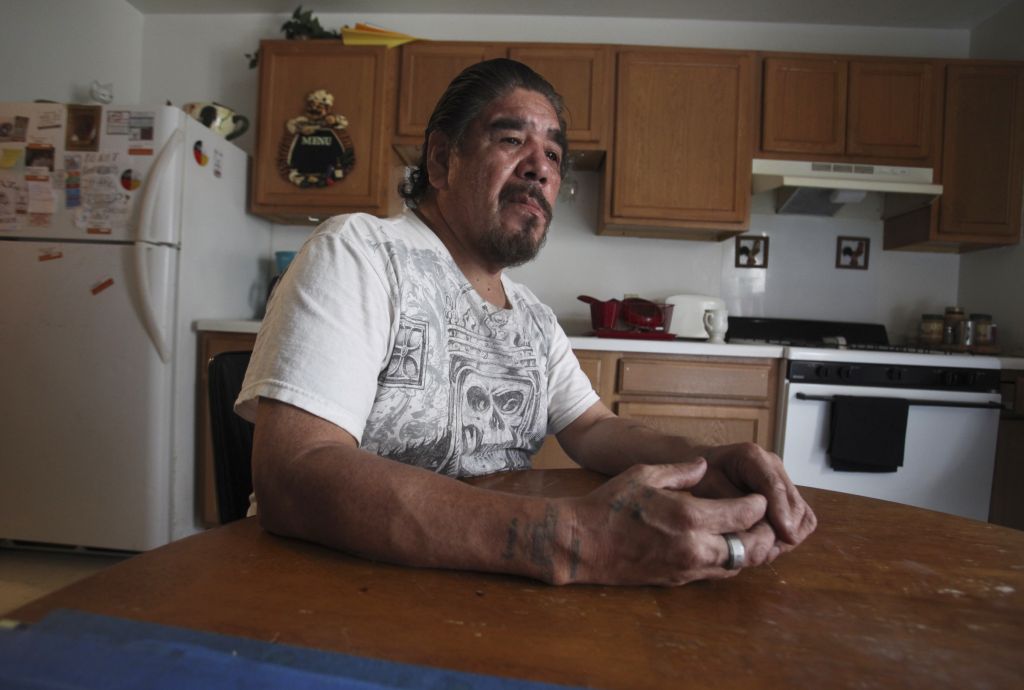

Joe Neeland is getting a settlement for a 2008 Strike Force raid, but he’s still upset. Photo by David Joles, Star Tribune.
The Metro Gang Strike Force was a supposedly elite police force created by the Minnesota state legislature in 2005 to “prevent gang activity” in the Twin Cities. With little to no civilian oversight, officers were encouraged to stop and frisk subjects in “high crime” areas, seize any property related to gang activity, and provide “intelligence” on suspected gang members. Unsurprisingly, this didn’t end well.
Over the four years of its existence, the Metro Gang Strike Force seized hundreds of thousands of dollars and eighty vehicles from community members, many of whom were never charged with a crime.2Ibid, 20. After stealing property from community members, officers routinely took the best of it home for their families.3Ibid, 21. Sometimes, the department even sold that property to its own officers: one officer took home two “confiscated” jet skis for $800.4State of Minnesota Office of the Legislative Auditor. “Metro Gang Strike Force Special Review.” 1. And that’s just the stuff that was accounted for: when all was said and done, not even the state auditor could find $20,000 in missing cash and fourteen confiscated cars.5Ibid, 26.The strike force terrorized countless community members. Among other things, officers routinely conducted “saturation details,” detaining and photographing anyone who was in an area where police suspected gang activity.6Furst, Randy. “Payouts reveal a brutal, rogue police force – Settlement for victims includes $6,000 for toddler kicked in head.,” Star Tribune: Newspaper of the Twin Cities (Minneapolis, MN), August 05, 2012: 01A, accessed November 15, 2017, http://infoweb.newsbank.com/resources/doc/nb/news/1408197FA9F71A60?p=AWNB.
Other stories from the Strike Force archives include officers taking a dog from a community member and ‘trashing’ his house, stealing hundreds of dollars from undocumented immigrants and turning them over to ICE, and kicking a two year old in the head during an unsuccessful drug raid.7Lonetree, Anthony. “Sergeant reaches settlement in whistle-blower suit,” Star Tribune: Newspaper of the Twin Cities (Minneapolis, MN), December 18, 2010: 03B, accessed November 15, 2017, http://infoweb.newsbank.com/resources/doc/nb/news/1344FEB0C2190C60?p=AWNB.One officer did try to blow the whistle on the corruption of the Minnesota Gang Strike Force: in 2007, Kelly O’Rourke warned Minneapolis Police Department supervisors about the mishandling of evidence, only to be ostracized by other officers and removed from the strike force. No other action was taken. He later sued, and was awarded $80,000 in a settlement by the state of Minnesota.8Snyders, Matt. “Minneapolis’s Metro Gang Strike Force strikes out.” City Pages. July 22, 2009. Accessed November 15, 2017. http://www.citypages.com/news/minneapoliss-metro-gang-strike-force-strikes-out-6748248.
The Metro Gang Strike Force was finally shut down for widespread corruption and unaccountability after a state audit in 2009.9Freeman, Michael O. “Hennepin County Attorney’s Office Report on Allegations of Misconduct Involving Metro Gang Strike Force .” September 9, 2010. Accessed November 15, 2017. http://stmedia.startribune.com/documents/MGSF 9-08-10. A criminal investigation was quickly put together by Hennepin County Attorney Mike Freeman and the FBI, but didn’t result in a single criminal charge. Basically, since the MGSF didn’t keep good records of the property they seized, and since more than two dozen officers refused to talk to investigators, the investigators didn’t have enough evidence to indict anyone.10pdf?elr=KArks:DCiUHc3E7_V_nDaycUiacyKUUr.; Shenoy, Rupa, and Tim Nelson. “No charges filed against gang strike force members.” Minnesota Public Radio News. September 09, 2010. Accessed November 15, 2017. https://www.mprnews.org/story/2010/09/08/gangstrikeforce-nocharges. Or so they claimed; in reality, Mike Freeman could have compelled statements from some officers under the Garrity doctrine, as long as he offered them protection from termination and immunity from prosecution.11Quinn, Michael. Walking With The Devil: the police code of silence, the promise of peer intervention. S.l.: Quinn & Associates, 2017. But that never happened, and so no one was held accountable.
Officers served on the Metro Gang Strike Force at the discretion of the metro area police department who hired them, and there’s only evidence of one officer ever being fired as a result of the MGSF: Jason Andersen. He was later reinstated to the Minneapolis Police Department by a union-mandated arbitrator.12Hanners, David. “Embattled Minneapolis cop Jason Anderson fired, again.” TwinCities.com. November 12, 2015. Accessed November 15, 2017. http://www.twincities.com/2010/09/22/embattled-minneapolis-cop-jason-anderson-fired-again/.
In 2012, a class action lawsuit was filed against the state of Minnesota by the victims of the Metro Gang Strike Force. It ended up being settled for $3 million, with only about $1 million distributed to victims. The remaining $2 million was set aside to create a settlement-mandated training course so that the misconduct of the strike force would never happen again. As of 2017, eight years after the Strike Force was shut down, that training still isn’t finished.13Furst, Randy. “Eight years after Metro Gang Strike Force shutdown, mandated police training course remains incomplete.” Star Tribune. August 5, 2017. Accessed November 15, 2017. http://www.startribune.com/eight-years-pass-bills-pile-up-as-mandated-police-training-course-remains-incomplete/438637793/.
In the end, after all the audits, investigations, and lawsuits, not a single person was permanently fired or convicted of a crime for their role in the Metro Gang Strike Force.
1.“Report of the Metro Gang Strike Force Review Panel.” St. Paul, MN: State of Minnesota, 2009., 15.
State of Minnesota office of the Legislative Auditor. “Metro Gang Strike Force Special Review.” St. Paul, MN: State of Minnesota, 2009. 16; 9.
2.Ibid, 20.
3.Ibid, 21.
4.State of Minnesota Office of the Legislative Auditor. “Metro Gang Strike Force Special Review.” 1.
5.Ibid, 26.
6.Furst, Randy. “Payouts reveal a brutal, rogue police force – Settlement for victims includes $6,000 for toddler kicked in head.,” Star Tribune: Newspaper of the Twin Cities (Minneapolis, MN), August 05, 2012: 01A, accessed November 15, 2017, http://infoweb.newsbank.com/resources/doc/nb/news/1408197FA9F71A60?p=AWNB.
7.Lonetree, Anthony. “Sergeant reaches settlement in whistle-blower suit,” Star Tribune: Newspaper of the Twin Cities (Minneapolis, MN), December 18, 2010: 03B, accessed November 15, 2017, http://infoweb.newsbank.com/resources/doc/nb/news/1344FEB0C2190C60?p=AWNB.
8.Snyders, Matt. “Minneapolis’s Metro Gang Strike Force strikes out.” City Pages. July 22, 2009. Accessed November 15, 2017. http://www.citypages.com/news/minneapoliss-metro-gang-strike-force-strikes-out-6748248.
9.Freeman, Michael O. “Hennepin County Attorney’s Office Report on Allegations of Misconduct Involving Metro Gang Strike Force .” September 9, 2010. Accessed November 15, 2017. http://stmedia.startribune.com/documents/MGSF 9-08-10.
10.pdf?elr=KArks:DCiUHc3E7_V_nDaycUiacyKUUr.; Shenoy, Rupa, and Tim Nelson. “No charges filed against gang strike force members.” Minnesota Public Radio News. September 09, 2010. Accessed November 15, 2017. https://www.mprnews.org/story/2010/09/08/gangstrikeforce-nocharges.
11.Quinn, Michael. Walking With The Devil: the police code of silence, the promise of peer intervention. S.l.: Quinn & Associates, 2017.
12.Hanners, David. “Embattled Minneapolis cop Jason Anderson fired, again.” TwinCities.com. November 12, 2015. Accessed November 15, 2017. http://www.twincities.com/2010/09/22/embattled-minneapolis-cop-jason-anderson-fired-again/.
13.Furst, Randy. “Eight years after Metro Gang Strike Force shutdown, mandated police training course remains incomplete.” Star Tribune. August 5, 2017. Accessed November 15, 2017. http://www.startribune.com/eight-years-pass-bills-pile-up-as-mandated-police-training-course-remains-incomplete/438637793/.
The Killing Of David Smith
“‘[David] was in Minneapolis because he loved the city. It’s a shame how his love for the city ended up resulting in his death. I’m sure the people of Minneapolis don’t want their city to be known as, ‘Come love this city, but be careful, the police might kill you.’” 1Abby Simons, “Family: Man shot with Taser is likely to die – David Smith’s uncle is upset about how police handled the case,” Star Tribune, 12 Sep. 2010, METRO, NEWS, p. 01B. NewsBank, infoweb.newsbank.com/resources/doc/nb/news/13245A9CAD009D58?p=AWNB. Accessed 20 Oct. 2017.
– Larry Smith, David Smith’s Uncle

Photo of David Smith, courtesy of the Star Tribune.
David Smith had a hard life. The Black 28-year-old had struggled with mental health issues, substance abuse problems, and homelessness, and was trying to turn things around. In August 2010, he visited his sister Angela in Arizona, where they talked about his desire to take some online classes and get readmitted to school. He never got the chance to; just weeks later, on September 9th, he was killed by the Minneapolis Police Department.2Randy Furst, “Man’s death puts police tactic under scrutiny – Family of David Smith says Mpls. police suffocated him during arrest,” Star Tribune, 7 Feb. 2012, METRO, NEWS, p. 01A. NewsBank, infoweb.newsbank.com/resources/doc/nb/news/13CC7615C2D50190?p=AWNB. Accessed 20 Oct. 2017.
On that day, Smith was at the downtown YMCA, where he was a member, and having a mental health crisis. He was scaring some of the other members, and the staff ended up calling 911. Two MPD Officers, Timothy Gorman and Timothy Callahan responded to the call and confronted Smith in the sixth-floor gymnasium. They tried to get him to leave, but he refused to go. They grabbed him, he fought back, punching one officer, and the officers tased him and threw him into the ground. They pinned him on his stomach, and used a “prone restraint” technique, which is to say that Officer Gorman sunk both his knees and all of his weight into Smith’s back. They held Smith down for nearly four minutes.3Ibid. A young white guy kept dribbling and shooting jump shots in another part of the gym.4Mike Mullen, “When Black Lives Didn’t Matter.” City Pages (Minneapolis, MN), 2 Dec. 2015, News. NewsBank, infoweb.newsbank.com/resources/doc/nb/news/15980940480C5168?p=AWNB. Accessed 20 Oct. 2017. “You going to talk to us now?” Officer Callahan asked. “What’s wrong with you?”5Ibid. David Smith couldn’t answer: he’d been suffocated to death by Officer Gorman’s weight. The officers realized what they’d done and worked to resuscitate Smith, but the damage had been done. Smith never regained consciousness.
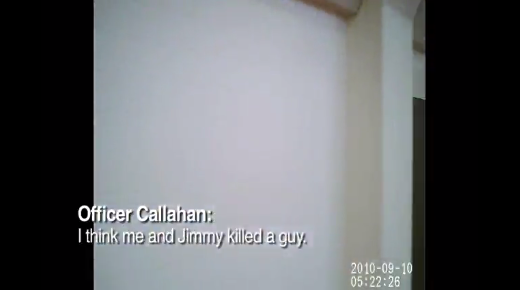
Still image from video the night David Smith was killed by Minneapolis Police. Video courtesy of Star Tribune.
Though MPD policy required that suspects be placed on their side as soon as they were secure, and a body camera worn by one of the officers captured the whole incident, officers Gorman and Callahan weren’t disciplined for killing David Smith.6Randy Furst, “Man’s death puts police tactic under scrutiny.” In fact, the Minneapolis Police Department refused to acknowledge any wrongdoing at all. As one MPD spokesperson put it, “It’s really unfortunate, but what really could have prevented this? If Smith would have left when the YMCA asked him to leave and when the officers also asked him to leave. Putting the blame on two fine officers really takes the focus off of inexcusable personal behavior.”7 Abby SImons, “Man hit with Taser in police scuffle dies – David Smith was a student whose life was cut short, his family said. Minneapolis police defend officers’ actions,” Star Tribune 19 Sep. 2010, METRO, NEWS, p. 04B. NewsBank, infoweb.newsbank.com/resources/doc/nb/news/132601F9A6BD6778?p=AWNB. Accessed 20 Oct. 2017. Really unfortunate. Fine officers. Inexcusable personal behavior. Understand?
According to recent research, nearly half of people killed by the police have some sort of disability record.8Marti Hause and Ari Melber “Half of People Killed by Police Have a Disability Report,” NBC News 14 March, 2016. www.nbcnews.com/news/us-news/half-people-killed-police-suffer-mental-disability-report-n538371. Accessed 20 Oct. 2017.A lack of mental health infrastructure means that oftentimes, police are the first and only line of response to mental health emergencies and to anyone paying attention, it should be clear that police aren’t well equipped to deal with mental health emergencies. Some cities, including Minneapolis, try and fix that by giving officers Crisis Intervention Training, but the fact remains: a paramilitary organization isn’t well suited to the types of de-escalation that are necessary in mental health crises.
David Smith’s family filed a wrongful death lawsuit, which ended up being settled for more than $3 million in 2013. Only $1 million of that went to the family, with more than $2 million going to pay their legal fees.9Randy Furst, “Family awarded $3M in man’s death – The payout was the second-largest for police misconduct in Minneapolis history,” Star Tribune, 25 May 2013, METRO, NEWS, p. 01A. NewsBank, infoweb.newsbank.com/resources/doc/nb/news/146A5060ECD00FA8?p=AWNB. Accessed 20 Oct. 2017. But they would never get their son, their brother, their nephew back, and they knew that he didn’t have to die. It wasn’t necessary. As David’s uncle Larry put it, the YMCA staff should have been able to “call out a crisis team or counselors who could deal with it.”10Matt McKinney, “Tasers no longer ‘nonlethal’ – The weapons, long considered not to be deadly force despite infrequent deaths, are now recognized by Minneapolis police as potentially lethal,” Star Tribune, 3 Oct. 2010, METRO, NEWS, p. 01B. NewsBank, infoweb.newsbank.com/resources/doc/nb/news/132AF04AB3D77048?p=AWNB. Accessed 20 Oct. 2017. Maybe if they had, David would be studying today, spending time with his family, or even playing basketball.
1.Abby Simons, “Family: Man shot with Taser is likely to die – David Smith’s uncle is upset about how police handled the case,” Star Tribune, 12 Sep. 2010, METRO, NEWS, p. 01B. NewsBank, infoweb.newsbank.com/resources/doc/nb/news/13245A9CAD009D58?p=AWNB. Accessed 20 Oct. 2017.
2.Randy Furst, “Man’s death puts police tactic under scrutiny – Family of David Smith says Mpls. police suffocated him during arrest,” Star Tribune, 7 Feb. 2012, METRO, NEWS, p. 01A. NewsBank, infoweb.newsbank.com/resources/doc/nb/news/13CC7615C2D50190?p=AWNB. Accessed 20 Oct. 2017.
3.Ibid.
4.Mike Mullen, “When Black Lives Didn’t Matter.” City Pages (Minneapolis, MN), 2 Dec. 2015, News. NewsBank, infoweb.newsbank.com/resources/doc/nb/news/15980940480C5168?p=AWNB. Accessed 20 Oct. 2017.
5.Ibid.
6.Randy Furst, “Man’s death puts police tactic under scrutiny.”
7.Abby SImons, “Man hit with Taser in police scuffle dies – David Smith was a student whose life was cut short, his family said. Minneapolis police defend officers’ actions,” Star Tribune 19 Sep. 2010, METRO, NEWS, p. 04B. NewsBank, infoweb.newsbank.com/resources/doc/nb/news/132601F9A6BD6778?p=AWNB. Accessed 20 Oct. 2017.
8.Marti Hause and Ari Melber “Half of People Killed by Police Have a Disability Report,” NBC News 14 March, 2016. www.nbcnews.com/news/us-news/half-people-killed-police-suffer-mental-disability-report-n538371. Accessed 20 Oct. 2017.
9.Randy Furst, “Family awarded $3M in man’s death – The payout was the second-largest for police misconduct in Minneapolis history,” Star Tribune, 25 May 2013, METRO, NEWS, p. 01A. NewsBank, infoweb.newsbank.com/resources/doc/nb/news/146A5060ECD00FA8?p=AWNB. Accessed 20 Oct. 2017.
10.Matt McKinney, “Tasers no longer ‘nonlethal’ – The weapons, long considered not to be deadly force despite infrequent deaths, are now recognized by Minneapolis police as potentially lethal,” Star Tribune, 3 Oct. 2010, METRO, NEWS, p. 01B. NewsBank, infoweb.newsbank.com/resources/doc/nb/news/132AF04AB3D77048?p=AWNB. Accessed 20 Oct. 2017.
Jason Yang Dead After Encounter with Police
At approximately 2am on Saturday, November 13th, 2010, Minneapolis police were called to the Epic Nightclub in downtown Minneapolis to stop a fight. According to Officer Aaron Lewis, when the police arrived at the scene the “suspects punched and kicked the officers,” and then “fled the area.”[su_tooltip style=’light’ content=’Hanners, David. “Family, officials at odds over claim man was shot while fleeing Minneapolis police.” TwinCities.com. November 12, 2015. Accessed November 15, 2017. http://www.twincities.com/2010/11/23/family-officials-at-odds-over-claim-man-was-shot-while-fleeing-minneapolis-police-2/.’ behavior=’click’][1][/su_tooltip]
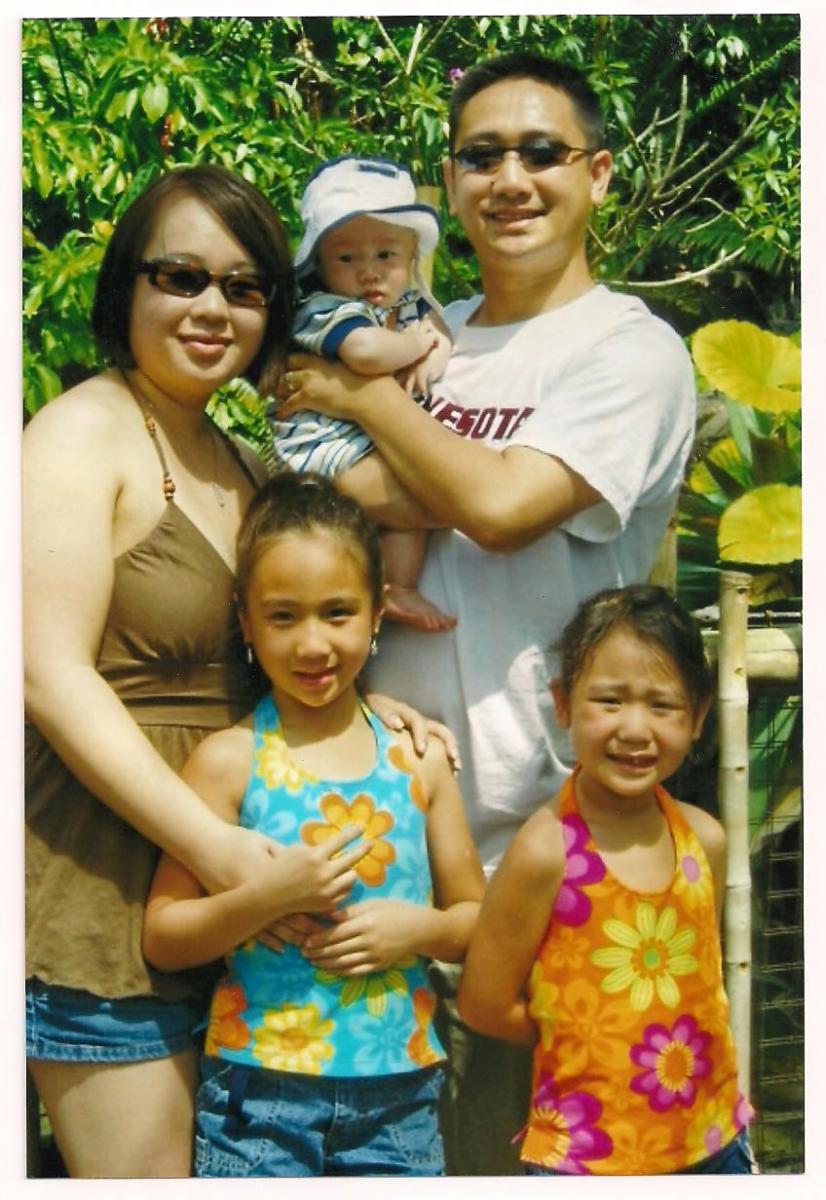
Jason Yang and family in the sun, photo courtesy of TC Daily Planet
According to witnesses, Yang ran from a parking lot into the Fourth Street North Garage and then ran down a ramp that leads to Interstate 394. It was “during the foot chase”, the police report said, that Yang “jumped from a bridge and was pronounced DOA by paramedics.” Police said he scaled a fence and a concrete barrier, then fell 40 feet to the asphalt of Third Avenue North below.[su_tooltip style=’light’ content=’Ibid.’ behavior=’click’][2][/su_tooltip] Sgt. William Palmer, a spokesperson for the Minneapolis police, claimed that they “had 5 officers in close proximity to the suspect when he jumped. We had not yet caught up to him. Nobody had even touched him.”[[su_tooltip style=’light’ content=’Moua, Wameng. “Mysteries remain in Jason Yang’s death.” Hmong Today. November 24, 2010. Accessed November 15, 2017. https://www.tcdailyplanet.net/mysteries-remain-jason-yangs-death-did-he-jump-was-he-shot/.’ behavior=’click’][3][/su_tooltip]
For many who knew Jason, the police narratives didn’t quite make sense. Whether deliberate or an accident, it seemed unbelievable that he would jump to his death in the circumstance that the police described. Yang was a father of four, married for 13 years to his high school sweetheart, Mee Yang.
Witnesses questioned the police story, noting that it was the police who acted violently at Epic that night. As one witness reported, “It was absolutely the police who indiscriminately sprayed mace, kicked and punched innocent bystanders and provoked the chaos that occurred outside of Epic.”[su_tooltip style=”light” content=”Ibid. ” behavior=”click”][4][/su_tooltip]For clubgoers at Epic, violence was not necessarily unusual. Members of the Hmong community told reporters that Epic’s bouncers are notorious for beating up on Hmong people.[su_tooltip style=’light’ content=’Regan, Sheila. “Grief and unanswered questions for family of Jason Yang.” Twin Cities Daily Planet. December 24, 2013. Accessed November 15, 2017. https://www.tcdailyplanet.net/we-want-see-body/.’ behavior=’click’][5][/su_tooltip] “This entire ordeal could have been prevented if the bouncers and the police could have just treated the patrons with a little respect and dignity,” said another observer. “Instead, it was the police who kept attacking everybody and anybody they could get their hands on-even females who were in that area got maced and pushed down to the ground.” [[su_tooltip style=’light’ content=’Moua, “Mysteries Remain in Jason Yang’s Death.”‘ behavior=’click’][6][/su_tooltip] According to the anonymous witness, the expectation of police violence was such that “[e]veryone was convinced that he [Yang] was killed by police and thrown over.”[su_tooltip style=’light’ content=’Regan, “Grief and unanswered questions for family of Jason Yang.”’ behavior=’click’][7][/su_tooltip]
Another concern was the question of video evidence. Minneapolis Police referred to “video evidence” that corroborated the officers’ statements. Yet, based on available information, the police did not release any video footage from that night to the public or to the family. As reporter Wameng Moua explained, “While there are dozens of video surveillance cameras littered along the path which Jason ran, including cameras at Epic Nightclub where this incident began, it is interesting to note that while standing at the exact spot where police say Jason jumped, we were not able to discover any visible video cameras in that immediate area.” The footage that does exist, from within the parking garage, was in police hands, who “collected the footage immediately after the incident.”[su_tooltip style=’light’ content=’Moua, “Mysteries Remain in Jason Yang’s Death.”’ behavior=’click’][8][/su_tooltip]
Yang’s family decided they wanted to see his body in order to find out if there was any more evidence that could help them understand what happened.“We’re looking for anything,” John Yang said. “ We don’t know—we just know there’s a lot of questions that need to be answered.”[[su_tooltip style=’light’ content=’Regan, “Grief and unanswered questions for family of Jason Yang.”’ behavior=’click’][9][/su_tooltip] Getting access to Yang’s body proved much more difficult than they had anticipated. The Hennepin County Medical Examiner’s office repeatedly rejected the family’s request. They were willing to release the body to a funeral home, but would not let the family see it. The family, according to John Yang, did not want to release the body to a funeral home because it would make any evidence they found inadmissible.[[su_tooltip style=’light’ content=’Ibid.’ behavior=’click’][10][/su_tooltip] “They kept telling me that they didn’t have visitation hours and that they had used Jason’s driver’s license to identify the body,” explained Mee Yang, Jason’s widow. “They tried everything in their power to stop us from seeing his body.” It would not be until the family got a court order, after an entire week of resistance, that they were given access to view Yang’s body.[su_tooltip style=’light’ content=’Moua, “Mysteries Remain in Jason Yang’s Death.”’ behavior=’click’][11][/su_tooltip]

Jason Yang’s parents wait to be let into the Hennepin County Medical Examiner’s office. Photo courtesy of TC Daily Planet.
After the judge’s order, Mee Yang, John Yang, and Michelle Gross, a leader of Communities United Against Police Brutality, were allowed to view Yang’s body at the Hennepin County medical examiner’s office. All three wrote affidavits, which became public the following Tuesday. Mee Yang wrote, “I, myself, with my own eyes, viewed a bullet wound (in) right shoulder. I am not very distrustful of the [Medical Examiner’s] process. This information was kept from us, his family.” She also wrote that she was concerned officials would try to “discredit the eyewitnesses to the bullet wound, and try to claim they were ‘crazy’ or that we did not see what we saw.” In a sworn affidavit, Gross said that she saw a bullet wound below Yang’s right shoulder when she viewed the body. She also stated that she was “concerned that the [Medical Examiner’s] office has been less than forthcoming,” and believed the court needed to order the office to “preserve the evidence.”[su_tooltip style=’light’ content=’Hanners, David. “Family, officials at odds over claim man was shot while fleeing Minneapolis police.” TwinCities.com. November 12, 2015. Accessed November 15, 2017. http://www.twincities.com/2010/11/23/family-officials-at-odds-over-claim-man-was-shot-while-fleeing-minneapolis-police-2/.’ behavior=’click’][12][/su_tooltip]
Minneapolis Police Chief Tim Dolan took the opportunity to go on the attack. In a written statement in response to the affidavits, he directed his attack on Michelle Gross, claiming that it was “irresponsible for some individuals to lead a grieving family into believing these false accusations,” calling them “self-serving charlatans” with “little regard for the truth or the harm they can do to a community.”[su_tooltip style=’light’ content=’Ibid.’ behavior=’click’][13][/su_tooltip]
In response to media attention, the Medical Examiner made the unusual decision to make the full autopsy report public in order to respond to the family’s affidavits. Dr. Andrew Baker, chief Medical Examiner for Hennepin County, also called a press conference, which the Pioneer Press noted was “unusual” and “hastily called.”[su_tooltip style=’light’ content=’Ibid.’ behavior=’click’][14][/su_tooltip] The autopsy reported no evidence of a bullet wound, and Baker explained this by saying, “What Ms. Yang, Mr. Yang, and Ms. Gross observed was a skin defect caused by Mr. Yang’s broken clavicle.”[su_tooltip style=’light’ content=’Moua, “Mysteries Remain in Jason Yang’s Death.”’ behavior=’click’][15][/su_tooltip] Yet, the report also raised additional questions. As reporter Wameng Moua pointed out, while the police reports indicated Jason had jumped over the barrier at his own doing, there was no mention in the autopsy of any broken bones in his legs, feet, ankles or knees. According to the autopsy, “the long bones are free of palpable fracture.” Dr. Baker did explain that Yang had “multiple blunt force injuries that he suffered in the fall,” which included skull fractures, 10 rib fractures, and a number of other internal injuries, including tears in his lung, heart, and liver.[[su_tooltip style=’light’ content=’Hanners, David. “Family, officials at odds over claim man was shot while fleeing Minneapolis police.” TwinCities.com. November 12, 2015. Accessed November 15, 2017. http://www.twincities.com/2010/11/23/family-officials-at-odds-over-claim-man-was-shot-while-fleeing-minneapolis-police-2/.’ behavior=’click’][16][/su_tooltip] Yet, there was also no evidence of injury to his hands or arms beyond a few small markings, suggesting that he did not try to break his fall with his arms or hands.[su_tooltip style=’light’ content=’Moua, “Mysteries Remain in Jason Yang’s Death.”’ behavior=’click’][17][/su_tooltip] The lack of injury to his legs and arms remained suspicious to the family.
After viewing the body, Yang’s family decided to obtain an independent autopsy in California. Frustratingly, there appears to be no evidence that the independent autopsy concurred or rejected the Hennepin County Medical Examiner’s assessments. However, the results were unexpected: the autopsy suggested that somewhere in the process, the Hennepin County Medical Examiner had somehow lost three of Yang’s organs: his esophagus, pancreas, and stomach.When the Yang family brought this to the attention of Hennepin County authorities, Minnesota District Court Judge Lloyd B. Zimmerman rejected this concern, explaining that “the letter from the independent examiner in California, Dr. David Posey, was not sworn evidence.” According to news sources, there is no evidence that the Yang’s pursued their case further.
Though the circumstances of Jason Yang’s death remain a mystery, his story is another reminder that the criminal justice system in Minneapolis is more concerned with protecting police from scrutiny than attending to the needs of grieving family and community.[su_tooltip style=’light’ content=’Carlyle, Erin. “Jason Yang’s missing organs actually not missing, says judge.”‘ behavior=’click’][18][/su_tooltip]
1.Hanners, David. “Family, officials at odds over claim man was shot while fleeing Minneapolis police.” TwinCities.com. November 12, 2015. Accessed November 15, 2017. http://www.twincities.com/2010/11/23/family-officials-at-odds-over-claim-man-was-shot-while-fleeing-minneapolis-police-2/.
2.Ibid.
3.Moua, Wameng. “Mysteries remain in Jason Yang’s death.” Hmong Today. November 24, 2010. Accessed November 15, 2017. https://www.tcdailyplanet.net/mysteries-remain-jason-yangs-death-did-he-jump-was-he-shot/.
4.Ibid.
5.Regan, Sheila. “Grief and unanswered questions for family of Jason Yang.” Twin Cities Daily Planet. December 24, 2013. Accessed November 15, 2017. https://www.tcdailyplanet.net/we-want-see-body/.
6.Moua, “Mysteries Remain in Jason Yang’s Death.”
7.Regan, “Grief and unanswered questions for family of Jason Yang.”
8.Moua, “Mysteries Remain in Jason Yang’s Death.”
9.Regan, “Grief and unanswered questions for family of Jason Yang.”
10.Ibid.
11.Moua, “Mysteries Remain in Jason Yang’s Death.”
12.David Hanners, “Family, officials at odds over claim man was shot while fleeing Minneapolis police.”
13.Ibid.
14.Ibid.
15.Moua, “Mysteries Remain in Jason Yang’s Death.”
16.David Hanners, “Family, officials at odds over claim man was shot while fleeing Minneapolis police.”
17.Moua, “Mysteries Remain in Jason Yang’s Death.”
18.Carlyle, Erin. “Jason Yang’s ‘missing organs’ actually not missing, says judge.” City Pages. December 15, 2010. Accessed November 15, 2017. http://www.citypages.com/news/jason-yangs-missing-organs-actually-not-missing-says-judge-6536922.
Blaming (and Criminalizing) the Victim
“Why do I have to live a life where I constantly have to defend my right to live?”
– CeCe McDonald[su_tooltip style=”light” content=”Maryama Dahir, Young, Black, and Trans CeCe McDonald owns her story with new Free CeCe! film, Twin Cities Daily Planet (Minneapolis, MN), November 7, 2016. ” behavior=”click”][1][/su_tooltip]

CeCe McDonald, photo by Billy Navarro Jr..
CeCe McDonald, a 23-year-old Black, transgender woman who studied fashion at MCTC, often chose to do her grocery shopping at night.[su_tooltip style=”light” content=”Jon Tevlin, Transgender life is a long haul for Minneapolis woman, Minneapolis Star-Tribune, July 11, 2015; Andy Mannix, CeCe McDonald murder trial, City Pages (Minneapolis, MN), May 9, 2012. ” behavior=”click”][2][/su_tooltip] She figured she would be subject to less racism and transphobia at night, when grocery stores are typically less crowded.[su_tooltip style=”light” content=”Tevlin, Transgender life is a long haul for Minneapolis woman. ” behavior=”click”][3][/su_tooltip] CeCe went out to do her grocery shopping on the night of June 5, 2011 with some of her friends. On the way, a squad car slowed down to tail them as she walked, finally asking what she was doing out. “We’re just going to get some food,” a friend answered, and the squad car continued on. A couple blocks further, CeCe and her friends were passing the Schooner Bar, when several bar patrons outside saw CeCe and started to harass them, shouting racist and transphobic slurs at them.[su_tooltip style=”light” content=”William C. Anderson, CeCe McDonald, in No Selves to Defend, ed. Mariame Kaba (Chicago: Chicago Alliance to Free Marissa Alexander, 2014), 25. ” behavior=”click”][4][/su_tooltip] The verbal insults quickly escalated when someone smashed a glass into the side of CeCe’s head with such force that the glass broke, slicing open her face.[su_tooltip style=”light” content=”Ibid. ” behavior=”click”][5][/su_tooltip] CeCe, fearing for her life, reached for the only “weapon” she had – a pair of sewing scissors – and stabbed one of her attackers, Dean Schmitz, an avowed white supremacist with a swastika tattoo.[su_tooltip style=”light” content=”Tevlin, Transgender life is a long haul for Minneapolis woman. ” behavior=”click”][6][/su_tooltip] Schmitzlater died from his injuries.[su_tooltip style=”light” content=”Ibid. ” behavior=”click”][7][/su_tooltip] CeCe and her friends retreated to the safety of the nearby Cub parking lot. Someone called 911, and when Minneapolis police arrived, CeCe flagged them down to explain what happened.[su_tooltip style=”light” content=”Mannix, CeCe McDonald murder trial. ” behavior=”click”][8][/su_tooltip] After minimal treatment for her injuries from the attack, MPD brought CeCe to City Hall and detained her for three hours before finally questioning her.[su_tooltip style=”light” content=”Sheila Regan, CeCe McDonald goes to court — hearing on Miranda rights in Minneapolis, Twin Cities Daily Planet (Minneapolis, MN), December 6, 2011. ” behavior=”click”][9][/su_tooltip]
It was in that state – after being violently attacked, held for hours at the police department, and then interrogated for defending herself against this attack – that the police convinced CeCe to sign a confession of her guilt.[su_tooltip style=”light” content=”Redlark, This Is What Happened to CeCe. Feministe, February 9, 2012. ” behavior=”click”][10][/su_tooltip]For defending herself in a situation that in so many other cases has ended in the murder of countless trans women of color, CeCe was charged with two accounts of second-degree murder.[su_tooltip style=”light” content=”Monica Roberts, Justice for CeCe McDonald. The TransAdvocate. March 7, 2012. ” behavior=”click”][11][/su_tooltip] Her bail was set at $500,000.[su_tooltip style=”light” content=”Ibid. ” behavior=”click”][12][/su_tooltip] CeCe was the only person that the MPD arrested that night – not one of her racist, homophobic attackers.[su_tooltip style=”light” content=”Molly Flaherty – Schmitz’s ex-girlfriend and the person who gashed CeCe’s cheek with a glass bottle, instigating the physical assault – was arrested nearly a year after the incident on May 11, 2012. She was charged with two accounts of assault. From Kris Hamel, Transwoman CeCe McDonald sentenced. Workers’ World (New York, NY). June 6, 2012. ” behavior=”click”][13][/su_tooltip]
CeCe knew that the deck was stacked against her when her case went to trial, but the judge disallowed key evidence that made a fair outcome impossible. Schmitz’ swastika tattoo and known problems controlling his temper weren’t allowed into evidence.[su_tooltip style=”light” content=”Tevlin, Transgender life is a long haul for Minneapolis woman; Dahir, Young, Black, and Trans CeCe McDonald owns her story with new Free CeCe! film. ” behavior=”click”][14][/su_tooltip] Neither were CeCe’s descriptions of the discrimination and violence that Black trans women face every day.[su_tooltip style=”light” content=”Dahir, Young, Black, and Trans CeCe McDonald owns her story with new Free CeCe!’ film. ” behavior=”click”][15][/su_tooltip] Without this evidence, CeCe knew the jury would never sympathize with a trans Black woman accused of murdering a cis white man, so she accepted a plea deal.[su_tooltip style=”light” content=”Anderson, CeCe McDonald. ” behavior=”click”][16][/su_tooltip] She was sentenced to 41 months in a men’s prison in St. Cloud. [su_tooltip style=”light” content=”Tevlin, Transgender life is a long haul for Minneapolis woman. ” behavior=”click”][17][/su_tooltip]
Activists in Minneapolis, Chicago, and around the United States organized solidarity committees to “Free CeCe.” [su_tooltip style=”light” content=”Mannix, CeCe McDonald murder trial. ” behavior=”click”][18][/su_tooltip] Some of her supporters initially called for her to be transferred to a women’s prison, but CeCe pushed back against this, saying, “[…]after I did some educating myself on the prison-industrial complex and the history behind African Americans in incarceration, I felt like sending me to any prison wouldn’t solve my issue. Men’s prisons, women’s prisons, they’re prisons, and they’re not good.“ [su_tooltip style=”light” content=”Anderson, CeCe McDonald. ” behavior=”click”][19][/su_tooltip] CeCe was released after 19 months of incarceration, most of it in solitary confinement.[su_tooltip style=”light” content=”Ibid. ” behavior=”click”][20][/su_tooltip] Since her release, CeCe has been a leading voice in struggles for racial and gender justice and prison abolition nationally. [su_tooltip style=”light” content=”Ibid. ” behavior=”click”][21][/su_tooltip]
CeCe’s case is an example of the deep racism and transmisogyny in every facet of our criminal “justice” system, but it is important to remember that her criminalization as a Black trans woman defending her own life started with the Minneapolis Police.
1.Maryama Dahir, “Young, Black, and Trans CeCe McDonald owns her story with new ‘Free CeCe!’ film,” Twin Cities Daily Planet (Minneapolis, MN), November 7, 2016.
2.Jon Tevlin, “Transgender life is a long haul for Minneapolis woman,” Minneapolis Star-Tribune, July 11, 2015; Andy Mannix, “CeCe McDonald murder trial,” City Pages (Minneapolis, MN), May 9, 2012.
3.Tevlin, “Transgender life is a long haul for Minneapolis woman.”
4.William C. Anderson, “CeCe McDonald,” in No Selves to Defend, ed. Mariame Kaba (Chicago: Chicago Alliance to Free Marissa Alexander, 2014), 25.
5.Ibid.
6.Tevlin, “Transgender life is a long haul for Minneapolis woman.”
7.Ibid.
8.Mannix, “CeCe McDonald murder trial.”
9.Sheila Regan, “CeCe McDonald goes to court — hearing on Miranda rights in Minneapolis,” Twin Cities Daily Planet (Minneapolis, MN), December 6, 2011.
10.Redlark, “This Is What Happened to CeCe.” Feministe, February 9, 2012.
11.Monica Roberts, “Justice for CeCe McDonald.” The TransAdvocate. March 7, 2012.
12.Ibid.
13.Molly Flaherty – Schmitz’s ex-girlfriend and the person who gashed CeCe’s cheek with a glass bottle, instigating the physical assault – was arrested nearly a year after the incident on May 11, 2012. She was charged with two accounts of assault. From Kris Hamel, “Transwoman CeCe McDonald sentenced.” Workers’ World (New York, NY). June 6, 2012.
14.Tevlin, “Transgender life is a long haul for Minneapolis woman”; Dahir, “Young, Black, and Trans CeCe McDonald owns her story with new ‘Free CeCe!’ film.”
15.Dahir, “Young, Black, and Trans CeCe McDonald owns her story with new ‘Free CeCe!’ film.”
16.Anderson, “CeCe McDonald.”
17.Tevlin, “Transgender life is a long haul for Minneapolis woman.”
18.Mannix, “CeCe McDonald murder trial.”
19.Anderson, “CeCe McDonald.”
20.Ibid.
21.Ibid.
The Deaths of Terrance Franklin and Ivan Romero
“I know my son and I know he’s not a cop killer. They could have Tased him. They could have brought him out of the basement alive, but they took it upon themselves and they killed my son.” 1McKinney, Matt. “Franklin pleaded for his life, family says – Parents point to his voice on video captured by a bystander.,” Star Tribune: Newspaper of the Twin Cities (Minneapolis, MN), September 25, 2013: 01B, accessed November 17, 2017. http://infoweb.newsbank.com/resources/doc/nb/news/1491897845481CA0?p=AWNB.
– Walter Franklin, father of Terrance Franklin
Around 2 pm on May 10th, 2013, someone near 27th and Lyndale Ave S. called 911 to report that they’d seen someone who had possibly burglarized their house the week before. Police responded, and began chasing a 22-year-old Black man named Terrance Franklin. The chase lasted nearly an hour, but around 3 pm, a nearby resident called the police saying that they had found a broken window in their house nearby. The MPD SWAT team responded to the call and entered the house, cornering an unarmed Franklin in the basement. What we know for sure is that Terrance Franklin was shot to death in that basement, and two officers were shot in the legs with bullets from a police submachine gun.2Chanen, David. “Suspect fired an officer’s gun – Sources say the burglary suspect shot two other cops in a struggle in an Uptown basement before another officer shot and killed him.,” Star Tribune: Newspaper of the Twin Cities (Minneapolis, MN), May 18, 2013: 01B, accessed November 17, 2017. http://infoweb.newsbank.com/resources/doc/nb/news/146704B494CBD658?p=AWNB. Everything else is disputed.
According to police, when they entered the basement, they sicced a police dog on Franklin. Franklin tried to hide behind a water heater, but officers dragged him out. According to them, Franklin broke away and charged at one of the officers, grabbing his submachine gun and shooting two cops in the legs. Officers Lucas Peterson and Mike Meath then pulled out their guns, shooting Franklin a number of times and killing him. Franklin’s DNA was found on the officer’s gun, but with no video of the shooting, there’s no way to know how it got there.3Simons, Abby & McKinney, Matt. “Police cleared in Franklin death – After grand jury’s ruling, Chief Harteau described what led to fatal shooting of burglary suspect in Uptown that sparked intense scrutiny.,” Star Tribune: Newspaper of the Twin Cities (Minneapolis, MN), September 20, 2013: 01B, accessed November 17, 2017.
http://infoweb.newsbank.com/resources/doc/nb/news/149063901BBB7CC0?p=AWNB.
Terrance Franklin’s family is sure that didn’t happen. They say that he never would have put up a fight with a SWAT team in a basement, and that they think police killed him while he was trying to surrender. They cite a cell phone video recorded across the street from the shooting as evidence: you can’t see into the basement, but you can hear officers shouting, and the family says that they can hear officers using racial slurs and Franklin begging to be let go right before he is shot.4McKinney, Matt. “Franklin pleaded for his life, family says – Parents point to his voice on video captured by a bystander.”
What do know what happened next: officers radioed for backup to help secure the scene of the shooting. Officer Joshua Young was a few blocks away, and turned on his squad car’s lights and siren. On the way to the scene, he drove through a red light at 26th and Blaisdell without checking to see if there were any vehicles in the intersection. Two people on a motorcycle, Ivan Romero and Joselin Torrejon-Villamil were headed through the intersection, and crashed into the SUV as it crossed Blaisdell. Torrejon-Villamil survived, but Romero died at the scene. Young wasn’t disciplined for the crash – though he didn’t verify that there were no vehicles in the intersection, both MPD and the Hennepin County prosecutor eventually found that his actions didn’t constitute reckless driving.5McKinney, Matt. “No charges in fatal cop crash – Squad car video shows the motorcycle sliding through intersection and slamming into the rear passenger side of the officer’s SUV.,” Star Tribune: Newspaper of the Twin Cities (Minneapolis, MN), November 15, 2013: 01B, accessed November 17, 2017, http://infoweb.newsbank.com/resources/doc/nb/news/14A304DA1A7358D8?p=AWNB.
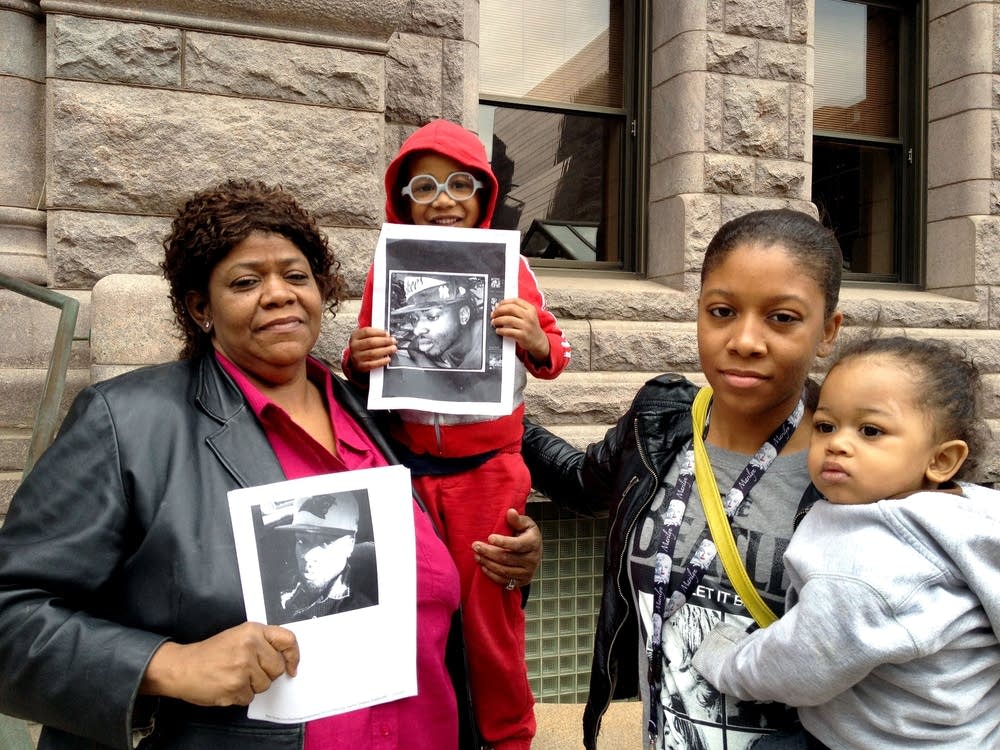
Family of Terrance Franklin Photo from Elizabeth Dunbar at MPR News
On May 31st, three weeks after Franklin and Romero were killed, hundreds of community members marched to the Government Center in downtown Minneapolis, calling for the prosecution of the police officers who were involved.6Harkness, Kyndell. “Protesters demand justice in shooting,” Star Tribune: Newspaper of the Twin Cities (Minneapolis, MN), June 01, 2013: 02B, accessed November 17, 2017, http://infoweb.newsbank.com/resources/doc/nb/news/146C4B9E7B4FE620?p=AWNB. As the investigation into the shooting continued, more information emerged about Lucas Peterson, the officer who had shot Franklin first. It turns out that he had thirteen previous excessive force complaints to his name, including one in 2002 where he had killed Christopher Burns, a Black man in handcuffs, with a chokehold, and another where he had been caught lying on a report about a woman jumping on an officer’s back.7Matos, Alejandra, and Matt McKinney. “Details of the 13 excessive force complaints.” Star Tribune. June 30, 2013. Accessed November 17, 2017. http://www.startribune.com/details-of-the-13-excessive-force-complaints/213724541/. The NAACP had called for him to be prosecuted and fired from the department, but he remained on the force.
On September 19th, Hennepin County Attorney Mike Freeman announced that a grand jury had decided not to indict any of the officers in the death of Terrance Franklin.8Simons, Abby & McKinney, Matt. “Police cleared in Franklin death – After grand jury’s ruling, Chief Harteau described what led to fatal shooting of burglary suspect in Uptown that sparked intense scrutiny.,” Star Tribune: Newspaper of the Twin Cities (Minneapolis, MN), September 20, 2013: 01B, accessed November 17, 2017. In the wake of the announcement, MPD also announced that none of the officers would be disciplined. The family was heartbroken, but they didn’t give up on holding the city accountable. In May 2014, they filed a wrongful death lawsuit against the city in Franklin’s death. As of November 2017, the case is still working its way through the court system. Hopefully it will lead to some healing and closure for Terrance’s family.
1.McKinney, Matt. “Franklin pleaded for his life, family says – Parents point to his voice on video captured by a bystander.,” Star Tribune: Newspaper of the Twin Cities (Minneapolis, MN), September 25, 2013: 01B, accessed November 17, 2017. http://infoweb.newsbank.com/resources/doc/nb/news/1491897845481CA0?p=AWNB.
2.Chanen, David. “Suspect fired an officer’s gun – Sources say the burglary suspect shot two other cops in a struggle in an Uptown basement before another officer shot and killed him.,” Star Tribune: Newspaper of the Twin Cities (Minneapolis, MN), May 18, 2013: 01B, accessed November 17, 2017. http://infoweb.newsbank.com/resources/doc/nb/news/146704B494CBD658?p=AWNB.
3.Simons, Abby & McKinney, Matt. “Police cleared in Franklin death – After grand jury’s ruling, Chief Harteau described what led to fatal shooting of burglary suspect in Uptown that sparked intense scrutiny.,” Star Tribune: Newspaper of the Twin Cities (Minneapolis, MN), September 20, 2013: 01B, accessed November 17, 2017.
http://infoweb.newsbank.com/resources/doc/nb/news/149063901BBB7CC0?p=AWNB.
4.McKinney, Matt. “Franklin pleaded for his life, family says – Parents point to his voice on video captured by a bystander.”
5.McKinney, Matt. “No charges in fatal cop crash – Squad car video shows the motorcycle sliding through intersection and slamming into the rear passenger side of the officer’s SUV.,” Star Tribune: Newspaper of the Twin Cities (Minneapolis, MN), November 15, 2013: 01B, accessed November 17, 2017, http://infoweb.newsbank.com/resources/doc/nb/news/14A304DA1A7358D8?p=AWNB.
6.Harkness, Kyndell. “Protesters demand justice in shooting,” Star Tribune: Newspaper of the Twin Cities (Minneapolis, MN), June 01, 2013: 02B, accessed November 17, 2017, http://infoweb.newsbank.com/resources/doc/nb/news/146C4B9E7B4FE620?p=AWNB.
7.Matos, Alejandra, and Matt McKinney. “Details of the 13 excessive force complaints.” Star Tribune. June 30, 2013. Accessed November 17, 2017. http://www.startribune.com/details-of-the-13-excessive-force-complaints/213724541/.
8.Simons, Abby & McKinney, Matt. “Police cleared in Franklin death – After grand jury’s ruling, Chief Harteau described what led to fatal shooting of burglary suspect in Uptown that sparked intense scrutiny.,” Star Tribune: Newspaper of the Twin Cities (Minneapolis, MN), September 20, 2013: 01B, accessed November 17, 2017.
#Pointergate
“…she and the man are pointing at one another.” [su_tooltip style=”light” content=”The Daily Show, “Signs of Anarchy,” 2014. http://www.cc.com/video-clips/3dzi3m/the-daily-show-with-jon-stewart-signs-of-anarchy. ” behavior=”click”][1][/su_tooltip]
– Kate Brickman, Communications Director for Mayor Betsy Hodges, 2014

ABC affiliate KSTP accused Minneapolis Mayor Betsy Hodges of throwing up a “gang sign” while posing for a photo with a voting rights advocate during a charity event. Image via KSTP.
By fall 2014, the Black Lives Matter movement was in full swing. The killing of Michael Brown, Jr. in Ferguson, Missouri in August had dragged awareness of police brutality back into the American mainstream. In Minneapolis, elected officials quickly channeled the outcry against police brutality into a few common reform proposals. On October 4th, Mayor Betsy Hodges wrote an open letter to the community acknowledging that some officers “abuse the trust,” and continued to advocate for officer-worn body cameras.[su_tooltip style=”light” content=”Hodges, Betsy. An open letter from Mayor Betsy Hodges to the communities of Minneapolis. Mayor Betsy Hodges. October 08, 2014. Accessed November 15, 2017. http://mayorhodges.com/2014/10/an-open-letter-from-mayor-betsy-hodges-to-the-communities-of-minneapolis/. ” behavior=”click”][2][/su_tooltip] The MPD union head at the time, John Delmonico, called her statements “personal slaps in the face to every member of the Minneapolis Police Department,” and said that “if anything, discipline is too often more severe than is necessary.”[su_tooltip style=”light” content=”Delmonico, John. In response to the open letter from Minneapolis Mayor Betsy Hodges . Star Tribune, October 17, 2014. Accessed November 15, 2017. http://www.startribune.com/2014-delmonico-s-response-to-an-open-letter-from-mayor-hodges/279629132/.” behavior=”click”][3][/su_tooltip] The tension between the Mayor and the Police Union would soon erupt into one of the most unbelievable incidents in the history of the MPD.
On November 1st, 2014, Mayor Hodges and Police Chief Janee Harteau went doorknocking with members of a local community group for a Get Out the Vote drive. They were going door-to-door with well-known community activist Navell Gordon when they stopped to take a picture.[su_tooltip style=’light’ content=’King, Shaun. “#pointergate may be the most racist news story of 2014. Daily Kos. November 7, 2014. Accessed November 15, 2017. https://www.dailykos.com/stories/2014/11/6/1342840/–pointergate-may-be-the-most-racist-news-story-of-2014.”‘ behavior=”click”][4][/su_tooltip] Hodges and Gordon posed together, pointing at one another and smiling, no idea of the storm that was on its way.
On November 6th, the night before the Mayor’s body camera pilot started, local station KSTP ran an utterly astonishing story by their reporter Jay Kolls.They claimed that the Mayor had been caught throwing gang signs with a convicted felon, and presented the picture of her and Gordon pointing at each other as evidence. Multiple law enforcement officials testified that her pointing at Gordon was an invocation of a well-known gang sign, and showed that she supported gangs. Delmonico himself actually appeared on camera to say “is she going to support gangs in the city or cops?”[su_tooltip style=”light” content=”KSTP, 10 PM NEWSCAST, November 6th, 2014, 2014. ” behavior=”click”][5][/su_tooltip]
The internet immediately erupted into laughter in response, with jokes, outrage, and general disbelief collecting on Twitter via the hashtag #pointergate. Every news outlet from Al-Jazeera to the Daily Show made fun of the story, with most also noting that the only sources for the story were police, who had much to gain from weakening Hodges’ efforts at reform.[su_tooltip style=”light” content='”Collins, Bob, Molly Bloom, and Meg Martin. Explaining #pointergate: The missing context.” Minnesota Public Radio News. November 07, 2014. Accessed November 15, 2017. https://www.mprnews.org/story/2014/11/07/explaining-pointergate.’ behavior=”click”][6][/su_tooltip] Even in the face of withering criticism, KSTP and Jay Kolls refused to issue an apology for the story. But the police union had made their point: any effort to limit the power of the police would lead to a swift counterattack.
The body camera program moved ahead as planned, but the next few years wouldn’t exactly be a model for police reform in Minneapolis. Almost exactly a year after the #pointergate story broke, the Minneapolis Police Department would murder Jamar Clark, leading to the 4th Precinct Occupation and direct actions against both Hodges and the Police Department. And in 2017, an officer wearing one of Hodges’ much-vaunted body cameras shot and killed Justine Damond. Turns out that it hadn’t been filming: there wasn’t a clear departmental requirement for officers to turn their body cameras on, just to wear them. Like so many reforms in MPD’s history, the body cameras have been completely ineffective in stopping police misconduct, and recent research has shown that they’ve been similarly ineffective across the country.[su_tooltip style=”light” content=”Yokum, David, Anita Ravishankar, and Alexander Coppock. Evaluating the Effects of Police Body-Worn Cameras: A Randomized Controlled Trial. The DC Lab Working Paper, October 20, 2017. doi:10.4135/9781473963856. ” behavior=”click”][7][/su_tooltip] So maybe in the end, after all the jokes, articles, and memes, the police got the last laugh after all.
1.The Daily Show, “Signs of Anarchy,” 2014. http://www.cc.com/video-clips/3dzi3m/the-daily-show-with-jon-stewart-signs-of-anarchy.
2.Hodges, Betsy. “An open letter from Mayor Betsy Hodges to the communities of Minneapolis.” Mayor Betsy Hodges. October 08, 2014. Accessed November 15, 2017. http://mayorhodges.com/2014/10/an-open-letter-from-mayor-betsy-hodges-to-the-communities-of-minneapolis/.
3.Delmonico, John. “In response to the open letter from Minneapolis Mayor Betsy Hodges .” Star Tribune, October 17, 2014. Accessed November 15, 2017. http://www.startribune.com/2014-delmonico-s-response-to-an-open-letter-from-mayor-hodges/279629132/.
4.King, Shaun. “#pointergate may be the most racist news story of 2014.” Daily Kos. November 7, 2014. Accessed November 15, 2017. https://www.dailykos.com/stories/2014/11/6/1342840/–pointergate-may-be-the-most-racist-news-story-of-2014.
5.KSTP, “10 PM NEWSCAST, November 6th, 2014,” 2014.
6.Collins, Bob, Molly Bloom, and Meg Martin. “Explaining #pointergate: The missing context.” Minnesota Public Radio News. November 07, 2014. Accessed November 15, 2017. https://www.mprnews.org/story/2014/11/07/explaining-pointergate.
7.Yokum, David, Anita Ravishankar, and Alexander Coppock. “Evaluating the Effects of Police Body-Worn Cameras: A Randomized Controlled Trial.” The DC Lab Working Paper, October 20, 2017. doi:10.4135/9781473963856.
Justice for Jamar
““I didn’t call and say, ‘Come and shoot him,’ or none of that. They have no reason to come and be combative at all, because they didn’t get a call like that. Not from me.” 1Reg Chapman. “Exclusive: Alleged Jamar Clark Victim Speaks Out.” WCCO | CBS Minnesota. March 31, 2016. Accessed November 16, 2017. http://minnesota.cbslocal.com/2016/03/31/rayann-hayes-jamar-clark/.
RayAnn Hayes, Friend of Jamar Clark, 2016
In the early hours of November 15th, 2015, Jamar Clark, a 24-year-old Black man was at a party on the north side, a couple blocks away from Minneapolis’ fourth precinct police station. After a fight broke out, a friend of Jamar’s, RayAnn Hayes, tried to intervene, and her ankle was injured in the scuffle. She called 911 and requested paramedics, hoping to be taken to the hospital.2Ibid. She couldn’t have known at the time, but that call would lead to Clark’s death at the hands of the Minneapolis Police Department and an eighteen day occupation of the fourth precinct.
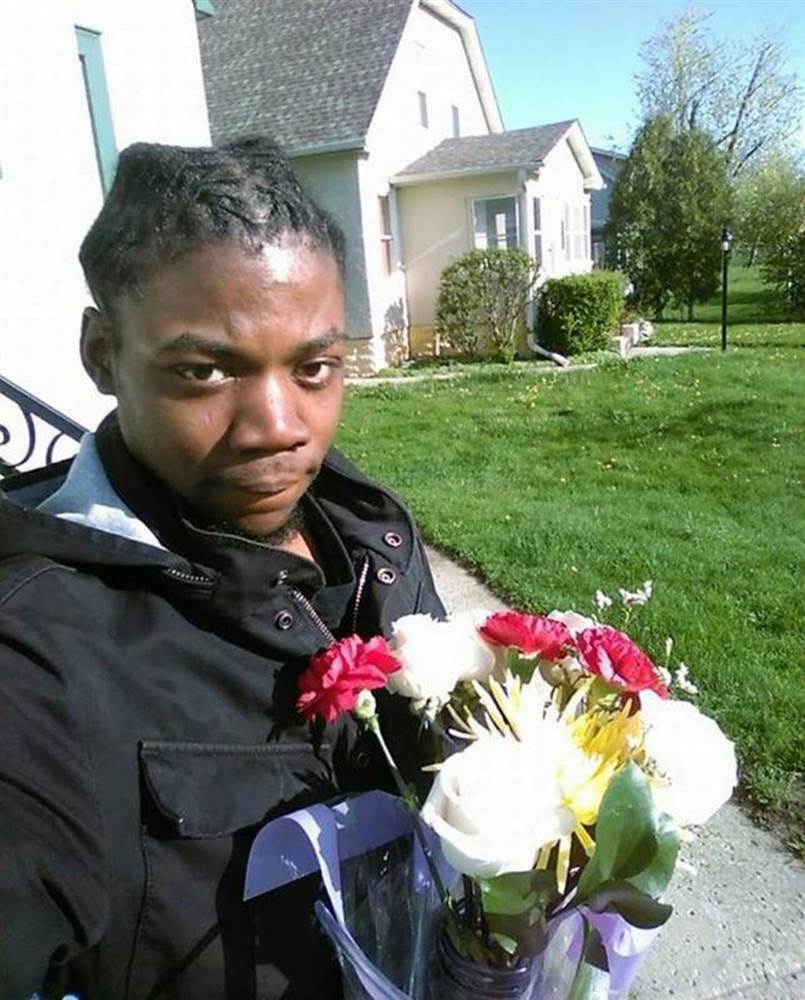
Jamar Clark. Photo courtesy of Kenya McKnight.
When the paramedics arrived, they placed Hayes in the ambulance, and Jamar Clark became upset, banging on the doors of the ambulance. The paramedics called for police backup, and MPD officers Mark Ringgenberg and Dustin Schwarze arrived within a few minutes. As soon as they showed up, they immediately escalated the situation: the officers demanded that Clark take his hands out of his pockets, and Ringgenberg pulled his gun out of the holster. Clark yelled “what’s that pistol for?” and Ringgenberg put it back into its holster. The officers moved in to arrest Clark, and Ringgenberg threw his arm around Clark’s chest and neck to try to bring him to the ground. In the process, he fell on top of Clark, and said that he felt his holster slide from his side to his back, on top of Jamar. Schwarze pressed his pistol against Clark’s face, and Ringgenberg yelled out “Shoot him!” Schwarze pulled the trigger. Only sixty-one seconds had passed since the officers had shown up.3Mannix, Andy. “The fatal 61 seconds – After Hennepin County Attorney Mike Freeman declined to press charges in the Nov. 15, 2015, killing of Jamar Clark, evidence he released showed that it took 61 seconds from when two Minneapolis police officers approached Clark until he was shot. He died the next day. Here’s what happened in that critical time frame.,” Star Tribune: Newspaper of the Twin Cities (Minneapolis, MN), April 03, 2016: 06A, accessed November 16, 2017, http://infoweb.newsbank.com/resources/doc/nb/news/15C0C211551FDE10?p=AWNB.
Many people saw Schwarze shoot Clark, and the community responded quickly to the shooting, gathering information and planning a response on Twitter with the hashtag #JamesAndPlymouth. Organizers planned a protest for 3 pm later that afternoon,4Grimm, Mica. “Tweet – 2:21 PM.” Twitter. November 15, 2015. Accessed November 16, 2017. https://twitter.com/micamaryjane/status/665987924203192320. and hundreds of community members showed up. A small group of protesters quickly occupied the atrium of the Fourth Precinct Police Station, and a larger group marched onto I-94, where they stopped traffic for more than two hours. Fifty-one people people were arrested that night.5Golden, Erin. “Feds are called in over shooting by cop – Minneapolis officials seek help on case that has drawn protests.,” Star Tribune: Newspaper of the Twin Cities (Minneapolis, MN), November 17, 2015: 01A, accessed November 16, 2017, http://infoweb.newsbank.com/resources/doc/nb/news/1592F4EFEE9CC128?p=AWNB.
The Minnesota Bureau of Criminal Apprehension and the FBI were quickly put in charge of investigating the shooting, and refused to release any of the video evidence they’d gathered. Protesters continued their sit-in of the fourth precinct’s atrium overnight into November 16th, calling for a continued occupation to force the BCA and the city to release the tapes and prosecute Schwarze and Ringgenberg. Jamar Clark was removed from life support and died late that night.6Chanen, David. “Jamar Clark dies; FBI will investigate – Fragments of video exist, but officials won’t release them for now.,” Star Tribune: Newspaper of the Twin Cities (Minneapolis, MN), November 18, 2015: 01A, accessed November 16, 2017, http://infoweb.newsbank.com/resources/doc/nb/news/159349ABF454D9C0?p=AWNB.
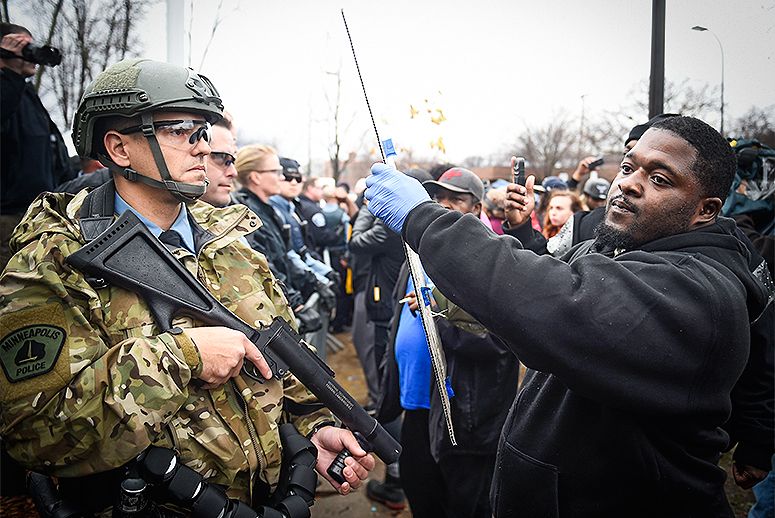
Police officers look on as a demonstrator holds a sign in front of a north Minneapolis police precinct during a protest on Nov. 18 in response to the shooting of Jamar Clark. (Photo: Craig Lassig/Reuters)
Things escalated even more on Wednesday, November 18th: MPD forcibly kicked the protesters out of the fourth precinct’s atrium, and attempted to break up a growing occupation just outside on Plymouth Avenue. Protesters refused to leave, and MPD escalated the situation drastically, macing protesters, shooting marking rounds at community members, and dragging a community member by their hijab.7Du, Susan. “Protesters stand ground amid clouds of mace at Minneapolis police station,” City Pages (Minneapolis, MN), November 19, 2015, accessed November 16, 2017, http://infoweb.newsbank.com/resources/doc/nb/news/1593C227A3FB3650?p=AWNB. The police department maintained that the community had initiated violence against police officers, even pepper spraying one of them, a claim that was proven false when video footage surfaced showing one officer accidentally macing another.8Ibid. The police were unsuccessful in forcing the protesters away from the fourth precinct, and the occupation continued.
As more information about the shooting came out, it became clear that both Schwarze and Ringgenberg had brutalized community members before. Schwarze had been accused of coercing a man into becoming a police informant in a lawsuit that was eventually settled, and ten days before Jamar Clark was killed, Schwarze was sued for a separate incident where a group of Richfield police officers had beaten several suspects unnecessarily.9Rietmulder, Michael. “Dustin Schwarze, cop in Jamar Clark shooting, sued for Tasering suspect [VIDEO],” City Pages (Minneapolis, MN), December 01, 2015, accessed November 16, 2017, http://infoweb.newsbank.com/resources/doc/nb/news/1597B54CC05D8180?p=AWNB. Ringgenberg had been sued while working for the San Diego police department after he and another officer had put a Black man in a chokehold;the lawsuit was eventually dropped after the victim ran out of money to pay legal fees.10Mullen, Mike. “Mark Ringgenberg, cop in Jamar Clark shooting, was sued for chokehold” City Pages (Minneapolis, MN), Friday, November 20, 2015.
As the occupation of the fourth precinct stretched into its second week, protesters faced a new threat: white supremacists. White identity extremists posted a video online flashing guns and threatening protesters, and on Monday, November 23rd, they made good on their threats. After protestors noticed a group of four white men were covering their faces and acting strangely, activists moved to kick them out of the protest space only to be met with gunfire.11Mullen, Mike. “Report: White supremacists shoot five Black Lives Matters protesters,” City Pages (Minneapolis, MN), November 24, 2015, accessed November 16, 2017, http://infoweb.newsbank.com/resources/doc/nb/news/159564E155D23A38?p=AWNB. Five protesters were shot, and when others ran to the police station to report the shooting, they were met with indifference. Once officer said simply, “this is what you wanted,” to protesters as he entered the precinct.12Woolf, Nicky. “Minneapolis police ‘suggested Jamar Clark protesters wanted shootings’.” The Guardian. November 25, 2015. Accessed November 16, 2017. https://www.theguardian.com/us-news/2015/nov/25/minneapolis-protest-shooting-police-killing-jamar-clark[/mdn] When police did respond to the shooting, some time later, they maced the protestors around the scene.12Ibid. Thankfully, all of the victims survived. Allen Scarsella, the man who’d shot protesters, was later sentenced to 15 years in prison after he told a cop friend who worked for the Mankato Police Department what he’d done.13Writer, Staff. “Our View: Policing Officers must avoid racist comments,” Free Press, The (Mankato, MN), January 31, 2017, accessed November 16, 2017, http://infoweb.newsbank.com/resources/doc/nb/news/16248448269C9520?p=AWNB. Two of his accomplices, Nathan Wayne Gustavsson and Joseph Martin Backman, also received jail time for their involvement. Charges were dropped against the fourth man, Daniel Macey.14Stahl, Brandon. “Two plead guilty in Jamar Clark protest shooting – The shooter, Allen Scarsella, was sentenced to 15 years in prison.,” Star Tribune: Newspaper of the Twin Cities (Minneapolis, MN), June 13, 2017: 02B, accessed November 16, 2017, http://infoweb.newsbank.com/resources/doc/nb/news/165021FB0EB7C2E0?p=AWNB.

Photo still from video, protesters march from 4th Precinct HQ to City Hall. Image courtesy of Star Tribune.
Far from the white supremacist shooting intimidating protesters into silence, it only made calls for justice in the Jamar Clark case even stronger. The day after the shooting, nearly a thousand protesters marched to City Hall, demanding Justice for Jamar in what was probably the largest ever protest against police brutality in Minneapolis.15Jany, Libor. “Shootings heighten outrage Three are in custody after attack on Black Lives Matter protesters – Three are in custody after attack on Black Lives Matter protesters – Hundreds marched peacefully to City Hall after bloodshed.,” Star Tribune: Newspaper of the Twin Cities (Minneapolis, MN), November 25, 2015: 01A, accessed November 16, 2017, http://infoweb.newsbank.com/resources/doc/nb/news/159597EA518CE3B0?p=AWNB. Instead of listening to protesters’ demands, several weeks later Mayor Betsy Hodges and north Minneapolis City Council member Blong Yang brought forward a budget amendment to increase the fourth precinct’s budget by $605,000 for additional security. Protestors crashed the budget meeting and prevented the amendment from being introduced, but the message was clear: the city was doubling down on their support of the police department.16Peter Callaghan |. “Gates, glass and ‘anti-climb’ fences: what a controversial budget amendment for the MPD’s 4th Precinct was supposed to pay for.” MinnPost. May 15, 17. Accessed November 17, 2017. https://www.minnpost.com/politics-policy/2017/05/gates-glass-and-anti-climb-fences-what-controversial-budget-amendment-mpds-4.
The occupation of the fourth precinct continued until December 3rd, when Mayor Betsy Hodges authorized the removal of the protesters by force. Early that morning, MPD officers in riot gear moved in on the camp, arresting protesters and using bulldozers to destroy the tents and donated supplies that had been brought to the space.17Mullen, Mike. “Black Lives Matter protesters evicted from Fourth Precinct occupation,” City Pages (Minneapolis, MN), December 03, 2015, accessed November 16, 2017, http://infoweb.newsbank.com/resources/doc/nb/news/15985C80C74AF950?p=AWNB. The protests didn’t end there though – on December 21st, thousands of activists shut down parts of the Mall of America and the Minnesota-St. Paul Airport, and a series of protests held at the Government Center put pressure on Hennepin County Attorney Mike Freeman to charge Schwarze and Ringgenberg for Jamar Clark’s death, instead of sending the case to a grand jury.18Furst, Randy. “Protests persist in Clark probe – Skip the grand jury and charge cops in police shooting, activists say.,” Star Tribune: Newspaper of the Twin Cities (Minneapolis, MN), February 26, 2016: 01B, accessed November 16, 2017, http://infoweb.newsbank.com/resources/doc/nb/news/15B440B2AFA0C3A8?p=AWNB.
Freeman announced that he would stop using grand juries for all police shootings, making decisions about whether to indict officers himself. Unfortunately, that didn’t help the case against Schwarze and Ringgenberg: on March 30th, 2016, Freeman announced that he wouldn’t be filing any charges against the officers for killing Jamar Clark, prompting another wave of protests.19Mullen, Mike. “No indictment in Jamar Clark police shooting case,” City Pages (Minneapolis, MN), March 30, 2016, accessed November 16, 2017, http://infoweb.newsbank.com/resources/doc/nb/news/15BF43CAE8827BC0?p=AWNB. Freeman’s narrative of the shooting included the claim that Clark had been attacking RayAnn Hayes before she called 911, a claim that was directly contradicted by Hayes the next day.20Reg Chapman. “Exclusive: Alleged Jamar Clark Victim Speaks Out.” WCCO | CBS Minnesota. March 31, 2016. Accessed November 16, 2017. http://minnesota.cbslocal.com/2016/03/31/rayann-hayes-jamar-clark/.
The federal government also announced they wouldn’t be filing charges, and in October 2016, almost a year after Jamar Clark was killed, Police Chief Janee Harteau announced that Schwarze and Ringgenberg had been cleared of any wrongdoing in the shooting. They were returned to duty, and remain employed by the Minneapolis Police Department as of 2017.
The fight for justice for Jamar Clark continues in 2017. In June, the Clark family filed a civil rights lawsuit against Schwarze and Ringgenberg, seeking damages for Clark’s death. As Jamar Clark’s sister put it, ““I’m not sure if there’s ever going to be closure, with the person that killed him still able to be free…what it does for us is that it eases the pain just a little.”21Jany, Libor. “Clark family sues two officers – Mark Ringgenberg and Dustin Schwarze are accused of using excessive force in 2015 death.,” Star Tribune: Newspaper of the Twin Cities (Minneapolis, MN), June 10, 2017: 01B, accessed November 16, 2017, http://infoweb.newsbank.com/resources/doc/nb/news/164FCC8A819D8748?p=AWNB.
1.Reg Chapman. “Exclusive: Alleged Jamar Clark Victim Speaks Out.” WCCO | CBS Minnesota. March 31, 2016. Accessed November 16, 2017. http://minnesota.cbslocal.com/2016/03/31/rayann-hayes-jamar-clark/.
2.Ibid.
3.Mannix, Andy. “The fatal 61 seconds – After Hennepin County Attorney Mike Freeman declined to press charges in the Nov. 15, 2015, killing of Jamar Clark, evidence he released showed that it took 61 seconds from when two Minneapolis police officers approached Clark until he was shot. He died the next day. Here’s what happened in that critical time frame.,” Star Tribune: Newspaper of the Twin Cities (Minneapolis, MN), April 03, 2016: 06A, accessed November 16, 2017, http://infoweb.newsbank.com/resources/doc/nb/news/15C0C211551FDE10?p=AWNB.
4.Grimm, Mica. “Tweet – 2:21 PM.” Twitter. November 15, 2015. Accessed November 16, 2017. https://twitter.com/micamaryjane/status/665987924203192320.
5.Golden, Erin. “Feds are called in over shooting by cop – Minneapolis officials seek help on case that has drawn protests.,” Star Tribune: Newspaper of the Twin Cities (Minneapolis, MN), November 17, 2015: 01A, accessed November 16, 2017, http://infoweb.newsbank.com/resources/doc/nb/news/1592F4EFEE9CC128?p=AWNB.
6.Chanen, David. “Jamar Clark dies; FBI will investigate – Fragments of video exist, but officials won’t release them for now.,” Star Tribune: Newspaper of the Twin Cities (Minneapolis, MN), November 18, 2015: 01A, accessed November 16, 2017, http://infoweb.newsbank.com/resources/doc/nb/news/159349ABF454D9C0?p=AWNB.
7.Du, Susan. “Protesters stand ground amid clouds of mace at Minneapolis police station,” City Pages (Minneapolis, MN), November 19, 2015, accessed November 16, 2017, http://infoweb.newsbank.com/resources/doc/nb/news/1593C227A3FB3650?p=AWNB.
8.Ibid.
9.Rietmulder, Michael. “Dustin Schwarze, cop in Jamar Clark shooting, sued for Tasering suspect [VIDEO],” City Pages (Minneapolis, MN), December 01, 2015, accessed November 16, 2017, http://infoweb.newsbank.com/resources/doc/nb/news/1597B54CC05D8180?p=AWNB.
10. Mullen, Mike. “Mark Ringgenberg, cop in Jamar Clark shooting, was sued for chokehold” City Pages (Minneapolis, MN), Friday, November 20, 2015.
11.Mullen, Mike. “Report: White supremacists shoot five Black Lives Matters protesters,” City Pages (Minneapolis, MN), November 24, 2015, accessed November 16, 2017, http://infoweb.newsbank.com/resources/doc/nb/news/159564E155D23A38?p=AWNB.
12.Woolf, Nicky. “Minneapolis police ‘suggested Jamar Clark protesters wanted shootings’.” The Guardian. November 25, 2015. Accessed November 16, 2017. https://www.theguardian.com/us-news/2015/nov/25/minneapolis-protest-shooting-police-killing-jamar-clark
13.Ibid.
14.Writer, Staff. “Our View: Policing Officers must avoid racist comments,” Free Press, The (Mankato, MN), January 31, 2017, accessed November 16, 2017, http://infoweb.newsbank.com/resources/doc/nb/news/16248448269C9520?p=AWNB.
15.Stahl, Brandon. “Two plead guilty in Jamar Clark protest shooting – The shooter, Allen Scarsella, was sentenced to 15 years in prison.,” Star Tribune: Newspaper of the Twin Cities (Minneapolis, MN), June 13, 2017: 02B, accessed November 16, 2017, http://infoweb.newsbank.com/resources/doc/nb/news/165021FB0EB7C2E0?p=AWNB.
16.Jany, Libor. “Shootings heighten outrage Three are in custody after attack on Black Lives Matter protesters – Three are in custody after attack on Black Lives Matter protesters – Hundreds marched peacefully to City Hall after bloodshed.,” Star Tribune: Newspaper of the Twin Cities (Minneapolis, MN), November 25, 2015: 01A, accessed November 16, 2017, http://infoweb.newsbank.com/resources/doc/nb/news/159597EA518CE3B0?p=AWNB.
17.Peter Callaghan |. “Gates, glass and ‘anti-climb’ fences: what a controversial budget amendment for the MPD’s 4th Precinct was supposed to pay for.” MinnPost. May 15, 17. Accessed November 17, 2017. https://www.minnpost.com/politics-policy/2017/05/gates-glass-and-anti-climb-fences-what-controversial-budget-amendment-mpds-4.
18.Mullen, Mike. “Black Lives Matter protesters evicted from Fourth Precinct occupation,” City Pages (Minneapolis, MN), December 03, 2015, accessed November 16, 2017, http://infoweb.newsbank.com/resources/doc/nb/news/15985C80C74AF950?p=AWNB.
19.Furst, Randy. “Protests persist in Clark probe – Skip the grand jury and charge cops in police shooting, activists say.,” Star Tribune: Newspaper of the Twin Cities (Minneapolis, MN), February 26, 2016: 01B, accessed November 16, 2017, http://infoweb.newsbank.com/resources/doc/nb/news/15B440B2AFA0C3A8?p=AWNB.
20.Mullen, Mike. “No indictment in Jamar Clark police shooting case,” City Pages (Minneapolis, MN), March 30, 2016, accessed November 16, 2017, http://infoweb.newsbank.com/resources/doc/nb/news/15BF43CAE8827BC0?p=AWNB.
21.Reg Chapman. “Exclusive: Alleged Jamar Clark Victim Speaks Out.” WCCO | CBS Minnesota. March 31, 2016. Accessed November 16, 2017. http://minnesota.cbslocal.com/2016/03/31/rayann-hayes-jamar-clark/.
22.Jany, Libor. “Clark family sues two officers – Mark Ringgenberg and Dustin Schwarze are accused of using excessive force in 2015 death.,” Star Tribune: Newspaper of the Twin Cities (Minneapolis, MN), June 10, 2017: 01B, accessed November 16, 2017, http://infoweb.newsbank.com/resources/doc/nb/news/164FCC8A819D8748?p=AWNB.
The Murder of Justine Damond
“How can a woman out in the street in her pajamas,
seeking assistance from the police, be shot like that?”1Blackmore, Wires Nicole. “PM demands answers over ‘shocking killing’ of Australian.” ABC News. July 18, 2017. Accessed November 17, 2017. http://www.abc.net.au/news/2017-07-19/justine-damond-malcolm-turnbull-demands-answers-shooting/872265
Malcolm Turnbull, Prime Minister of Australia
On the night of July 15th, 2017, Justine Damond, a 40-year-old white woman from Australia living in southwest Minneapolis, heard noises outside her house. Listening closely, she thought she heard a woman crying out for help, and was worried that someone was being sexually assaulted outside of her home.2McBride, Jessica. “Justine Ruszczyk Damond: 5 Fast Facts You Need to Know.” Heavy.com. July 25, 2017. Accessed November 17, 2017. http://heavy.com/news/2017/07/justine-ruszczyk-damond-don-minneapolis-police-shooting-australia-australian-facebook-photos-fiancee-minnesota/. At 11:27 pm, she called 911, asking that police be dispatched to check out the noises. It took a while for a squad car to arrive; Damond called 911 again at 11:35 pm, only to be told that the officers were on their way.3McBride, Jessica. “Justine Damond 911 Call Transcripts, Police Reports Released.” Heavy.com. July 19, 2017. Accessed November 17, 2017. http://heavy.com/news/2017/07/justine-damond-911-call-police-report-transcript-ruszczyk-mohamed-noor-update/. When the squad car finally drove into her alley, she went out to meet the police in her pajamas.
The officers who responded to the call, Matthew Harrity and Mohamed Noor, were both new recruits to the Minneapolis Police Department. Harrity had been a police officer for about a year, and Noor had been hired at the Fifth Precinct’s first Somali-American officer in 2015. Noor had already started amassing a sizable personnel file: three separate civilian complaints had been made against him, and he was being sued in federal court for involuntarily hospitalizing a social worker against her will.4Baillon, Jeff. “Body camera video shows details of lawsuit naming Mpls. Officer Noor, 2 others.” Fox 9. October 1, 2017. Accessed November 17, 2017. http://www.fox9.com/news/body-camera-video-shows-details-of-lawsuit-naming-mpls-officer-noor-2-others.
On July 15th, 2017, the officers were nearing the end of a ten hour shift when they received a call of a possible sexual assault happening in southwest Minneapolis. They responded to the call; Harrity was driving and Noor was in the passenger seat. When they arrived at the scene, they heard a loud sound, one investigators later said was probably Justine Damond hitting the back of their squad car to get their attention. Damond, who was unarmed, walked up to the driver’s side window to speak to the officers, and Noor, presumably afraid, pulled out his pistol and shot her, once in the stomach. She died shortly after.
Unlike most other police shootings in Minneapolis, the shooting immediately drew widespread condemnation from elected officials and community members alike. Both Harrity and Noor were both quickly put on paid leave and police Chief Harteau issued a statement saying that Damond “didn’t have to die” and that the shooting went against the training and the identity of the Minneapolis Police Department.5“The Latest: Minneapolis Mayor: ‘I Will Not Be Resigning’.” U.S. News & World Report. July 21, 2017. Accessed November 17, 2017. https://www.usnews.com/news/best-states/minnesota/articles/2017-07-21/the-latest-march-honors-life-of-woman-killed-by-officer. Mayor Hodges forced Harteau to resign in the wake of the statement, saying that the community had lost faith in her.6Ibid. Hennepin County Attorney Mike Freeman also denounced the shooting, saying “it didn’t have to happen – it shouldn’t have happened.” The police union, normally quick to defend officers regardless of the circumstances of a shooting, didn’t come out in support of Noor, with police union head Bob Kroll saying simply “I don’t know the facts of it,” when pressed for a statement.7any, Libor. “Minneapolis police union silent after Justine Damond shooting.” Star Tribune. July 20, 2017. Accessed November 17, 2017. http://www.startribune.com/minneapolis-police-union-silent-after-damond-shooting/435510903/.
The Bureau of Criminal Apprehension (BCA) began an investigation soon after the shooting, but didn’t have much evidence to go on: though both officers were required by wear body cameras according to departmental policy, they didn’t have them or their squad car’s dash camera turned on, and there was no video evidence of the shooting.8Stanglin, Doug. “Lawyer: It is ‘reasonable’ that Minneapolis cops linked to fatal shooting feared ambush.” USA Today. July 19, 2017. Accessed November 17, 2017. https://www.usatoday.com/story/news/2017/07/19/minneapolis-cops-heard-loud-sound-moments-before-officer-fired-fatal-shot-911-caller/491086001/. The BCA tried searching Damond’s house for evidence, an action that prompted community outrage, but failed to find anything useful.9Belz, Adam. “Search of Justine Damond’s home draws scrutiny in southwest Minneapolis.” Star Tribune. August 15, 2017. Accessed November 17, 2017. http://www.startribune.com On top of that, Officer Noor refused to make any statements to the investigators.10Stanglin, Doug. “Lawyer: It is ‘reasonable’ that Minneapolis cops linked to fatal shooting feared ambush.” The BCA finished its investigation and turned over its evidence to the Hennepin County Prosecutor’s office on September 12th, and Mike Freeman will decide whether or not to press charges against Mohamed Noor by the end of the year.11CBS/AP. “Prosecutors to consider charges in Justine Damond’s shooting death.” CBS News. September 12, 2017. Accessed November 17, 2017. https://www.cbsnews.com/news/justine-damond-police-shooting-death-prosecutors-to-consider-charges/.
But if a long history of other police shootings shows us anything, it’s that it’s almost impossible to hold officers accountable for killing people while they’re on duty, even in the most egregious of circumstances. If Hennepin County indicts Officer Noor, it will be a nearly unprecedented act in our city’s history. It’s even less likely that he will be found guilty. Regardless of the outcome of the case, Justine Damond’s family will never get their loved one back. If we want to prevent further tragedies, we will have to look beyond surface level reforms like officer diversity programs and find entirely new ways of keeping our communities safe.
1.Blackmore, Wires Nicole. “PM demands answers over ‘shocking killing’ of Australian.” ABC News. July 18, 2017. Accessed November 17, 2017. http://www.abc.net.au/news/2017-07-19/justine-damond-malcolm-turnbull-demands-answers-shooting/8722652.
2.McBride, Jessica. “Justine Ruszczyk Damond: 5 Fast Facts You Need to Know.” Heavy.com. July 25, 2017. Accessed November 17, 2017. http://heavy.com/news/2017/07/justine-ruszczyk-damond-don-minneapolis-police-shooting-australia-australian-facebook-photos-fiancee-minnesota/.
3.McBride, Jessica. “Justine Damond 911 Call Transcripts, Police Reports Released.” Heavy.com. July 19, 2017. Accessed November 17, 2017. http://heavy.com/news/2017/07/justine-damond-911-call-police-report-transcript-ruszczyk-mohamed-noor-update/.
4.Baillon, Jeff. “Body camera video shows details of lawsuit naming Mpls. Officer Noor, 2 others.” Fox 9. October 1, 2017. Accessed November 17, 2017. http://www.fox9.com/news/body-camera-video-shows-details-of-lawsuit-naming-mpls-officer-noor-2-others.
5.”The Latest: Minneapolis Mayor: ‘I Will Not Be Resigning’.” U.S. News & World Report. July 21, 2017. Accessed November 17, 2017. https://www.usnews.com/news/best-states/minnesota/articles/2017-07-21/the-latest-march-honors-life-of-woman-killed-by-officer.
6.Ibid.
7.Jany, Libor. “Minneapolis police union silent after Justine Damond shooting.” Star Tribune. July 20, 2017. Accessed November 17, 2017. http://www.startribune.com/minneapolis-police-union-silent-after-damond-shooting/435510903/.
8.Stanglin, Doug. “Lawyer: It is ‘reasonable’ that Minneapolis cops linked to fatal shooting feared ambush.” USA Today. July 19, 2017. Accessed November 17, 2017. https://www.usatoday.com/story/news/2017/07/19/minneapolis-cops-heard-loud-sound-moments-before-officer-fired-fatal-shot-911-caller/491086001/.
9.Belz, Adam. “Search of Justine Damond’s home draws scrutiny in southwest Minneapolis.” Star Tribune. August 15, 2017. Accessed November 17, 2017. http://www.startribune.com
10.Stanglin, Doug. “Lawyer: It is ‘reasonable’ that Minneapolis cops linked to fatal shooting feared ambush.”
11.CBS/AP. “Prosecutors to consider charges in Justine Damond’s shooting death.” CBS News. September 12, 2017. Accessed November 17, 2017. https://www.cbsnews.com/news/justine-damond-police-shooting-death-prosecutors-to-consider-charges/.